

Kyoto good and bad: From tourist traps to a quiet garden and a room with a view
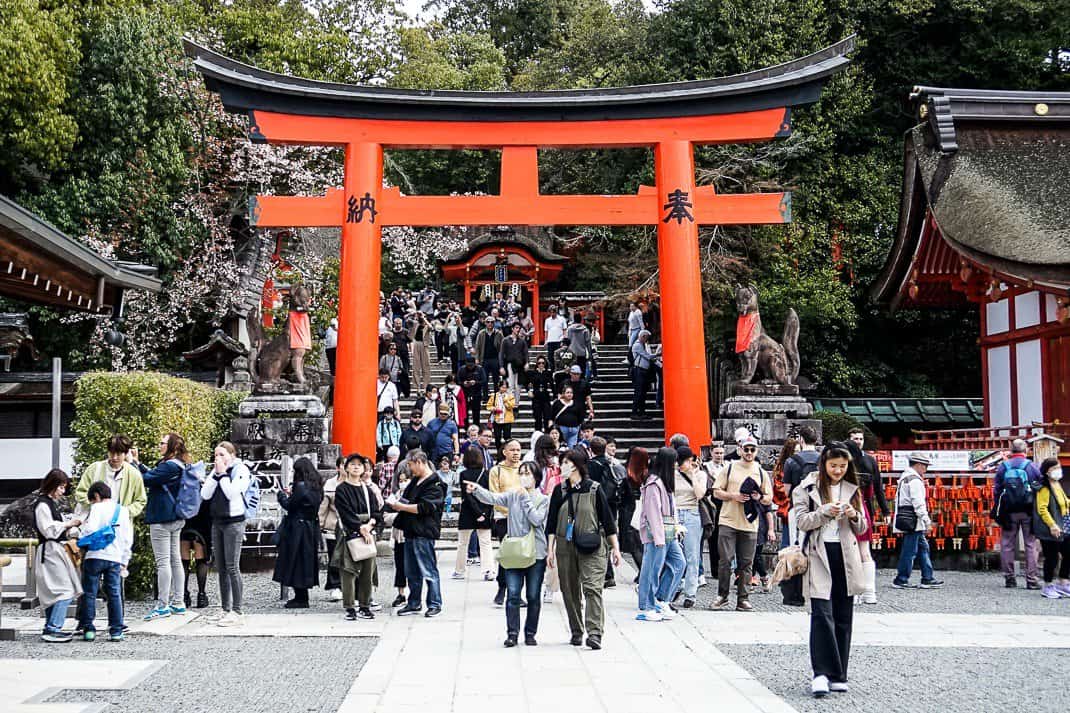
(This is the fourth of a series of blogs on Japan and Shanghai.)
KYOTO, Japan – The vermilion torii stretched in a graceful arc up the mountain slope as far as I could see. Torii are those beautiful Japanese arches with two vertical pillars connected by a black beam, slightly curved at the ends. They serve as gates to Buddhist temples and one of the international symbols of Japanese architecture.
At the Fushimi Inari-Taisha shrine, 10,000 torii snake below, above and around five huge temples. On the first sunny day of our recent week-long trip to Japan, walking through the torii could’ve been our highlight. It would be very tranquil to walk around a mountain slope under such a beautiful symbol of Japan recognized the world over ….
Table of Contents
… if it wasn’t for about 10,000 others who had packed the narrow pathway like it’s 5 p.m. in Tokyo.
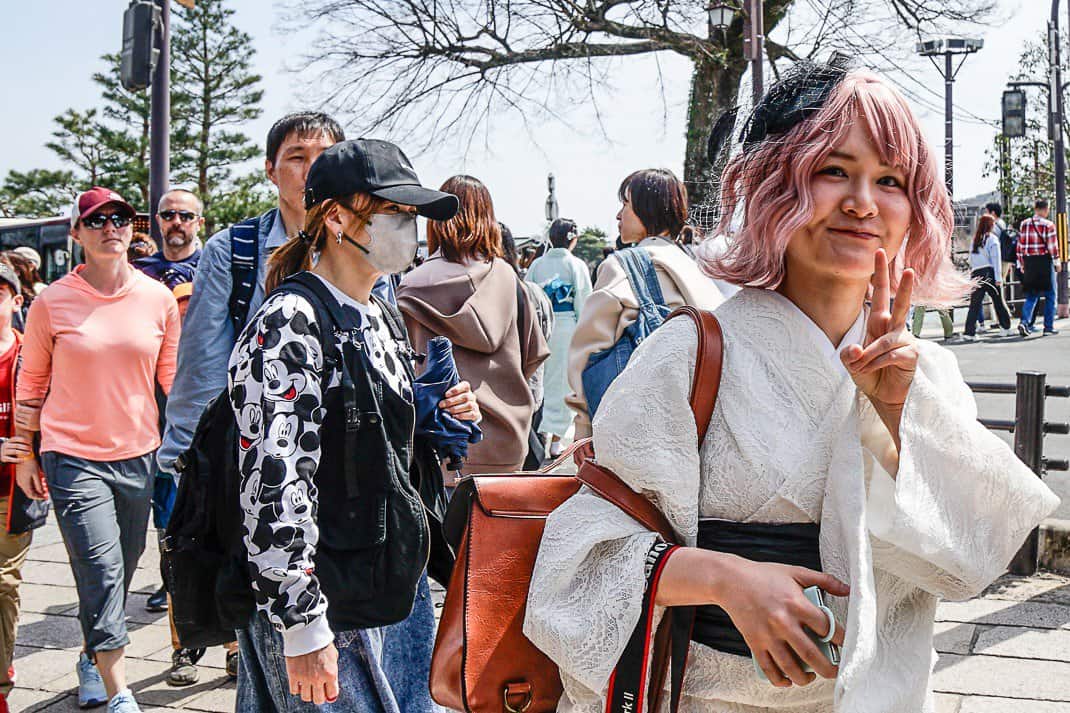
Kyoto is arguably the most beautiful city in Japan. It is its symbol of history, culture, religion and architectural splendor. It is home to 2,000 temples and shrines and 17 UNESCO World Heritage Sites. Kyoto is a must see, a site that’s atop even the most hardened backpacker’s checklist.
But Kyoto also has some horrid tourist traps that are as off putting as any I’ve ever experienced. Then again, this is Kyoto. For every temple overrun by selfie-clicking tourists there is a quiet sanctuary nearby where you can sit in a garden and look at green forests, birds chirping in the crisp air and koi swimming in lily covered ponds.
I know tourist traps. I live in Rome. I still shake my head at the long lines waiting to put their arm in the Bocca della Verita, this giant marble disc where if you put your arm through it and tell a lie it’ll be allegedly cut off.
Some places are touristy for a reason. Rome’s Colosseum is an architectural marvel. It’s why tourists visit.
But when the amount of tourists destroys the atmosphere that a site intended to create, it qualifies as a tourist trap. Kyoto has two vivid examples. While we suffered through crowds that would turn a claustrophobe screaming into the wind, we also found escapes that made us sigh and smile, experiencing the authentic Japan that we came to see.
Here was our two-day journey into the worst and best Kyoto has to offer:
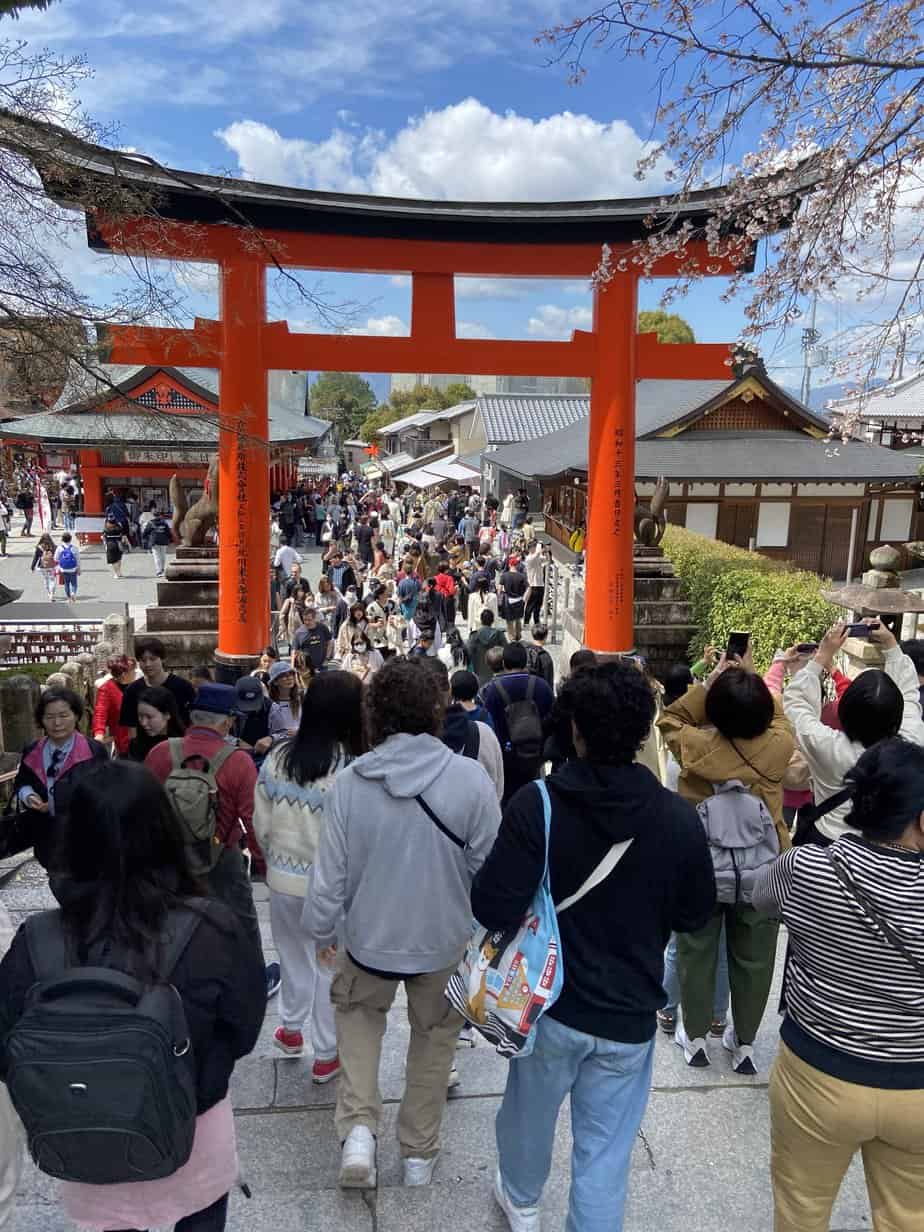
Kyoto’s Fushimi Inari-Taisha
I knew we were in trouble mid-morning when the local train out of Kyoto Station was as packed as a third world bus. Asians, Westerners and half a dozen languages filled the train car that disgorged us in a forested area on the southern outskirts of the city.
Lonely Planet listed Fushimi first among all sites, calling it “quite simply, one of the most impressive and memorable sights in Kyoto.”
Religiously, it is impressive. Built in the 8th century, the Hata family clan, the most prominent residents of Kyoto, dedicated it to the gods of rice and sake. Today it is the head shrine for 40,000 Inari shrines scattered around Japan. The Inari are popular deities associated with a variety of Japanese life, ranging from household wellbeing to rice.
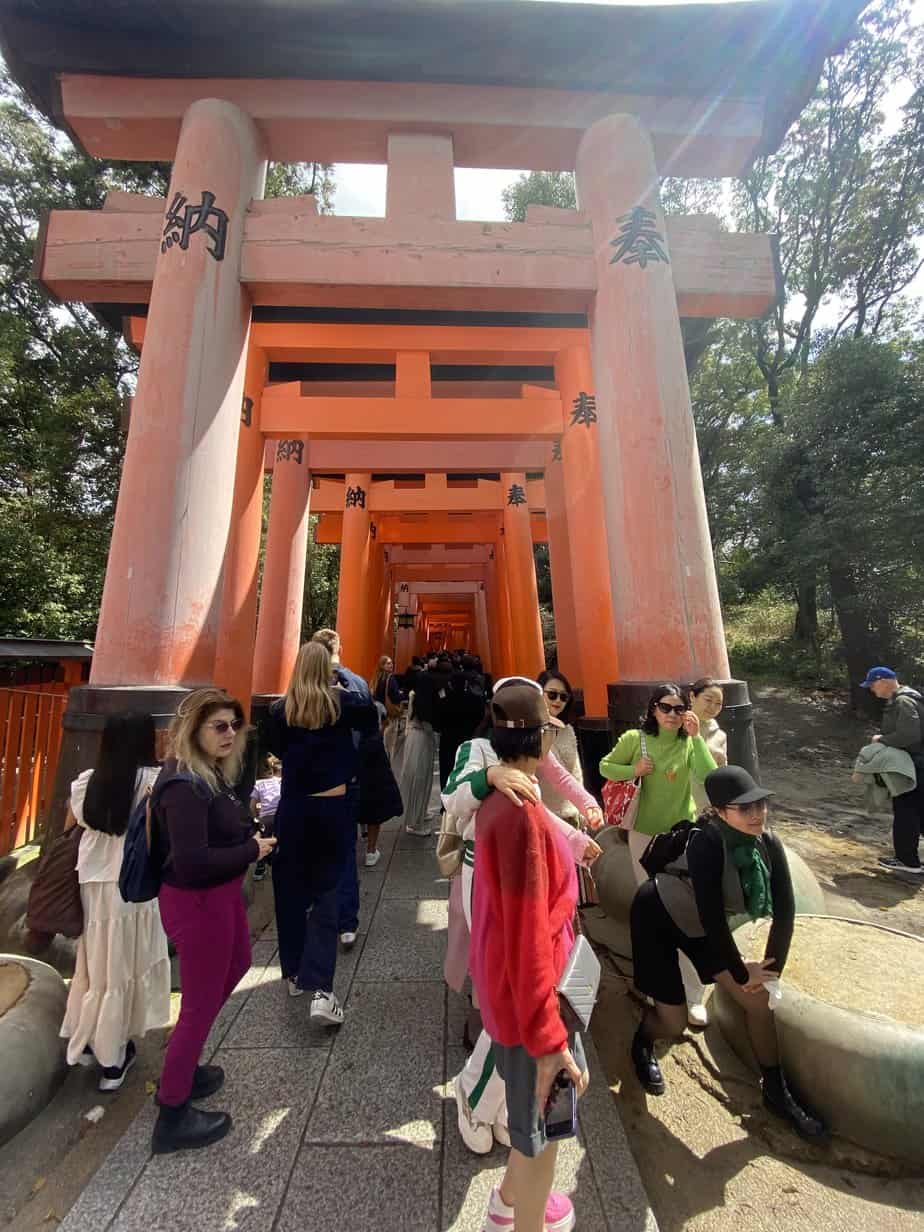
The problem is a lot of Japanese follow the Inari god. According to Nippon,com, the shrine attracts 2.7 million tourists a year.
We walked up a short hill to the first torii, a huge gate standing at least 20 feet high with the first temple just beyond another staircase. Filing through were not Buddhist pilgrims but travelers snapping selfies so fast they drowned out the birds singing overhead. Blonde Scandiunavians with backpacks. Japanese tourists with masks. Parents dragging children.
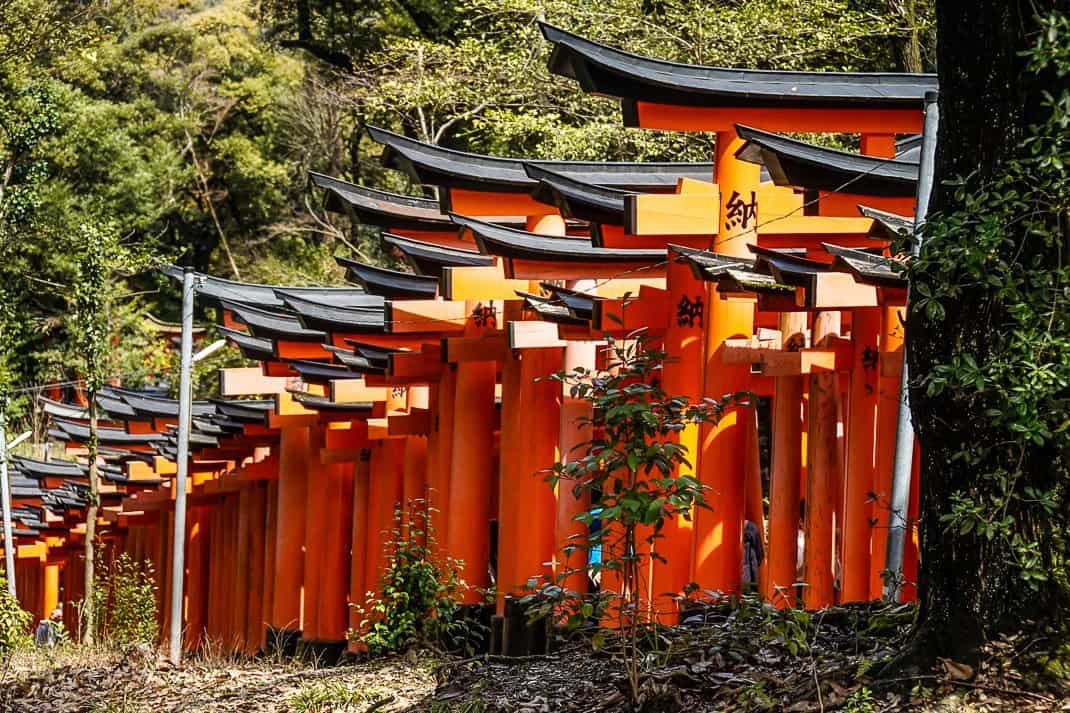
Past the first temple we entered the tunnel of torii. This stretches for four kilometers up the mountain. The torii are built so close together, the sun barely sneaks through. So many people jammed the pathway that is no more than five feet wide, I could barely see the lovely forest beyond the arches.
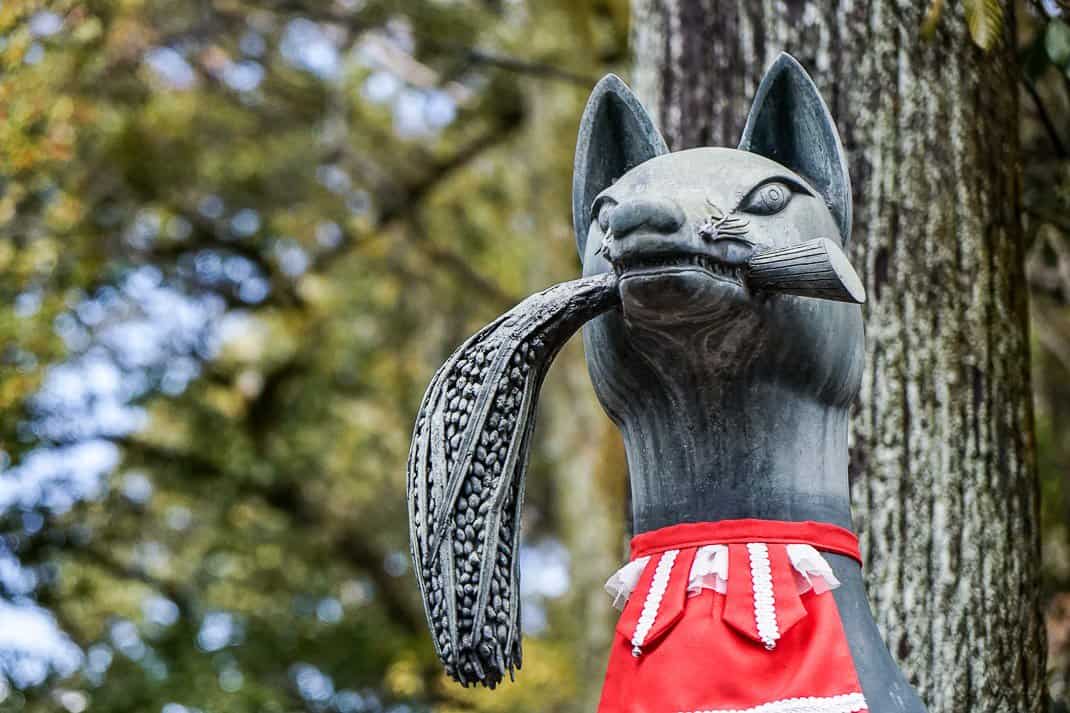
We found it a bit monotonous. We cut out after about 200 meters onto a more open path that returned us to the entrance. What we also found were statues of hundreds of foxes. The Inari considered the fox as their messenger and the god of cereals. Some of the foxes had in their mouths a rice stalk.
In Japanese culture, the fox is considered sacred with the ability to possess humans by entering under your fingernails. (I am not making this up.)
Marina and I looked at each other, shrugged and went in search of a sanctuary. We found it.
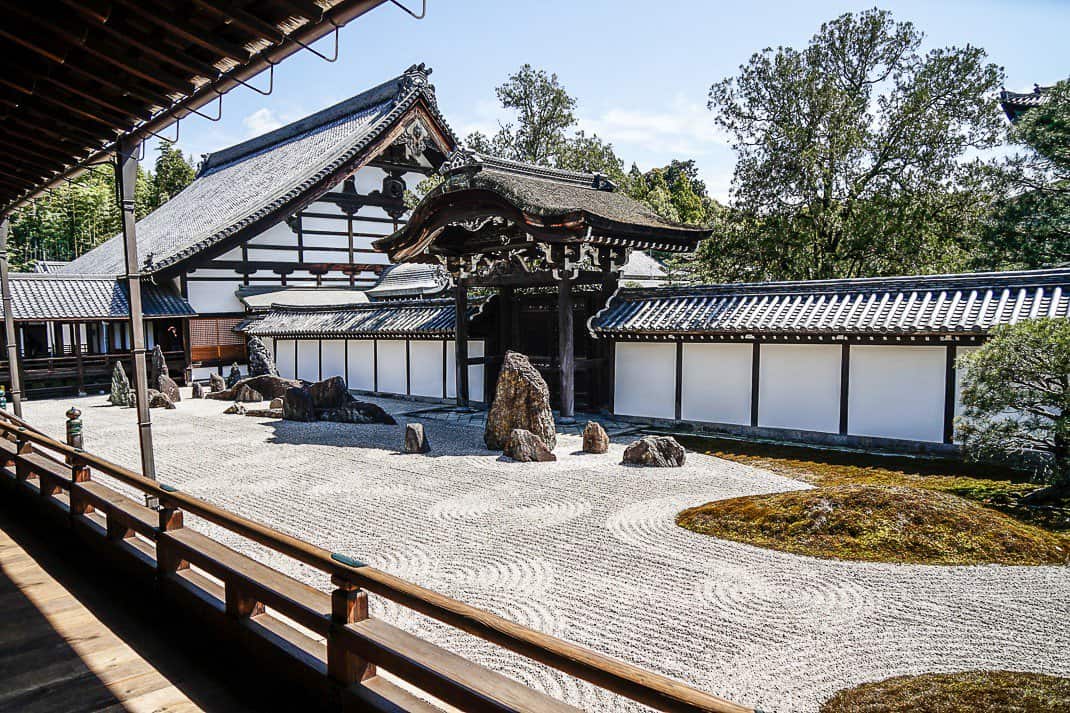
We got back on the jam-packed train headed to Kyoto but got off on the next stop. We walked through the quiet neighborhood, past a police station and down an empty street. We crossed a wooden bridge and passed under a huge gate, called San-mon, the oldest Zen main gate in Japan.
Tofuku-ji is what we imagined Japan would look like. Quiet. Beautiful. Peaceful. The renowned Buddhist priest Enni, believed to have introduced noodles to Japan from China, founded the temple in 1236 and to this day it hosts Zen meditation. It gives four lessons a month for beginners but it’s no tourist trap. It’s all in Japanese and you’re advised to get a translator if you want to know what the hell you’re chanting about.
We didn’t want to meditate. We wanted to sit and look in peace. You can do that at Tofuku-ji. It’s a series of brown and white pagodas set around a giant Bonsai tree.
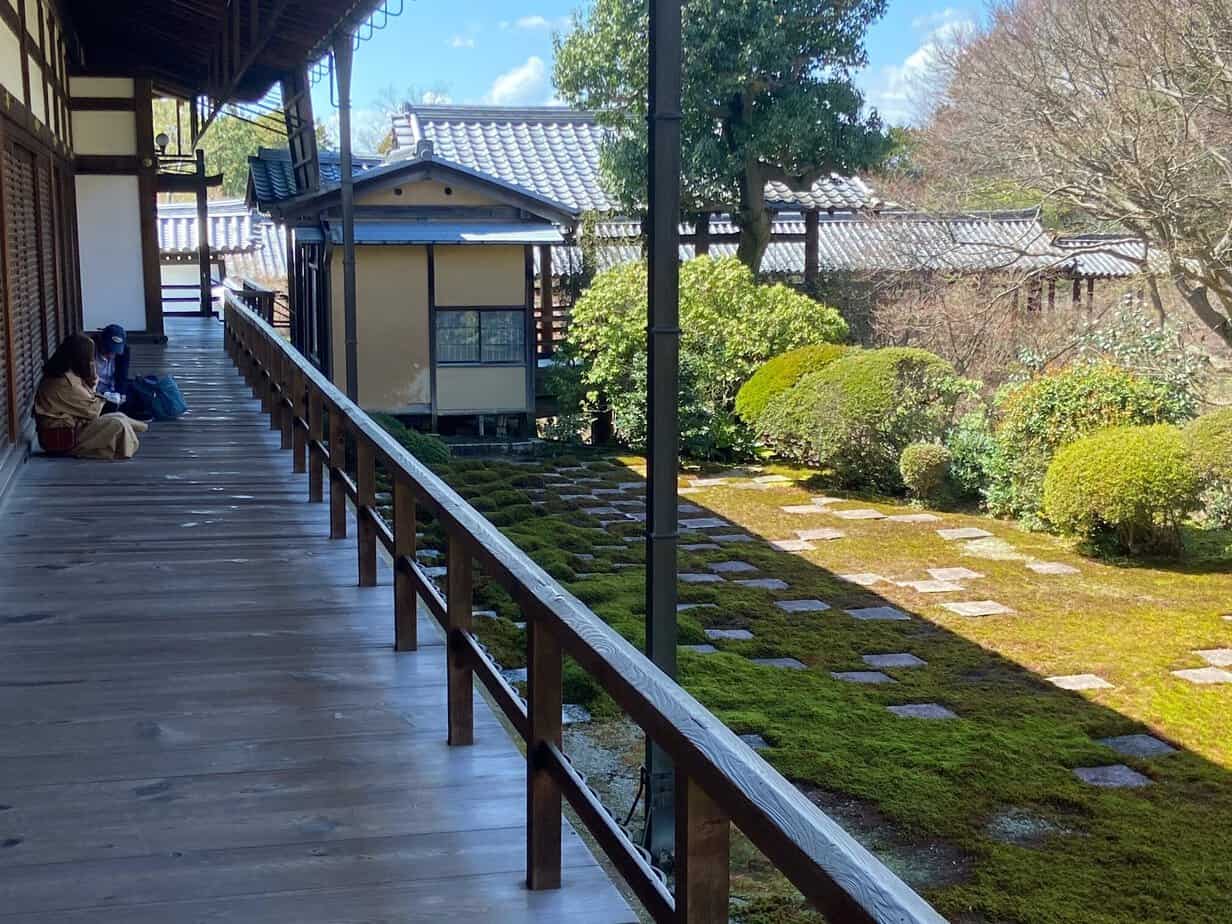
Gardens were constructed in 1938. After paying 800 yen (€5), we walked past a beautiful sand garden raked in a circular pattern and a rock garden neatly arranged with moss in a chequerboard formation.
A long structure ran alongside the garden where a young couple posed in traditional garb: him in a long gray robe and her in a white and gold kimono. Marina and I took a seat and looked at the garden. We heard a creek gurgling nearby. Birds chirped above. If I had a chair and laptop I could write there all day – and much more eloquently than I am right now.

Instead, I opened my cellphone translator and learned a new Japanese word: shizukana.
(Tranquil.)
Arashiyama Bamboo Grove
The following morning, on a brilliant 70-degree day, we went to another “must see” on the Kyoto checklist. It’s what’s commonly called the Bamboo Forest. It’s a narrow path through a towering forest of bamboo stretching more than 120 feet in the air. It’s beautiful in its simplicity, I read. So majestic in person, you’ll be disappointed with the photos.
It’s in Arashiyama, a town of 50,000 six miles (10 kilometers) west of Kyoto. We boarded a city bus that wound its way through the Kyoto that tourists don’t see: Corrugated fences. Drab houses. Charmless Honda dealerships.
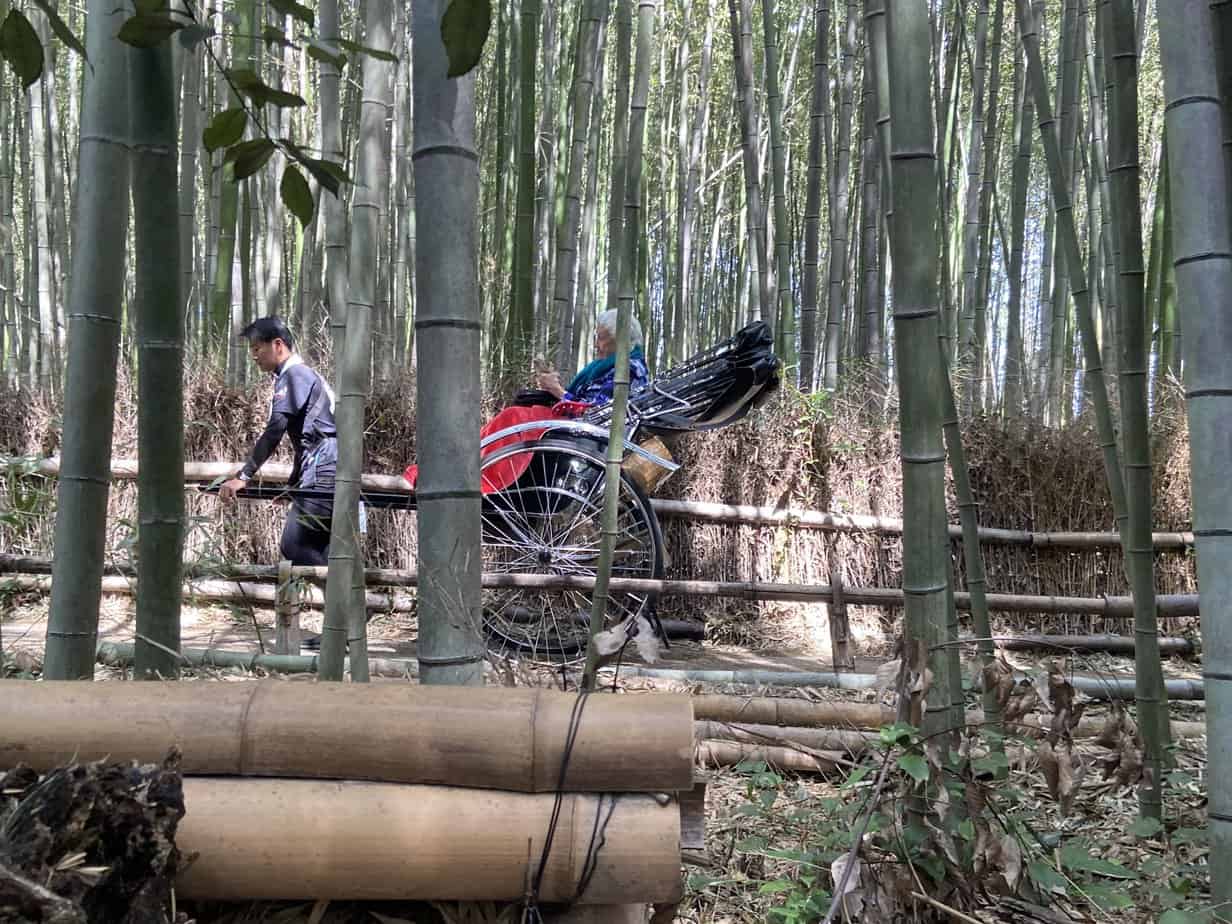
After 30 minutes the bus stopped by a river where Arashiyama was abuzz with scurrying tourists. Lining the main drag were souvenir shops selling everything from bamboo wall hangings to, admittedly, addicting pecan cookies.
We followed the mob up the street until we saw the entrance. Two massive, thick walls of green bamboo flanked a narrow path. We squeezed in between thousands of people. So touristy, part of the path was widened into the forest in order for tourists to snap selfies.
Any tranquility from the majestic tower of bamboo was lost in the caliphony of chatter and snapping cell phones. The lone highlight was an old Japanese man selling beautiful, handmade postcards featuring Mt. Fuji. The man smiled and chatted with everyone, having a pointed comment about everyone’s country. Marina told him we were from Rome.
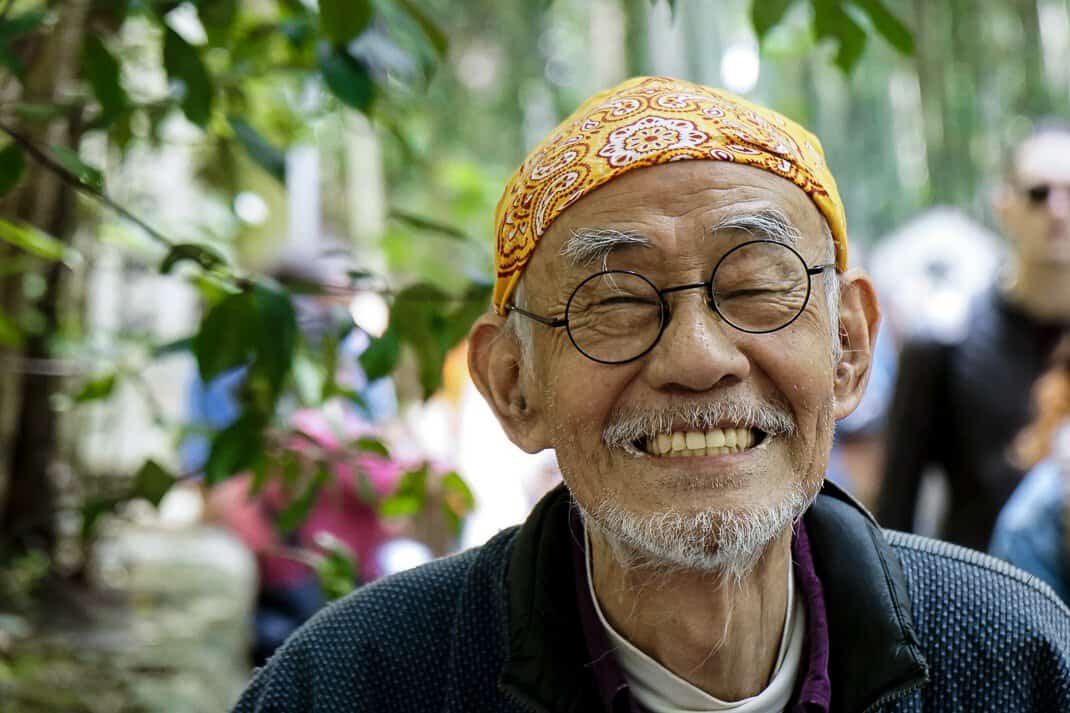
“BuonGIORNO!” the man said with a big smile. I bought four postcards for my wall and re-entered the human wave.

After 15 minutes, it spit us out above the forest where we saw an entrance to a villa. Feeling let down by a site that was more eye sore than iconic, I had no enthusiasm to pay to see someone’s old home.
I reluctantly paid 2,000 yen (€12) for two tickets. Just as Tofuku-ji saved us from Fushimi, the villa saved us from the Bamboo Forest.

Okochi Sanso Garden
Denjio Okochi was a famous actor in Japanese films from the 1920s through the ‘50s. He became famous for his roles as a swashbuckling sword fighter and in World War II films during the war.
After surviving the Tokyo earthquake of 1923 that killed 142,800 people, Okochi had a dream of building a shrine in a quiet part of the country. During the ‘30s and ‘40s at the height of his fame, he built a huge villa above the forest on the slopes of Mt. Ogura. He often came here for inspiration through meditation and prayer.
It opened to the public after his death in 1962 and is maintained as if he would come back any day.

As we passed the ticket booth, we sat in a big tea house with just a few people. The bitter tea seemed apropos for the lousy day I was having. However, as we toured the grounds, the day became very sweet.
A stone pathway meandered up the hill. With each turn we saw a new view of the gardens and Kyoto below. We soon came to his main house. Built on stilts, it sports a big wraparound balcony looking out over Kyoto and Mt. Hiei-zan and Mt. Dainon-ji beyond.
If the weather had cooperated and more cherry blossoms were out and if snow remained on the mountains, this wouldn’t be a villa. It would be a priceless tapestry in a Tokyo museum.

Continuing up we passed a stone pagoda and a little stone opening where two Japanese women ate lunch out of a bowl with chopsticks. Birds chirped
Farther up, we saw a guest house with tatami rugs in the bedrooms.
During our hour meandering among the gardens, houses and views, we saw maybe 10 people.
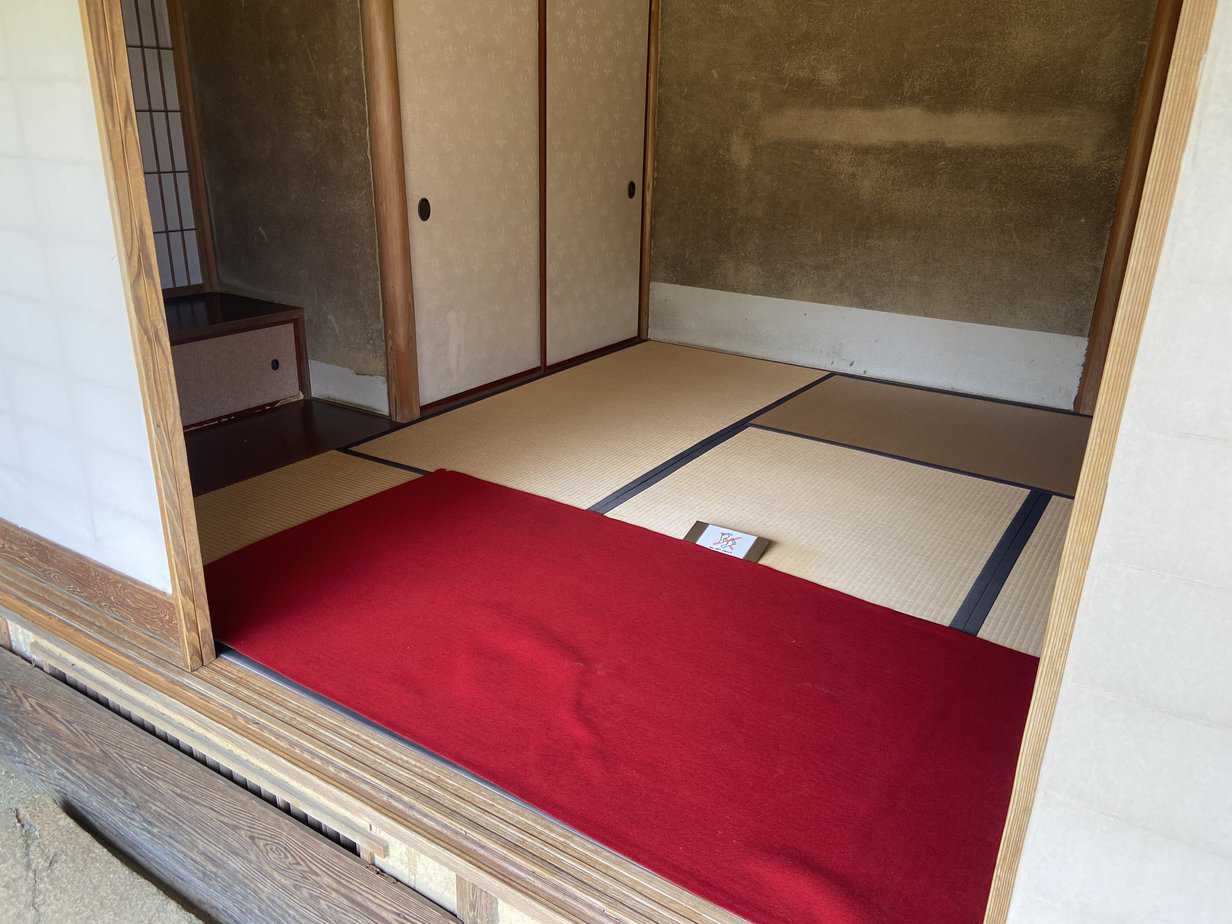
We then made our long walk down to town. The bus we took had just disgorged another mob toward the Bamboo Forest.
In two days I felt cheated. But both days our wanderings were rewarded. Welcome to Kyoto.
(Coming Tuesday: Japanese cuisine.)
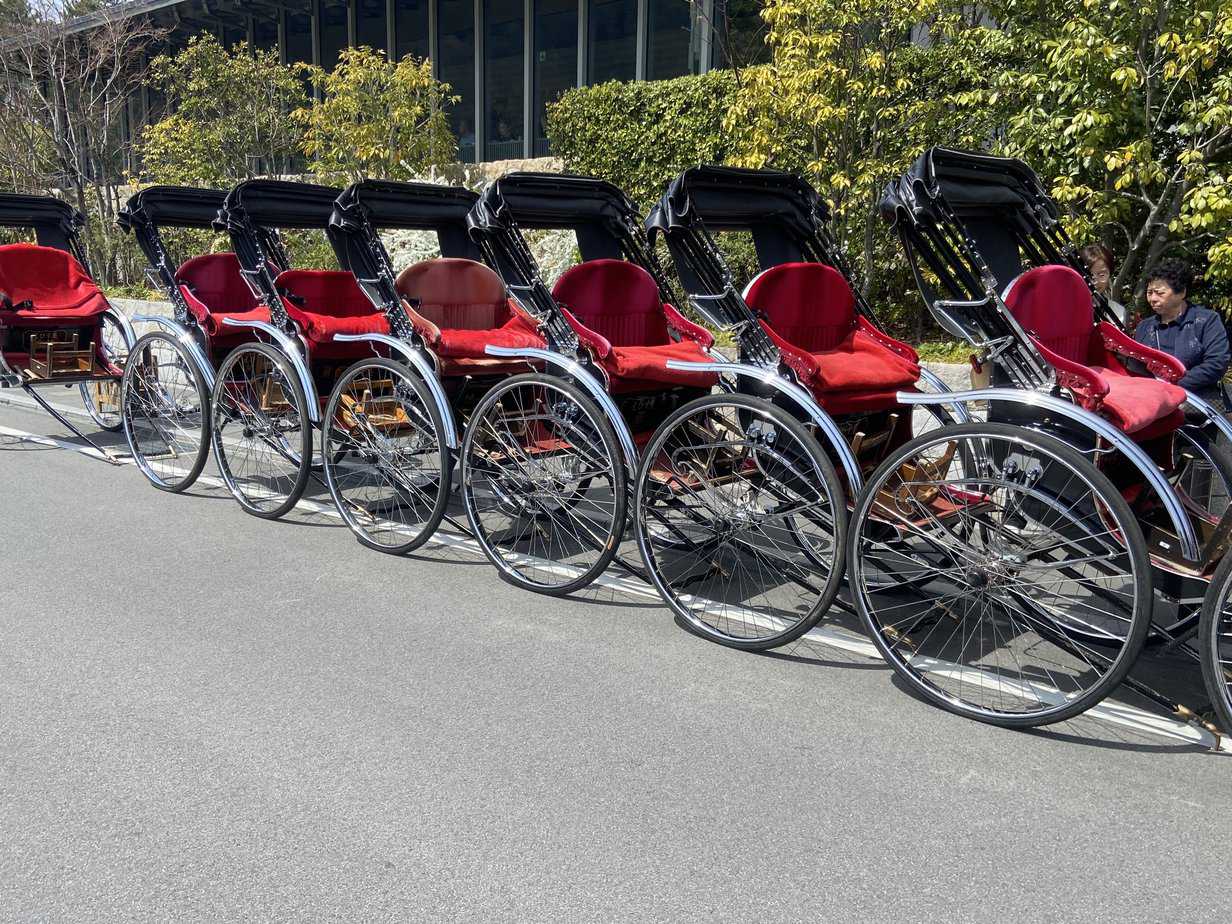
If you’re thinking of going …
How to get there: The Shinkansen leaves from Tokyo every 10 minutes and costs €85 one way. Kyoto has Kansai International Airport but is more expensive than flying to Tokyo and often requires two connections. Tokyo takes more direct flights.
Where to stay: APA Hotel Kyoto Ekihigashi, 552-1 Higashi Shiokoji Cho, Shimogyo Ward, 81-075-354-4111. Modern, 10-story, three-star hotel a five-minute walk from Kyoto Station. Near good, local restaurants. I paid €663 euros for four nights, including a good buffet breakfast.
Where to eat: Will cover in Tuesday’s blog.
When to go: Spring and summer. March through May highs average between 56-77. September-November it’s 63-84. Avoid July and August where highs are low 90s and more than 70 percent humidity.
For more information: Kyoto Tourist Information Center, 2nd Floor Kyoto Station Building, 81-075-343-0548, 8:30 a.m.-7 p.m. Another is on 2nd Floor of Kyoto Tower.
Sorry you ran into crowds! We visited Kyoto & Tokyo on spring break 2018, and lucked into peak cherry blossoms. The locals make quite the party out of the event, staking out a spot in the park for the day and drinking a LOT. We avoided the bamboo forest based on other reports like yours. However, we experienced a smaller but still beautiful and tranquil version at Kōdaiji Tenmangū Shrine. We also visited Fushimi Inari-Taisha but arrived around 5:30pm on our return from Nara and it was not crowded at that time. We certainly weren’t alone, but were fortunate to get some photos of the Tori without tourists. If you go again, perhaps those tips will help. It sounds like you made lemonade out of lemons in each case though.
Thanks for the note, Jim. We didn’t experience the hanami party, unfortunately. That would’ve been fun. Fushimi was truly awful, one of the worst travel experiences I’ve ever had.
I first stepped through the large torii at the entrance to Fushimi Inari Shrine over three decades ago on a beautiful spring morning. Walking through the hundreds and hundreds of gates undulating over the hillsides, warm sunshine dappling the fresh green leaves, I was wrapped only in quiet nature and encountered few other people. At one point I became aware of incense wafting through the trees, and venturing further up a hill began to hear someone chanting at one of the small shrines. After passing passed by quietly I made my way back down the hillside and exited the shrine, blessed with an experience I have always remembered as magical. I haven’t returned in recent years, having read how mass tourism and the ego-driven need to rush to crowded “must-see” venues and snap ever more selfies have destroyed the atmosphere that once defined the place. Really sorry to read you had such a dismal visit, but happy you at least managed to salvage your Kyoto visit by venturing off the trail to see things others are so intent on overlooking.
Great story, Tom. And I’m truly jealousy you experienced Fushimi the way it was intended. Maybe I’ll take the first morning train there next time.
Great article John. I did Japan for 21 days last May and was impressed with the general state of orderliness and cleanliness, certainly a rules based society. A suggestion for seeing the Fushimi Inari is to take the first morning train out of Kyoto and then double back to the Tofuku-ji on the way back. Understandably an early day, but the only way to see Fushimi without massive crowds. Would also highly recommend the Nishiki food market. Thanks again! May
Thanks, Tony. Next trip will be spent more in Tokyo then the north. “Abroad in Japan” made the north seem pretty cool, if you can avoid the earthquakes and tsunamis.
Leave a Reply Cancel reply
Your email address will not be published. Required fields are marked *
- Skip to main content
- Skip to primary sidebar

Destinations
- Plan Your Trip
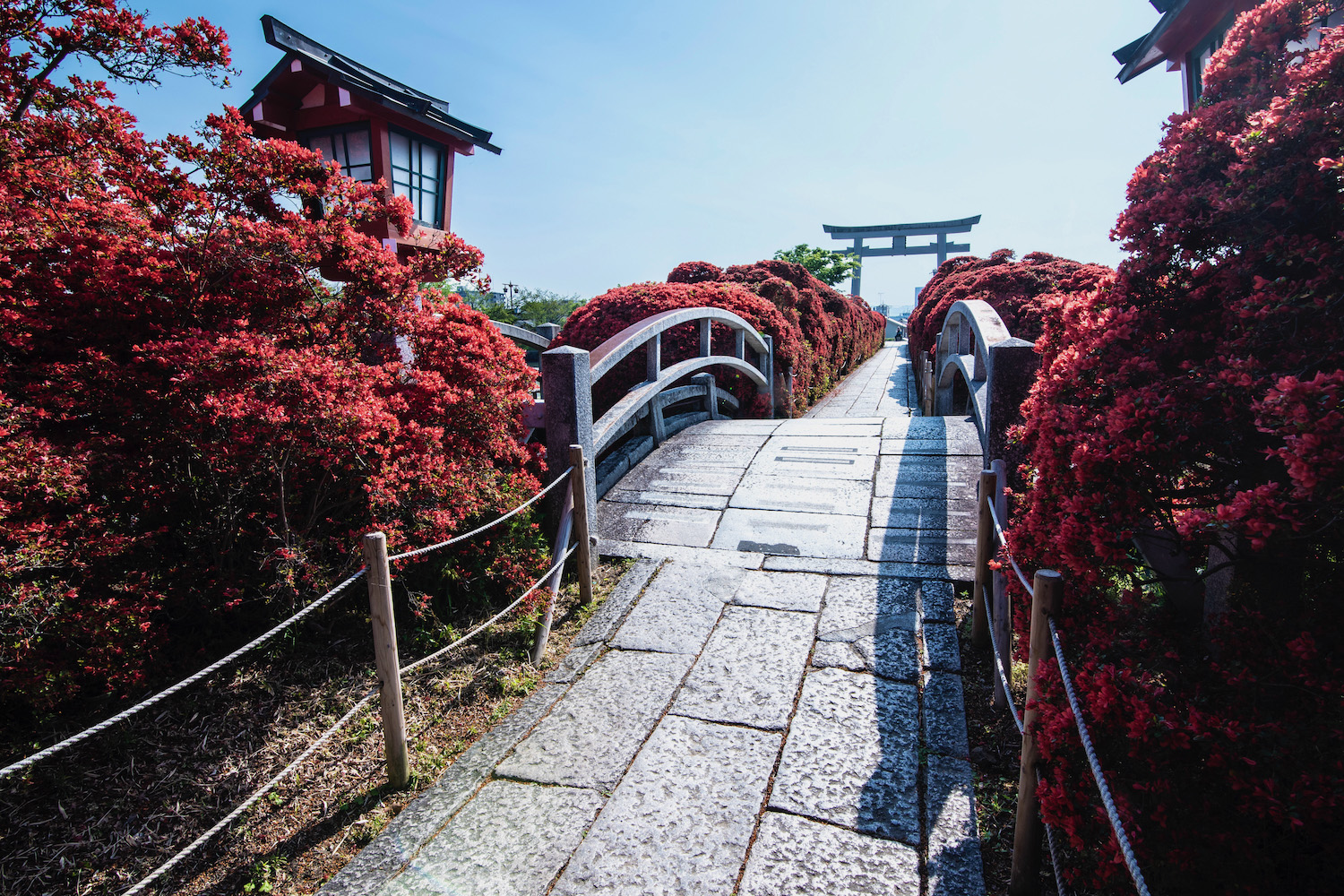
Kyoto off the Tourist Trail
September 23, 2022 by Robert Schrader Leave a Comment
It took me years of visiting the city to really embrace the unique things to do in Kyoto . And living there—it wasn’t until Kyoto’s tourist traps became everyday sight for me that I really wanted to get off its beaten path.
Now, some of you will be more proactive, or even on your very first trip to Kyoto. You might want to explore Arashiyama or temple hop in Higashiyama (both not both), and want to spend the rest of your time doing something truly singular.
Others are like me, and have simply spent so much time getting to know Kyoto’s more mainstream nooks and crannies that there’s simply nowhere else to go. No matter which camp you fall into, trust me: You’re in the right place!
The Truth About Kyoto as a Tourist Trap
When I was in Kyoto just last week, I made a point of re-visiting almost all my favorite typical attractions. I watches sunset behind Gion’s Yasaka Pagoda; I walked under the orange gates of Fushimi Inari Shrine ; I explored Arashiyama’s Sagano Bamboo Forest (albeit at the crack of dawn and as the remnants of a typhoon were blowing through).
The truth is that Kyoto’s tourist spots are famous for a very good reason; it does not make you a bad travelers to want to see them. The key is making sure they’re where your exploration of Japan’s former capital starts—not where it ends. Travel is not a zero-sum game, let alone in a city like Kyoto, where literally thousands of years of history converge.
My Favorite Unique Things to Do in Kyoto
Take a sake tour.
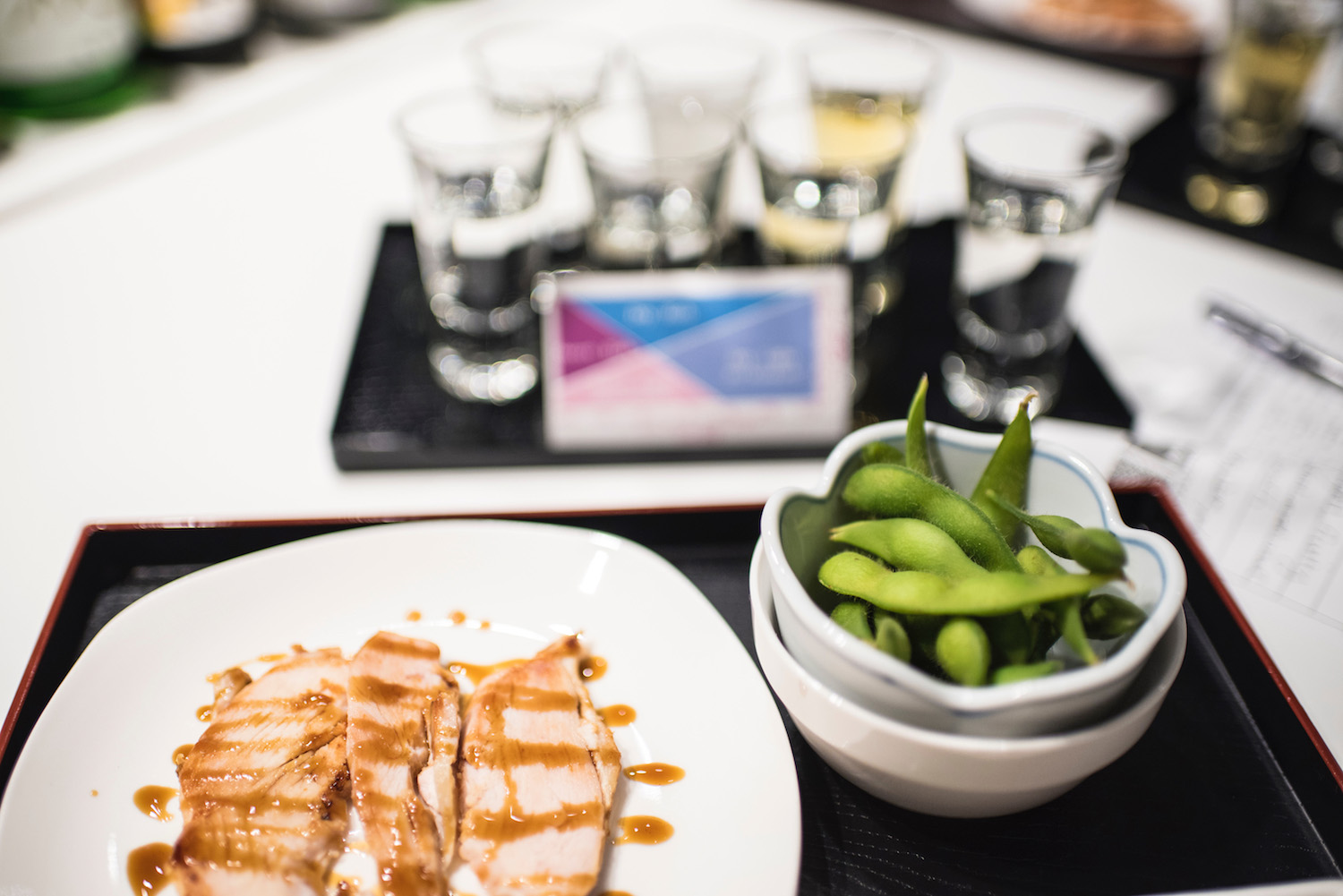
Speaking of Fushimi, did you know that this underrated district in southeastern Kyoto is one of Japan’s longest-standing and most prolific sake -producing areas? Consider pairing an excursion to Kyoto’s famous orange gates with the Kyoto Insider Sake Experience (which, incidentally, includes the option for a fascinating sake pairing session).
Hike to a waterfall temple
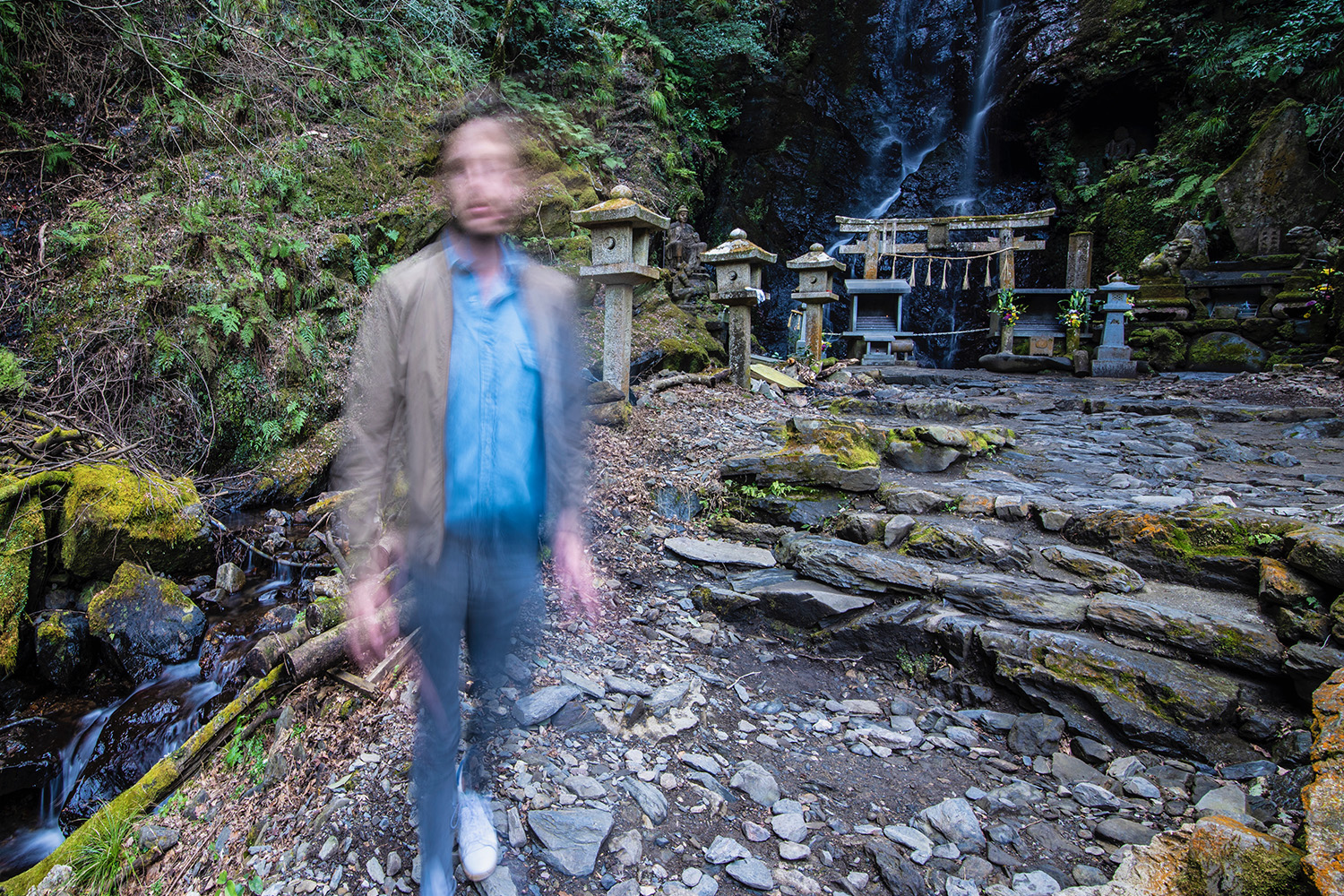
Indeed, many unique things to do in Kyoto aren’t actually far from more typical options. For example, after finishing up at Arashiyama’s Sagano Bamboo Grove, it’s just 30 minutes by foot or 5-7 minutes by bus to the trailhead of Kuya-no-taki, aka the “Waterfall Temple” or “Waterfall Shrine.” Even if you don’t personally bathe in its water, it’s still an enchanting (and barely-visited) place to explore.
Visit a tea plantation

The town of Uji , just south of Kyoto, is rightly associated with Japanese green tea. Unfortunately, Uji-proper is a tea-selling town, not a tea-producing one. For that, you need to travel eastward over the mountains to Wazuka. The easiest way to do this is to a rent a car and drive yourself, although the d:matcha tour company offers a publicly accessible transit option to reach its tea fields.
Stay in the original Nintendo headquarters
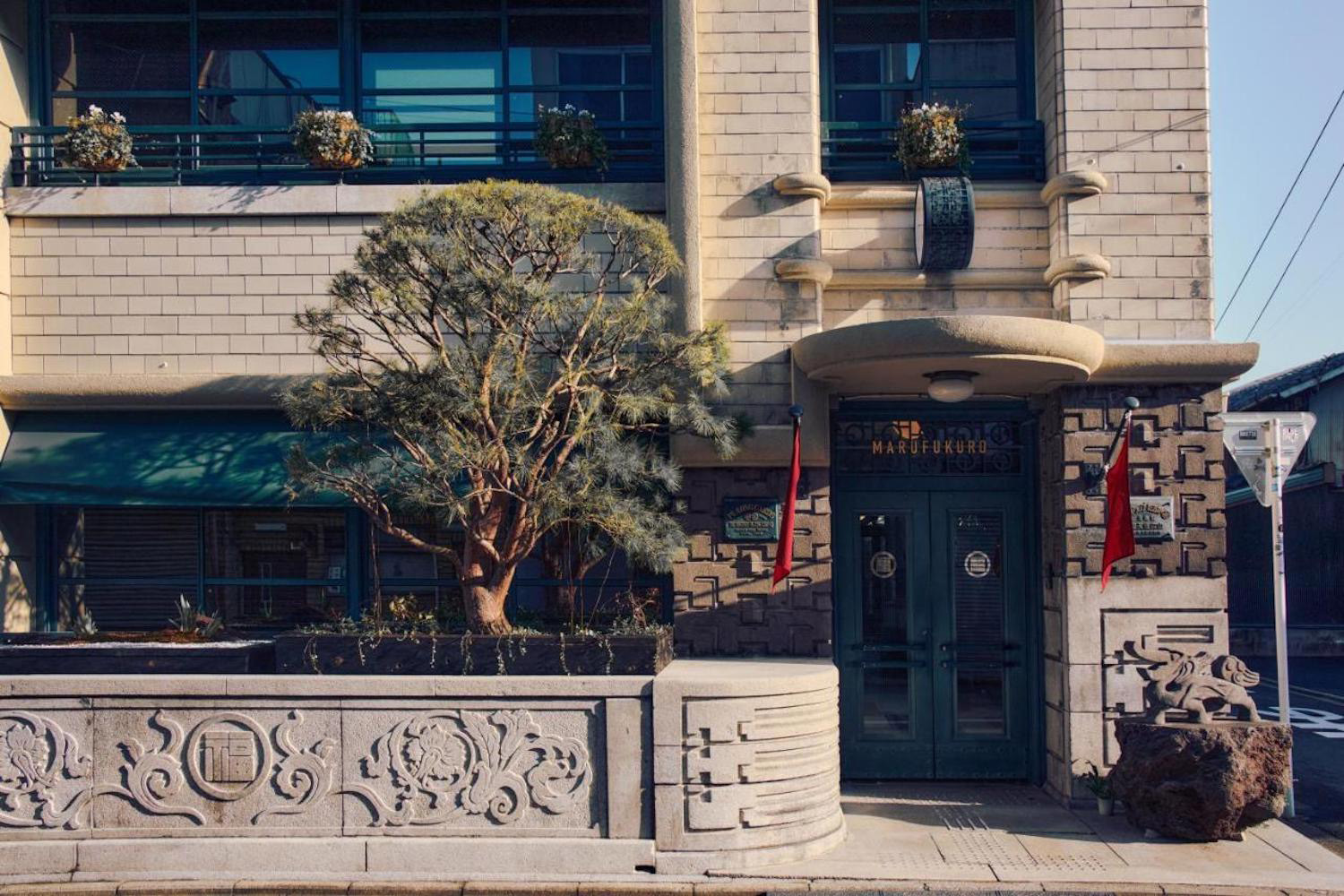
Did you know the Nintendo actually started in Kyoto, and as playing card company, not a video game one? This surprising knowledge is the foundation of one of the most unique things to do in Kyoto: Staying at Marufukuro , a five-star hotel housed in the former Nintendo Headquarters, just steps from the Kamo River in the charming Shimogyo district. This doesn’t come cheap, but it is priceless.
See seasonal flowers (besides sakura)
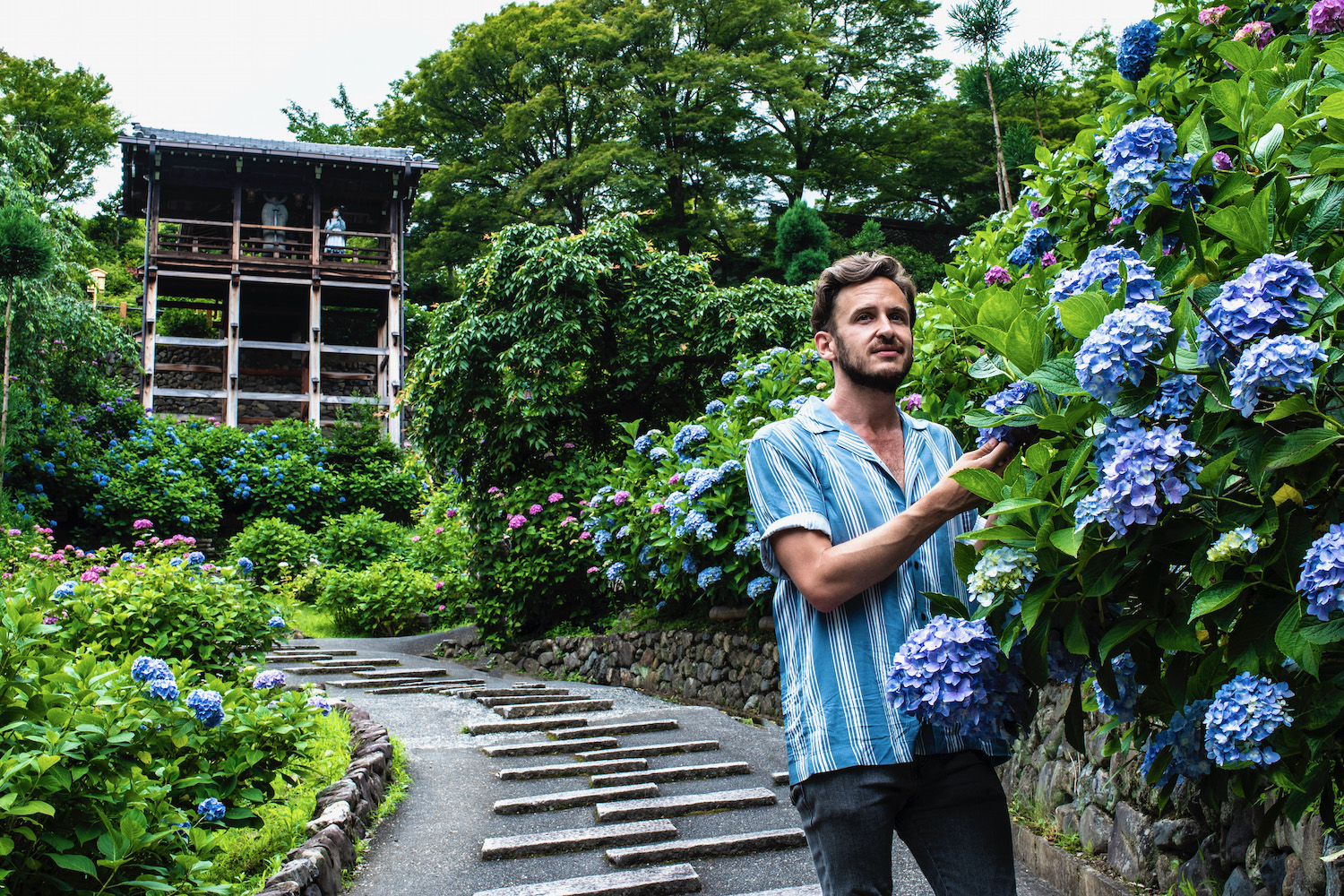
Kyoto is (rightly) known as one of Japan’s most famous destinations during cherry blossom season , but sakura are really only the beginning of the floral beauty to enjoy in Kyoto. In late April or early May, for example, the Nagaoka Tenmangu shrine in western Kyoto’s Nagaokakyo district erupt in a sea of deep red tsutsuji , or azaleas. June brings ajisai or hydrangea; ume (plum) blossoms are a must-see in February or March, especially at Kitano Tenmangu shrine near Kinkakuji.
Come in July for the Gion Matsuri
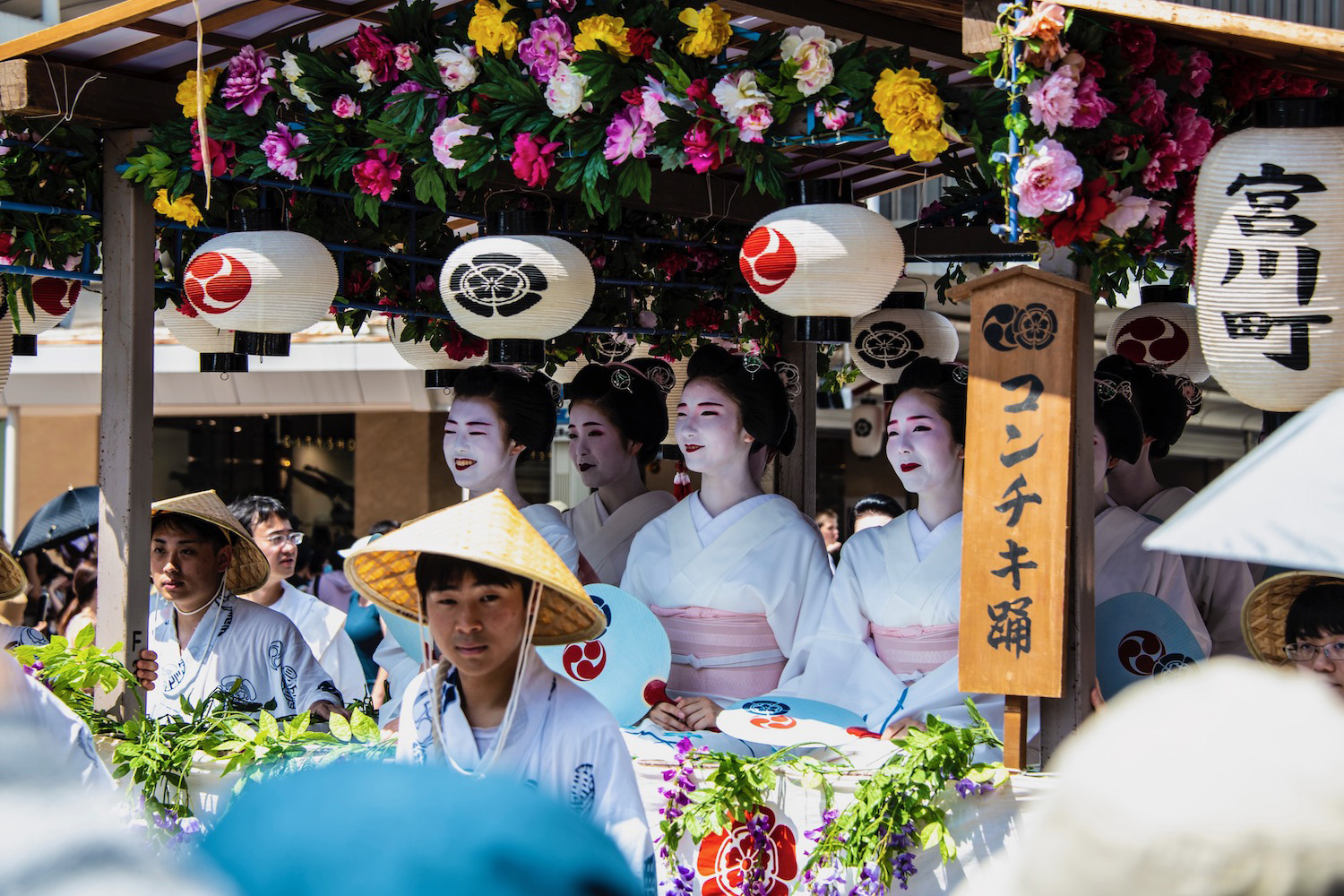
If you’ve ever been in Kyoto (or Japan at all) during the summer , the idea of willfully visiting in late July (the hottest, most humid time of the year) can seem maddening. However, I promise that if you come on July 17 or 24 (and, ideally, at least a day or two before either day), the payoff is great. I’m talking specific about the Gion Matsuri, which is a traditional that dates back more than a millennium and is one of the great summer festivals of Japan .
When is the Best Time to Visit Kyoto?
Although many travelers (understandably) love Kyoto amid the cherry blossoms and when the fall colors are blazing, it’s truly a 365-day destination. Winters are mild and mostly sunny (which is only a problem if you want to see the city covered in snow—it’s rare); summers, while hot and humid, are a great time to explore the city’s plethora of indoor destinations, not to mention nearby beaches on the ocean and on Lake Biwa .
Part of what makes the unique things to do in Kyoto I’ve spotlighted here so…well, unique, is that all are actually best enjoyed outside of peak travel times. Some people see visiting Japan in, say, May or September to be less than ideal, but for me it’s the opposite. Whether in Kyoto or one or the many alternatives to it , coming to Japan at different times of year is the opportunity to see the country from wholly different perspectives.
Other FAQ About Kyoto Off the Beaten Path
What is special in kyoto.
Everything is special in Kyoto! But as a former resident of the city, I honestly find the walk from the Ginkaku-ji Silver Pavilion all the way down to Kiyomizu-dera temple—aka all of Higashiyama—to be the most special way to experience the city. It also tends to be the most crowds; do it early in the morning, late at night or during off-peak months if you want the route mostly to yourself.
Is 4 days enough in Kyoto?
With 4 days in Kyoto, you can cover a lot of ground, although you can’t see “everything.” The reality is that being able to fully explore Kyoto takes many trips, and is something you can only do over months or years, and at different phases of your life. A four-day Kyoto trip is a great means of starting this process, however.
Is Kyoto easy to navigate?
Kyoto is easy to navigate in the sense that it’s a grid-pattern city, and that most of its attractions are concentrated in a few areas. What’s difficult for some people is that the subway is not very extensive; it’s necessary to use a combination of JR trains, private railways and buses in order to truly explore the city.
The Bottom Line
I hope you’re inspired to discover some of the more unique things to do in Kyoto . If you’re a culinary-minded traveler, you might have already decided to book a sake tour in Kyoto’s Fushimi District , or to rent a car so that you can drive to tea fields just east of Uji. If you’re more adventurous, you may decide to carve out space in your itinerary to hike to Arashiyama’s waterfall temple, while those seeking luxury make decide to book a night in the former Nintendo Headquarters. Whatever you’re seeking as your time in Japan’s ancient capital approaches, I do hope you’ll consider hiring me to plan your itinerary .
Plan Your Japan Trip

Subscribe to email updates!
Words, images and design ©2018-2024 Robert Schrader, All rights reserved. Read Privacy Policy or view sitemap .
Inside Kyoto
A Kyoto Travel Guide
How To Escape The Crowds In Kyoto
It’s no secret: Kyoto is crowded these days. But with a little planning and effort you can have entire temples and gardens to yourself. Here’s how to escape the crowds in Kyoto.

The Takeaway:
- Kyoto is more crowded than ever before.
- However, only about a dozen spots are really crowded.
- It’s easy to avoid the crowded spots.
- Quiet spots are often right around the corner from busy spots.
- Cherry blossom season (late March~early April) is the most crowded season.
- Golden Week (early May) and foliage season (November) are also crowded, but not too crowded for travel.
- Visit popular spots on weekdays, just after opening or just before closing.
- Use our off-the-beaten-track itineraries to avoid the worst crowds.
Check Hotel Availability
Destination, check-in date, check-out date.

The Details
- In recent years, Kyoto has been receiving record numbers of foreign tourists. The main reason for this is a change in Japanese visa requirements for nearby Asian nations like China. Kyoto is now flooded with Chinese tour groups (along with Korean, Taiwanese, Thai and many others). Western visitors are also coming in record numbers, attracted by the affordability of Japan due to weak yen.
- The result is that Kyoto is now filled to capacity with tourists. And in busy seasons, it’s way beyond capacity. So, what are you going to do?
- Here’s the good news: The vast majority of tourists, especially those in tour groups, visit a very small number of locations in Kyoto. That leaves leaves the rest of the city relatively free from crowds, even in busy seasons like April and November.
- So, don’t be put off by stories of big crowds in Kyoto. Places are crowded because everyone goes there. Don’t be everyone! Be an individual – go your own way. Here’s how.

Avoid Crowded Places in Kyoto
If you want to avoid crowds, you have to know where they gather. Here is a list of the most crowded places in Kyoto, in order of most crowded first.
- Kiyomizu-dera Temple
- Streets leading to Kiyomizu-dera Temple (especially Matsubara-dori)
- Fushimi-Inari-Taisha Shrine
- Nishiki Market
- Ginkaku-ji Temple
- Kinkaku-ji Temple
- Ryoan-ji Temple rock garden
- Tofuku-ji Temple during foliage season
- Eikan-do Temple during foliage season
- Nijo-jo Castle

Crowded Seasons in Kyoto
If you want to avoid the crowds, then you might want to avoid the really busy seasons, which are:
- Cherry blossom season: late March~early April
- Golden Week: first week of May
- Foliage season: November
- Of these, cherry blossom season is by far the most crowded. To be honest, considering the higher rooms rates you’ll pay, the crowds you’ll have to deal with, and the frequently cool and rainy weather, we just don’t think it’s worth visiting in cherry blossom season. If you can just wait a few weeks until after May 7 (the end of Golden Week), you’ll get cheaper rooms, fewer crowds, better weather and plenty of blooming flowers and trees. Indeed, we consider May to be the best month to visit Kyoto. But, if you insist on visiting during cherry blossom season, you can avoid the crowds with our Kyoto One-Day Off-the-Beaten-Track Cherry Blossom Itinerary .
- Golden Week is a Japanese holiday that is a popular time for Japanese to travel. It’s not as crowded as cherry blossom season, but it’s still best to avoid if you don’t like crowds.
- The fall foliage season is not as crowded as the cherry blossom season, so it’s not necessary to avoid this season. Just be sure to book rooms well in advance. If you visit during foliage season, you can avoid the crowds with our Kyoto Off-the-Beaten Track Fall Foliage Itinerary.
Take a Few Steps Off the Beaten Path
Often, you’ll find quiet spots in Kyoto just a few steps away from the famous, crowded spots. Here’s a list of quiet spots located near famous, crowded spots:

Go During Quiet Times and on Quiet Days
Of course, some of the crowded places we’ve mentioned on this page are well worth visiting. But, if you want to really enjoy them, it’s crucial to go when they are not crowded. Just go right after the place opens, or within an hour of the place closing. And, keep in mind that shrines and some parts of big temples like Nanzen-ji are open 24 hours a day, so you can stroll the grounds in the early morning or early evening almost entirely by yourself. Also, if you have a choice, visit on a weekday rather than on a weekend. Mondays are usually the least crowded, but remember that most museums are closed on Mondays.

Go to “Secret” Spots
There are over a thousand temples in Kyoto, but only about a dozen of them are world famous. The same is true for shrines, gardens, restaurants and shops. There are entire districts of Kyoto that lie off of the beaten tourist track. The temples of far Northern Higashiyama are beautiful and usually deserted. Highlights in this area include Manshu-in , Shisen-do and Enko-ji . Likewise, in Arashiyama , if you walk north of the busy Bamboo Grove area, you’ll find several quiet spots like Gio-ji and Adashino-Nembutsu-ji . And, the subtemples of Myoshin-ji and Daitoku-ji are usually very quiet.
Off-the-Beaten-Track Itineraries
To help crowd-averse travelers, we’ve created several special off-the-beaten-track itineraries:
- Kyoto Half-Day Off-the-Beaten Track Itineraries
- Kyoto One-Day Off-the-Beaten-Track Cherry Blossom Itinerary
- Kyoto Off-the-Beaten Track Fall Foliage Itinerary
Where to Stay if Kyoto is Fully Booked
If you come during cherry blossom season, Golden Week or fall foliage season, you might find it nearly impossible to get a room. Don’t despair, there are plenty of places nearby where you can likely find a place to stay. Visit our Where to Stay if Kyoto is Fully Booked page for details.
Kyoto Vacation Checklist
- For all the essentials in a brief overview, see my First Time In Kyoto guide
- Check Kyoto accommodation availability on Booking.com and Agoda.com - often you can book with no upfront payment and free cancellation
- You can buy shinkansen (bullet train) tickets online from Klook - popular routes include Tokyo to Kyoto , Kyoto to Osaka and Kyoto to Tokyo
- Need tips on where to stay? See my one page guide Where To Stay In Kyoto
- See my comprehensive Packing List For Japan
- Buy a data-only SIM card online for collection when you arrive at Kansai International Airport (for Osaka and Kyoto) or Tokyo's Narita Airport . Or rent an unlimited data pocket wifi router
- Compare Japan flight prices and timings to find the best deals
- If you're making frequent train journeys during your visit, you might save money with Japan Rail Pass – see if it's worth it for you
- A prepaid Welcome Suica card makes travelling around Kyoto easy – here's how
- World Nomads offers simple and flexible travel insurance. Buy at home or while traveling and claim online from anywhere in the world
Kyoto District Map

- Central Kyoto
- Northwest Kyoto
- Northern Higashiyama
- Southern Higashiyama
- Downtown Kyoto
- Kyoto Station Area
- South East Kyoto
Disclosure: InsideKyoto.com is a participant in the Amazon Services LLC Associates Program, an affiliate advertising program designed to provide a means for sites to earn advertising fees by advertising and linking to amazon.com and amazon.co.uk. World Nomads provides travel insurance for travellers in over 100 countries. As an affiliate, we receive a fee when you get a quote from World Nomads using this link. We do not represent World Nomads. This is information only and not a recommendation to buy travel insurance.

Two of Japan’s Most Popular Attractions Are Limiting Tourists
The crackdown comes amid concerns about overtourism and bad tourist behavior..
- Copy Link copied

There have been reports of tourists harassing traditional geisha entertainers and entering private property in Kyoto’s popular Gion district.
Photo by Tianshu Lui/Unsplash
In the year and a half since Japan reopened its borders to travel following the COVID-19 pandemic, hordes of foreign visitors have returned to the Land of the Rising Sun. More than 25 million travelers descended on Japan in 2023, with more than 2.7 million people visiting in December alone, exceeding figures for the same month in 2019 by more than 8 percent.
Now Japan is outlining new plans to counter problems with bad visitor behavior and overtourism, including banning tourists from select streets in a popular geisha district in Kyoto and limiting the number of trekkers who can climb Mount Fuji, the tallest peak in the country.
Kyoto to restrict tourists from entering areas of the Gion district
The restrictions to Kyoto’s Gion neighborhood, where traditional geisha entertainers and their maiko (teenage apprentices) work, will roll out first, sometime in April. The area has long been a magnet for tourists hoping to catch a glimpse and take a photo of the performers known for wearing elaborate kimonos, traditional hair pins, and characteristic white makeup as they walk from teahouse to teahouse. Over the years, there have been reports of overzealous tourists harassing the women and traipsing onto private property, even though signage informs visitors not to photograph the performers without their consent.

In Kyoto’s Gion district, travelers will still have access to popular tourist attractions such as the 1,300-year-old Yasaka Shrine.
Photo by Ceci Li/Unsplash
Local district official Isokazu Ota told the Associated Press , “We are going to put up signs in April that tell tourists to stay out of our private streets.” The signs will say in both Japanese and English that these are private roads and that those who walk on them will be fined 10,000 yen (US$68 based on current conversation rates).
It’s worth noting that the ban will be limited to certain private streets in Gion—travelers will still be able to walk the public streets to visit popular tourist attractions such as the 1,300-year-old Yasaka Shrine and the scenic Tatsumi Bridge.
Mount Fuji to require fee and limit the number of daily climbers
One hundred fifty miles away, Mount Fuji isn’t banning tourists outright, but the famed UNESCO World Heritage site is implementing a daily visitor cap of 4,000 people per day and charging climbers 2,000 yen (US$13.50 based on current conversion rates) for the opportunity to make the trek to the top of the 12,388-foot snow-capped stratovolcano. The new rules will begin July 1, 2024, when the trekking season begins.

Starting this summer, Mount Fuji will cap the number of daily visitors at 4,000.
Photo by simpletun/Shutterstock
In recent years, more than 400,000 people have summited Mount Fuji in the two months in late summer when it is allowed—that’s roughly 7,000 people a day—not counting the many more who hike to lower elevations on the mountain (the largest base station, called Subaru, saw 4 million visitors in the summer of 2023, for example). The result is human traffic jams and garbage problems , both of which pose environmental concerns to the volcano that is sacred to many Japanese people. The visitor cap and additional fee are meant to help unburden Mount Fuji and keep it clean. Additionally, the funds will be used to hire guides to enforce safety measures, like deterring ill-equipped hikers from wearing the wrong clothing or footwear, not allowing people to sleep on the side of the trail or build fires, and educating climbers about general mountain etiquette (in 2023 alone, 61 rescue calls were made by unprepared trekkers).
Although Japan is limiting who can visit areas of Gion and Mount Fuji, the country is rolling out the welcome mat for foreigners in other ways. Japan’s Immigration Services Agency recently announced plans to begin issuing six-month digital nomad visas to citizens from 49 countries, including the United States, up from the previous limit of 90 days. The program is slated to launch by the end of March.

Gaijinpot Blog

Japan’s Worst Tourist Traps and Where to Go Instead
Some of the most famous destinations in Japan aren’t as great as advertised, but a better option might be just around the corner.
By Laura Payne Oct 26, 2023 5 min read
The best destinations in Japan include serene traditional streets and ancient temples in places like Kyoto. In Tokyo, iconic “must-see” attractions such as the Tokyo Tower or the “exhilarating” experience of cruising in go-karts are hard to miss.
However, while these activities offer a glimpse into the culture and are undoubtedly enjoyable for some, they only tell part of the story. Japan’s frequently recommended destinations have earned their reputation for good reasons. Yet, they can often be swamped with tourists. These sites sometimes cater so heavily to foreign visitors that they risk becoming mere reflections of travelers’ preconceptions rather than showcasing the authentic essence of Japan.
Thankfully, for those eager to dig a bit deeper, Japan is peppered with innumerable hidden gems. These lesser-known spots can satisfy your wanderlust, providing experiences that echo the allure of the more renowned locales without the crowds.
Trade Kyoto for Kanazawa

Kyoto is undeniably one of Japan’s top tourist magnets. However, the reality of its overcrowded streets can shatter the dreams of visitors hoping for a tranquil cultural experience. Moreover, the traditional charm of Kyoto is predominantly confined to the streets of Gion. While Gion offers a glimpse into the past, it often feels like a repetitive tableau, with everyone aiming to capture the same photograph. The geisha, iconic symbols of Kyoto, are constantly swarmed, their daily lives interrupted by photos without consent.
Instead of battling the crowds in Kyoto, consider Kanazawa in Ishikawa Prefecture. Historically, Kanazawa has rivaled Kyoto enough to earn the nickname “Little Kyoto.” It remained relatively secret from the tourism onslaught thanks to the city’s less direct accessibility by the Shinkansen bullet train until recent years.
The Higashi Chaya District in Kanazawa mirrors Kyoto’s Gion in many ways, with beautifully preserved wooden buildings lining the streets, and geisha are rooted in the city’s cultural heritage. Kenrokuen is one of Japan’s most splendid gardens, often contrasting Kyoto’s Kinkakuji or Ryoanji’s beauty and serenity. The city also boasts districts dedicated to crafts such as gold leafing—including gold leaf ice cream!
Himeji Castle Over Osaka Castle

Those who want to see a castle that has stood since the days of samurai should skip Osaka Castle. Although the site’s history stretches back centuries, the current tower is not the original structure but a concrete reconstruction that houses a modern museum.
One must travel beyond Osaka to Himeji Castle in Hyogo Prefecture for a genuine glimpse into Japan’s architectural past. This majestic structure is a testament to Japan’s architectural resilience and historical richness. It has weathered the turbulent Warring States Period and emerged unscathed from the ravages of World War II bombings and the devastating Great Hanshin Earthquake of 1995.
Recognized as a national treasure and a World Heritage site, Himeji Castle’s main tower captivates visitors with its stunning beauty, intricate early 17th-century architectural designs, and innovative defensive features.
Asakusa’s Crowded, Nezu is Hidden

Renowned for its blend of historical landmarks like Senso-ji Temple and contemporary marvels like the Tokyo SkyTree, Asakusa is a quintessential Tokyo locale that beautifully juxtaposes Japan’s ancient and modern facets. However, this district also ranks among Tokyo’s most crowded spots. Visitors often find themselves in long queues at the SkyTree, and the throngs at Senso-ji can feel overwhelming and sometimes overshadow the temple’s tranquil essence.
To experience Japan’s spirit of tradition and modernity without annoying crowds, head to Bunkyo in Tokyo and spend a day at Nezu Shrine. This historic Shinto shrine, with its serene ambiance and traditional architecture, dates back a millennium, making it one of Tokyo’s oldest. Nezu Shrine is particularly famous for its beautiful azalea garden, which blooms vibrantly in April and May.
The vermilion torii gates leading to the shrine, reminiscent of Kyoto’s Fushimi Inari Shrine but less crowded, are another captivating sight. Wander the temple grounds, and you’ll discover ponds, stone lanterns, and small pavilions that perfectly epitomize Japan’s harmonious blend of nature and spirituality. Visitors can immerse themselves in this tranquil environment, attend seasonal festivals, and even enjoy the charm of the Yanaka area, known for its preserved old Tokyo atmosphere.
Street Karts? Try Real Racing Instead

Go-karting in Tokyo might look like it would be a real-life Mario Kart experience. However, in contrast to the high-speed antics of the video game, participants travel considerably slowly for safety reasons when exploring Tokyo’s roads.
Instead of this tour, why not try the real thing? In Fukushima Prefecture, Drift Taxi allows visitors to ride as passengers in modified taxi cabs with professional drivers who drift and do donuts around a course. Tokyo Supercars drive through the city’s iconic skylines and the picturesque Hakone region in supercars like the McLaren 720S and Ferrari 458 Spider. Tokyo’s Tokyo Drift is a tour service that takes you across some of Tokyo’s most iconic sights.
Huis Ten Bosch Beats Tokyo Disneyland

While Tokyo Disneyland offers the allure of Disney magic in Japan, it might not resonate with everyone looking for a distinctly Japanese theme park experience. True, you can meet beloved Disney characters there, but the park’s attractions largely mirror those found in other Disney establishments worldwide. Crowded with lengthy queues similar to its international counterparts, it lacks the unique flavor some visitors seek.
For an authentic Japanese theme park experience, consider Huis Ten Bosch in Nagasaki Prefecture, the largest theme park in Japan. Huis Ten Bosc is meticulously crafted to replicate a Dutch city, a tribute to Nagasaki’s historic trade ties with the Netherlands. As Japan’s largest theme park, Huis Ten Bosch boasts an eclectic mix of attractions: from art museums and cutting-edge VR rides to augmented reality dinosaur games. Its innovation extends to a hotel managed by robot staff. For those looking to mark special life events, the park even hosts weddings, blending tradition with modernity.
Have you encountered any tourist traps in Japan? Where would you suggest going instead? Let us know in the comments!

Studying in Japan made easy
Our program offers full support to study Japanese or pursue higher education in Japan

Laura Payne
Laura Payne is a world-traveling teacher, writer, photographer and tea enthusiast.
More articles by Laura Payne
Leave a Reply Cancel reply
Your email address will not be published. Required fields are marked *
Post comment
This site is protected by reCAPTCHA - Privacy Policy - Terms of Service
The 10 Best Things To Do in Kawagoe
Explore historical landmarks, indulge in delicious street food and immerse yourself in the culture of Kawagoe.
By Abhijit Sen Apr 17, 2024 5 min read

The 10 Best Things to Do in Akihabara
Planning a trip to Akihabara, Tokyo? Here are our picks for the best 10 things to do in Japan’s otaku and pop-culture capital.
By Elizabeth Sok Apr 5, 2024 5 min read

The 10 Best Things To Do in Shinjuku
Looking to experience urban Tokyo? Here are the top ten things to do in Shinjuku, offering towering views and beautiful gardens.
By Elizabeth Sok Apr 3, 2024 4 min read

- Employers Area
- List Properties
- Advertise on GaijinPot
- © 2024 GPlusMedia Inc.
- Terms of Use
- Privacy Policy
Temples to Visit
Maiko Shows
Kyoto's Bamboo Forest
Foods to Try
Top Restaurants
Nightlife in Kyoto
Nishiki Market Guide
Best Time to Visit
Weather & Climate
Kyoto's Best Neighborhoods
Public Transportation
How to Stay at a Ryokan
Day Trips from Kyoto
48 Hours in Kyoto
Things to Do in Kyoto
The 10 Top Things to Do in Kyoto, Japan
If Kyoto is not at the top of your bucket list, it should be. The Japanese city is one of the rare destinations you can count on to constantly exceed the hype built up around it. Which is not surprising, what when you consider that walking its streets exposes you to more than a millennium of history, most of which saw Kyoto as Japan's imperial capital.
As you'll see exploring the selections below, which have all earned mentions as the Top 10 things to do in Kyoto, the city is not so much a tourist trap as it is a tourist paradise, a place where you'll want to stay for far longer than your plane ticket allows.
Kiyomizu-dera
You might find yourself concerned as you walk the hill up to Kiyomizu-dera, an eighth-century Buddhist temple perched on a hill in the eastern reaches of Kyoto. It's extremely crowded here, rain or shine, sun or snow and at almost all hours of the day.
Once you reach the main view point inside the temple, however, particularly if you happen to visit around sunset, you'll understand why this is among the best of Kyoto's top attractions, and is totally worth putting up with the throngs of tourists.
Tip: While Kiyomizu-dera is beautiful 365 days a year, it's especially stunning under spring's cherry blossoms and autumn's brilliant colors.
Taylor McIntyre / TripSavvy
Would you believe that one of Japan's most picturesque bamboo forests sits within Kyoto's city limits? You will once you set foot in Arashiyama, which is less than half an hour from Kyoto station by train or bus. As an added bonus, you enter the forest through Tenryuji Temple, which provides an absolutely gorgeous gateway to the grove.
Fushimi Inari Shrine
Taylor McIntyre / TripSavvy
Another of Kyoto's most iconic images is of seemingly endless orange gates extending up the side of a mountain. This is the Fushimi Inari Shrine , whose path is actually less than two miles, just in case you're thinking to hike its entirely.
Of course, if you're just on the hunt for the ultimate Kyoto selfie, you won't have to walk far from Inari station. After just a few minutes, in fact, you'll realize why this is one of Kyoto's top 10 attractions!
Kinkaku-ji (The Golden Pavilion)
While a gold-covered Zen temple has technically existed at the site of Kinkaku-ji since the mid-15th century, the one you see reflecting on the pond today actually dates back less than 100 years to 1955, when it was rebuilt after arson at the hands of a fanatic monk. Like most of Kyoto's top ten attractions, the aptly-named Golden Pavilion looks great no matter when you visit, although the white snows of winter seem to contrast best with its shiny exterior.
The Philosopher's Walk
Interestingly, the second-most famous Zen temple in Kyoto is called the Silver Pavilion (Ginkaku-ji), although it is not conspicuously silver in color. Although not as pretty as its golden sister, the Silver Pavilion sits at the beginning of the so-called Philosopher's Walk, which might just be Kyoto's prettiest stroll. If you head to the Silver Pavilion after lunch, you can walk the entirely of the path before sunset, potentially winding up at Kiyomizu-dera in time for sunset.
Explore Kiyomizu-dera or nearby Gion, which boasts a few important selling points. First among these is the fact that Gion is the surest place in Kyoto to spot a geisha, although this title does come with a caveat: Geishas are still incredible rare to spot , and most of the ones you do won't want their pictures taken. Rather, you're much more likely to spot visitors from around Japan and neighboring countries dressed in geisha outfits. And let's face it: Some of them look convincing enough that your friends back home might not realize they're impostors!
Kyoto Imperial Palace
In spite of its important name and massive size, Kyoto Imperial Palace does not make it on to lists of Kyoto's top attractions as often as some of the other places you see above and below it. Yet it's a worthwhile addition to any Kyoto itinerary, both because it served as the residence of Japan's imperial family for more than 1,000 years, and because it sits right in the middle of many of the attractions you're going to see anyway.
Kyoto Tower
Most of the top ten attractions in Kyoto are ancient, which isn't a shock when you consider how much history the city has. With this being said, a trip to the top of Kyoto Tower is worth considering, if only because of the incredible panorama it offers.
Even if you only manage to admire Kyoto Tower from afar (it looks great from the view point of Kiyomizu-dera!) it's impossible to miss from ground level in the city, on account of the fact that it towers 430 feet into the air—Kyoto's tallest structure, by a long shot.
Nijo Castle
Like Kyoto Imperial Palace, Nijo Castle is the most unsung of Kyoto's top ten attractions, since it's not as selfie-worthy as Fushimi Inari Shrine or Arashiyma, nor as scenic as the Philosopher's Walk or Kiyomizu-dera. Yet Nijo Castle is as picturesque as it is historically important—it was built in the early 17th century to house the first Shogun of the Edo period (which, ironically, was what led to Japan's capital being moved to Tokyo). Like the Imperial Palace, Nijo Castle is also convenient enough that there's no reason you shouldn't visit it.
Kyoto Station
As is the case with Kyoto Tower, Kyoto Station is among the most modern of the top ten attractions in Kyoto, with most of what remains of it having been built long after its 1877 inauguration. Even more surprising than the station's inclusion on this list, however, is the incredible perspective you get from its 15th floor, which reveals a building much more futuristic than you'd expect for the gateway to a largely ancient city like Kyoto.
Kyoto Guide: Planning Your Trip
The Best Time to Visit Kyoto
48 Hours in Kyoto: The Ultimate Itinerary
The Top 12 Day Trips From Osaka
Where to Stay in Kyoto
The Top 18 Things to Do in Tokyo
The 10 Best Temples to Visit in Kyoto, Japan
The Best Time to Visit Japan
Kyoto's Nishiki Market: The Complete Guide
The Top 10 Things to Do in Kanazawa, Japan
The Top 15 Destinations to Visit in Japan
Gion, Kyoto: The Complete Guide
The Top 25 Things to Do in Japan
Japan's Fushimi Inari Shrine: The Complete Guide
18 Best Things to Do in Japan in Summer
48 Hours in Tokyo: The Perfect Itinerary

Kinkakuji: Tourist Trap or Treasure?

The key to enjoying Kinkakuji (aka The Golden Pavilion) is to get there early and adjust your expectations.

- Is Kinkakuji Worth Visiting?
Out of all sights to see in Kyoto , the glittering walls of Kinkakuji evokes the greatest expectations—and unfortunately, often leads to the greatest disappointments.
Kinkakuji was not intended to be a temple. The original building was constructed as part of retired shogun Ashikaga Yoshimitsu’s villa.

At that time, Kinkakuji was one of many buildings on the site. The outside of the pavilion was renowned for being covered in gold leaf. After Yoshimitsu’s death in 1408, the villa was converted into a Zen temple, part of Yoshimitsu’s ambitious campaign to see himself deified, a practice reserved for the Emperors.
What you Can See There
People watching to pass the time, places to eat and relax, ryoanji: find peace at the zen rock garden, opening hours, admission fees, how to get there, insider’s tips, top attractions in kyoto, top attractions in arashiyama, places to stay in kyoto.
Check out this video of Kinkakuji in the winter:

The Kinkakuji we see today is a reproduction. Surviving the destruction of the Onin War (1467-1477), the original Kinkakuji burned down in 1950 by a young monk.
As a result, the pavilion, although undeniably beautiful especially on a sunny day, feels a little lacking of the atmosphere that other Kyoto sights have.

This doesn’t deter the huge crowds of tourists, however! Kinkakuji is crowded no matter what the season.
Once you reach Kinkakuji, you follow a gravel path around a lake.
Competition is fierce for a photo with the golden pavilion in the background. Japanese tourists have a strict photo etiquette, and by joining the line you will be assured of a few moments to capture that iconic view of the pavilion glittering over the water.

Once you’ve taken your photo, follow the path towards the temple for more photo opportunities and a closer look at the pavilion.
Check out this video for a tour of Kinkaku-ji:

Kinkakuji is an interesting place to meet other people from around the world, or just to engage in people watching.

Attempting to guess the nationality of your fellow visitors passes the time as you inch closer and closer to the pavilion itself.
Past the pavilion, the path continues up a slight hill where a scraggly attempt at a garden awaits. The path descends to a more typical shrine where you’ll find the usual business—fortunes, charms and bundles of incense for sale.
If you visit before the Daimonji festival in mid-August, look at the mountains as you leave Kinkakuji. You may see preparations for the famous festival in which a bonfire in the shape of the Kanji for “big (大)” is burned into the mountain.

The tea house is usually full, but beyond the gates, in the shade of a small bamboo grove, food stalls targeted at tourists selling anything from ice cream to taiyaki (pancakes stuffed with sweet red bean paste and made in the shape of a fish).
This is a good place to stop and recover before moving onto your next destination.

Ryoan-ji, a Buddhist temple whose rock garden is almost as iconic as Kinkakuji itself, is the closest, a 20 minute walk or a 5 minute taxi ride away.
The more serious ambiance of this temple, which is also well-known for its vegetarian food, is an interesting counterpoint to Kinkakuji’s gaudiness.

- March – November: 9:00am – 5:00pm
- December – February: 8:30am – 4:30pm
- No closing days, however there are times with special opening hours.
Check their website for more information: Ryoanji Website
- Adults (high school students or older): 500 yen
- Junior high school/elementary school students: 300 yen
From Kyoto Station, take either the 101 or 205 City Bus and get off at the Kinkakuji-michi stop (230 yen each way and takes around 40 minutes).
A faster alternative is to take the Karasuma subway line to Kitaoji station, and from there transfer to either a taxi or City Bus 101, 102, 204 or 205.
Visit on a weekday and time your visit for the early morning or the evening. This is especially important in summer, as there is little shade on the site and Kyoto’s summers are extremely hot and humid.

Kinkakuji (Golden Pavilion)

Fushimi Inari Shrine

Kiyomizudera Temple

Ginkakuji (Silver Pavilion)

Nijo Castle (Nijōjō)

Nishiki Market

Monkey Park Iwatayama

Okochi Sanso

The Best Hotels in Kyoto

The Best Hostels in Kyoto

Hotel Granvia Kyoto

Kyoto Century Hotel

K’s House Kyoto

J-Hoppers Kyoto
Leave a Comment Cancel reply
This site uses Akismet to reduce spam. Learn how your comment data is processed .
This site contains affiliate links to products and services we recommend or review. If you click through the links we provide and make a purchase, we may earn a commission.
As an Amazon Associate, I earn from qualifying purchases.
Copyright © 2023 The True Japan
Přejít k obsahu | Přejít k hlavnímu menu | Přejít k vyhledávání

- The best things to see and do in Kyoto, Japan
- < Destinations
Destinations
By David Szmidt and Hana Leakey September 25, 2023
By David Szmidt and Hana Leakey | September 25, 2023
Last update: October 13, 2023
What are the must-sees for a trip to Kyoto? The unforgettable sights, the best areas, and the top things to do in the city and around? Here’s how to spend your time in Japan’s former capital
Any visit to Japan has to include Kyoto — a beautiful, ancient city full of history, culture, great food and drink, and the perfect crossover of old and new. Home to almost one and a half million people, here’s our guide to what to see and do in Kyoto and the surrounding area.
Kyoto: an introduction

Being the ancient capital of Japan , Kyoto is quite the tourist mecca. Having said that, Japan’s idea of a tourist trap is very different from the European one. The tourists tend to be domestic rather than foreign and, such is the depth of tradition in Kyoto, tourists are generally respectful and reverent, rather than pushy.
This generally happens on the outskirts, though. The center is similar to any other Japanese city — concrete, shopping centers and bright lights, albeit slightly toned-down — and this city of 1.5 million people very nearly didn’t exist at all.
Kyoto was top of the list to have an American nuclear bomb dropped on it towards the end of World War II, until the personal intervention of Secretary of War Henry L. Stimson, who had been there on his honeymoon and couldn’t bear the thought of it being attacked. Its survival means that one of Japan’s historical and cultural treasures is here for all to see.
When to visit Kyoto
Fall and spring are probably the best times to visit Kyoto, but it’s a year-round destination in truth. Summer is hot and humid and you should be prepared for rainfall, but spring (March, April and May) brings sunshine plus the famous cherry blossoms (from the end of March to the middle of April). If you come in winter, expect it to be crisp and cold from December to February, but September, October and November offer warm days, cool evenings, and beautiful foliage as the trees change from green to reds, yellows and browns.
Public transport: getting around Kyoto
Kyoto’s main annoyance, however, is the fact that most of the sights are rather scattered. This means that your adventure will also include navigating the subway system – which is not hugely extensive with only two lines – and the rather more wide-ranging bus and train network.
You can get day tickets for the subway, buses, or a combination of the two, as well as travel cards covering the entire Kansai region (Kyoto, Osaka and Kobe). A basic subway and bus pass costs ¥1,100 (around €7); more information can be found here .
If you’re visiting Kyoto for several days, the best thing to do is to choose one area to focus on each day. So, let’s have a look at the different parts of the city…
Higashiyama: historical shrines

Higashiyama is an area to the east of the city center. Kyoto itself lies in a valley, and the eastern side is seemingly one long line of shrines, temples, tea gardens, and feudal-era wooden houses lining quiet, narrow streets. The iconic Fushimi Inari shrine and the Kyomizu Buddhist temple (the latter being a Unesco World Heritage Site) are both located in Higashiyama. The views over the valley, particularly from the temple at sunset, are breathtaking.
Kinkaku-ji, Ginkaku-ji and Nijo: temples and castles
If temples are your thing, the most famous is Kinkaku-ji (“golden temple”), one of the most popular tourist sites in the entire country; the only issue here is getting to it. It’s to the northwest of the center, and you need to take a bus, which can be tricky due to the lack of English signage.

Founded in 1397, the top two storeys of this three-storey building are covered with gold leaf, and the building itself houses relics of the Buddha. There’s a magnificent strolling garden, with a huge, reflective pond that mirrors the temple in its waters. Stop by a vendor for a cup of incredibly rich matcha (green tea), which suitably, is garnished with tiny specks of gold.
More centrally located are Ginkaku-ji (“silver temple”) and Nijo Castle. The castle was built to be the Kyoto residence of the shoguns (Japanese feudal lords), and consists of an outer section, separated by walls and a moat, from the Ninomaru Palace in the center. The palace is a huge complex of spectacular rooms, many of which have an anti-intruder system known as nightingale floors. These floors were designed to squeak like birds when walked on, so as to protect the inhabitants of the palace from sneak attacks.
Further out: hot springs, flower gardens and other nature
Outside the city to the north, the Kurama and Kibune valleys are beautiful places to walk between, via a huge monastery. On the way, you can partake in a very typical Japanese leisure activity — an outdoor bath.

Onsen is the Japanese word for a traditional hot spring bath which is usually outdoors. The water is completely geothermal and as such, contains many minerals long thought to be beneficial for the body. If you’re okay with public nudity, give it a try, and you might just come out feeling the most relaxed you’ve ever felt.
One interesting disclaimer: you may not be allowed in if you have a lot of tattoos. Tattoos have historically been associated with the yakuza (members of notorious organized crime syndicates) in Japanese societal mentality, although some bathhouses are becoming more accepting of tattooed people — especially foreigners.
View this post on Instagram A post shared by 嵐山モンキーパーク (@arashiyama_monkeypark)
Heading northeast, even further out of the city, you can get to Mount Hiei, home to yet another mountain-top temple complex including, oddly, a French-style flower garden. It’s accessible by cable car, and has wonderful views over Lake Biwa, before you stroll down the other side, through a huge cedar forest, to the funicular railway which will carry you back down again.
If you want more scenic spectacles, how about Arashiyama in the northwest — another temple district and a famous site of outstanding natural beauty? Stroll through the magnificent bamboo grove and pay a visit to the Iwatayama Monkey Park, where fearless macaques roam free, getting fed by tourists. It’s also here that you can get the most amazing views of the changing colors of the leaves. People come from all around the country in the fall to see the gorgeously vibrant foliage, some of which lasts well into December.
Geisha in Gion

After you’ve spent your days wandering and bathing, head into the Gion district. This is both a tourist hub and a popular nightlife spot among locals. The character of each street varies widely, and there’s a wide variety of restaurants, bars, tea houses and clubs. This is also one of the very few places in Japan where you’re able to catch a glimpse of some of the few remaining geisha and maiko (younger, apprentice geisha).
There are several geisha/maiko experiences on offer in Gion at varying degrees of expense, such as the Geisha and Tea Ceremony Museum, walking tours, and private dinners. The geisha and maiko even perform dance exhibitions, attended by visitors from all over the country. If you want to see these performances, you can either get the cheap seats (sitting on a mat), or pay to take part in a pre-performance tea ceremony and sit in a reserved seat.
The Kansai region: Osaka, Nara, Nagoya and beyond
As mentioned in the transport section above, Kyoto is bang in the middle of the densely-populated region of Kansai, which makes it a convenient base for visiting some other notable places.

Take Nara, for example. Nara was Japan’s first permanent capital, and for this reason, it’s home to scores of temples, shrines, and a park with a 15-foot-high golden Buddha statue. The park is also home to lots of surprisingly friendly deer, and the Kasuga Taisha shrine, which dates back to the year 768.

Nagoya, in the neighboring region of Chubu, is only about 40 minutes from Kyoto on the bullet train. In terms of tourism to Japan, it’s a much-underrated metropolis. The city center is like a scaled-down Toyko — high-rise buildings, blazing lights, stellar entertainment, tons of shops, and neighborhoods with their own distinct characters; only a lot easier a place to navigate than the capital. Also, here’s a fun fact: Nagoya Station is the biggest railway station in the world by floor area. Maybe you’ll arrive and be perfectly content hanging out within the station limits.
Another (similarly lively) option is Osaka, the country’s second city . Its metropolitan area has a population of 19 million people, it boasts great food, music and nightlife, and it’s as laid-back as a city of that size can be.

Finally, speaking of nightlife, we can’t fail to mention karaoke. A cliché? Sure, but a fabulously fun one. In Kyoto and all over Japan, private karaoke rooms can be rented by the hour, complete with room service that’ll bring you food and drink from an often wide selection. Discover your juhachiban (the song you sing best) and warble the night away.
Kyoto: a typical budget
Local currency: Japanese yen; €1 = approx. ¥160
Coffee: €2.95
0.5l local beer: €2.55
Lunch: €6
Dinner in a mid-range restaurant: €20 per person
Hostel for one night: €30
3-star hotel for one night: €70 with breakfast
DAILY BUDGET (excluding accommodation): €50
Discover kyoto and other fabulous destinations across japan and east asia — search for cheap flights on kiwi.com today .
Want more great destination guides? Visit Kiwi.com Stories .
Asia East Asia Japan
Popular routes on Kiwi.com
- Cheap flights from Dubai to London
- Cheap flights from Vilnius to Tenerife
- Cheap flights from Nairobi to Eldoret
- Cheap flights from Tenerife to Vilnius
- Cheap flights from London to Prague
- Cheap flights from Barcelona to Tenerife
- Cheap flights from London to Athens
- Cheap flights from Cairo to Dubai
- Cheap flights from Berlin to Istanbul
- Cheap flights from Istanbul to Baku
- Cheap flights from London to Warsaw
- Cheap flights from London to Lisbon

Kiwi.com’s top places to visit in Bangkok
Whether it’s your first time in Bangkok or you’re a regular visitor, here’s what to do and see, with popular choices, hidden gems, and top tips

Where to go in 2024: the best destinations, hidden gems, and top travel trends
Where should you travel in 2024? We take a look at the most popular destinations, trending cities and a couple of lesser-visited places, as well as examine future travel trends and touch on where you might want to avoid next year

World Travel Hackers: The BEST protection from flight cancellations
When one of our World Travel Hacker duos experienced a flight cancellation, the Kiwi.com Guarantee came to the rescue. Read about this and get more budget travel tips here

The cheapest and most expensive public transport in the world
These are the top five countries where you’ll pay the most and least for using metros, buses, trams, and local trains

10 ideal destinations for solo travelers
November 11 is #SinglesDay, and to mark the occasion, we’ve put together a list of the 10 safest cities, curious countries, and all-around best destinations for solo travelers

World Travel Hackers: How to avoid paying at the airport for oversized baggage
Don’t you just hate it when airlines charge you extra simply for bringing cabin baggage? Our World Travel Hackers share their tricks for avoiding these fees, and they take on more budget travel challenges

David Szmidt
David is a lead writer for Kiwi.com, as well as a football-watcher, music-listener and beer-appreciater. @UtterBlether

Hana Leakey
Hana is Europe’s number-one fan. No, not the band — she thinks the band is only “alright”.

Prague airport contains a wild illusion sculpture you have to see

Paris on a Budget: 10 Ways to Save Money When You Visit

Los Angeles on a budget: 10 ways to save money when you visit
Niigata's Murakami City: Enjoy Fun Events, Sightseeing, and Local Cuisine!
We use cookies to improve our contents. Check the detail and update your settings here .
We use cookies to improve our services.
For more details, please click here .

- Change setting
- Food & Drink
- Accommodation
- Things To Do
- All the categories
Transportation
- Weather & Seasons
- Long-Term Stay
- Travel Tips
- Event Tickets
- About MATCHA
- Company Profile
- Things To Do in Kyoto
- Food & Drink in Kyoto
- MATCHA Special Features
20 Little-Known Kyoto Spots: Hidden Gems Worth Visiting

Kyoto is full of many hidden and lesser-known places, including Tenryuji Temple, Kyoto Botanical Gardens, and Kameoka. Learn 20 lesser-known places boasting history, nature, and traditional charm, ideal for second-time travelers or those looking for unique places without crowds.
Explore Kyoto: Hidden Spots You'll Be Glad You Visited
Kyoto is one of Japan's most popular destinations, and rightly so. With a rich history dating back centuries, stunning natural landscapes, and of course, plenty of modern charm as well, who could resist a sightseeing trip to Japan's old capital?
Famous sites include Nijo Castle , Kinkakuji's Golden Pavilion , Gion , Fushimi Inari Shrine , and even the world's first Starbucks with tatami flooring . But for second-time visitors or those seeking lesser-crowded spots, it can be challenging to decide where to go.
Here are 20 lesser-known places that visitors to Kyoto are sure to enjoy, from peaceful temples to quiet cafes and charming museums. Some are less crowded as well depending on the time of your visit.
Hidden Gems in Kyoto
Temples and Shrines 1. Rokkakudo Temple: The Origins of Ikebana Flower Arrangement 2. Tenryuji Temple: Zen Temple with Dragon Painting 3. Nonomiya Shrine: Matchmaking Shrine with Beautiful Moss Garden 4. Rurikoin Temple: Splendid Fall Foliage Spot with Teahouse 5. Seimei Shrine: See the Mystical Well and Ancient Cosmology Symbols 6. Kodaiji Temple: Historical Temple with Beautiful Fall Foliage 7. Eikando Temple: Famous for Rare Amidha Buddha Statue 8. Kurama Temple: Meet Long-Nosed Goblins at a Mountain Temple 9. Kenninji Temple: Zen Temple with Art Collection 10. Yogenin Temple: Feel Kyoto's History Museums and Gardens 11. Kyoto Confectionery Museum: See Incredible Sugar Sculptures 12. Okochi Sanso Villa: Enjoy Panoramic Views of Kyoto 13. Kyoto Botanical Gardens: Exhibiting Japan's Rare Flora 14. The Lake Biwa Canal: Beautiful Cherry Blossom Spot Shopping and Food Spots 15. Nishiki Market: Explore Kyoto's Kitchen 16. SOU SOU Kyoto Store: Trendy Japanese Clothing 17. Kaboku Cafe: Taste Excellent Green Tea and Desserts Day-Trip Destinations 18. Kameoka: Splendid Natural Scenery and River Boat Cruising 19. Mt. Hiei: Explore the Origins of Japanese Buddhism 20. Uji: Famous for Green Tea and the Byodoin Phoenix Hall
1. Rokkakudo Temple: The Origins of Ikebana Flower Arrangement

Photo by Pixta According to tradition, Rokkakudo Temple was built in 587 based on the instructions of Shotoku Taishi, the legendary regent of Japan who was written about in one of Japan's oldest written books, the "Nihon Shoki."
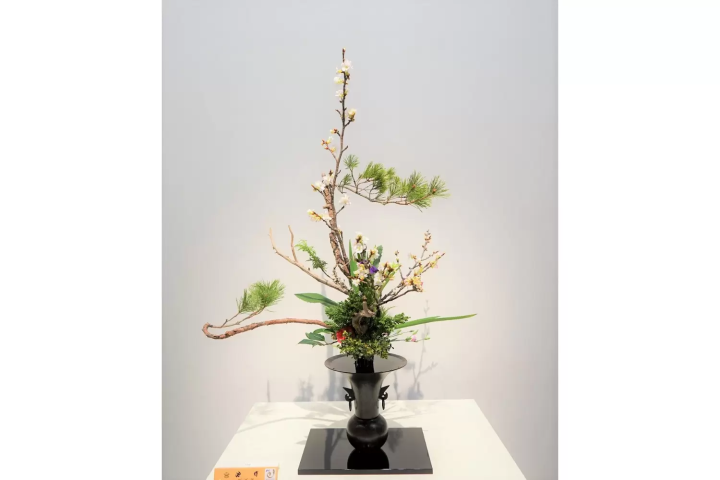
Rokkakudo Temple is also well known for being where ikebana , or the Japanese art of flower arranging, originated. The building right behind the temple is the headquarters of the Ikenobo School of Ikebana. As such, exhibitions of ikebana works are held here frequently. When visiting the temple, do take a look at the monuments dedicated to the art of flower arranging found on its grounds, as well as at the beautiful ikebana exhibitions.
Address: Kyoto, Nakagyo, Rokkaku Todoin Donomae Website: http://www.ikenobo.jp/english/about/rokkakudo.html
↑ Return to the top of article.
2. Tenryuji Temple: Zen Temple with Dragon Painting

Built in 1339, Tenryuji is a Zen temple belonging to the Rinzai sect of Buddhism. Visitors to this temple often feel as though they are being watched - and they are! If you look up, you will see this incredible painting of a dragon gazing back at you.
Within the grounds of this temple, you will also find the Sogen Chiteien garden, which was created by the Zen priest Muso Soseki, and was designated as Japan’s first historic landmark and National Scenic Site. The temple is located in the beautiful Arashiyama area, right near the scenic bamboo grove.

3. Nonomiya Shrine: Matchmaking Shrine with Beautiful Moss Garden

Nonomiya Shrine is located right in the middle of the bamboo grove of Arashiyama. Originally built as a sacred purification space and residence for the Ise Shrine Priestess, it is well known to fans of Japanese literature for its black torii gate and brushwood fences, which are written about in the tenth chapter of " The Tale of Genji ," the world's oldest extant novel.
Nonomiya Shrine is an excellent place to visit if you want to pray for luck in match-making, marriages, and childbirth. Do take a stroll through the beautiful moss garden behind the temple, a place with a sacred atmosphere.
Address: Kyoto, Ukyo, Sagano Miyamachi 1 Website: http://www.nonomiya.com/eng.html
4. Rurikoin Temple: Splendid Fall Foliage Spot with Teahouse
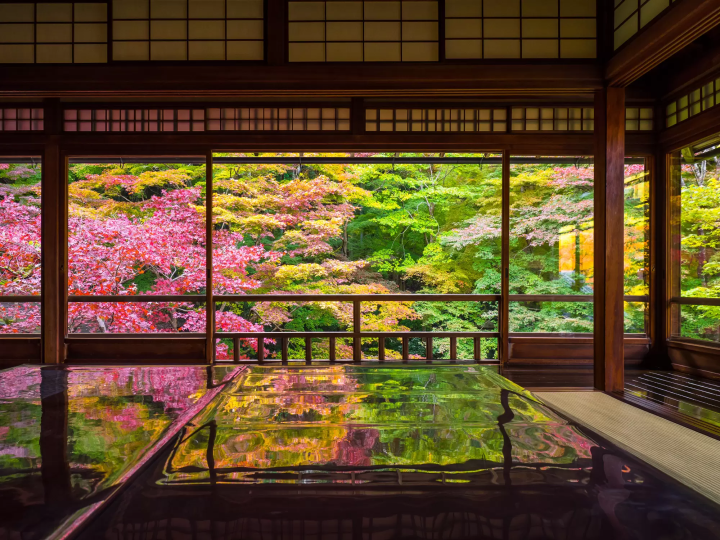
Picture by Pixta
Rurikoin Temple is a peaceful, historical temple and natural oasis hidden away in the Yase area of Kyoto. During the Jinshin Revolt in the year 672, Oama no Oji, who later became another legendary figure in Japan, Emperor Temmu, is said to have come to this area to heal his injuries in the Yase no Kamaburu (steam bath), which has served as the model for numerous steam baths and recuperation facilities both in Kyoto and across Japan ever since.
There are two incredible gardens and even a teahouse on the grounds of this temple. The garden is very popular in the early summer and the autumn, drawing photographers and visitors from all over the world to see the unique scenery of bright leaves and the temple.
Address: Kyoto, Sakyo, Higashiyama, Kamitakano 55 Website: http://rurikoin.komyoji.com/lp/en/

Autumn in Japan 2023: How to Enjoy the Fall Foliage Season
5. Seimei Shrine: See the Mystical Well and Ancient Cosmology Symbols

Photo by Pixta The Seimei Shrine , founded in 1007, is a Shinto shrine dedicated to the legendary historical onmyoji (*1) Abe no Seimei (921-1005), and was first constructed on the former site of Seimei's home, and fully reconstructed in 1925.
There is a mystical well within the precincts said to have magical waters that were used by the legendary tea master Sen no Rikyu at one time, while throughout the shrine and grounds there are Seimei stars (pentacles), the symbol that Seimei is said to have invented in the 10th century in order to symbolize the five elements of Onmyodo practices.
Address: Kyoto, Kamigyo, Horikawa, Ichijo Agaru 806 Website: http://www.seimeijinja.jp/ (Japanese)
*1 Onmyoji: a practitioner of Onmyodo, a traditional Japanese esoteric cosmology that combined occultism and natural sciences, and took influences from Taoism, Buddhism, and Shintoism as well.

6. Kodaiji Temple: Historical Temple with Beautiful Fall Foliage

Kodaiji Temple , which is formally named Jubuzan Koodai-ji, was established in 1606 by Nene, the widow of Toyotomi Hideyoshi, in order to pray for her late husband. This temple belongs to the Rinzai school of Zen Buddhism and is the largest of the sub-temples belonging to the Kennin-ji Temple branch of this sect.

There are stunning gardens and multiple Important Cultural Assets within its grounds, including the Otamaya sanctuary, and even a jinbaori, a special coat worn over armor that once belonged to the famous feudal lord. During each season the gardens are beautifully illuminated in the evening and open to the public.
Address: Kyoto, Higashiyama, Kodaiji Shimokawaracho 526 Website: http://www.kodaiji.com/e_index.html

7. Eikando Temple: Famous for Rare Amidha Buddha Statue
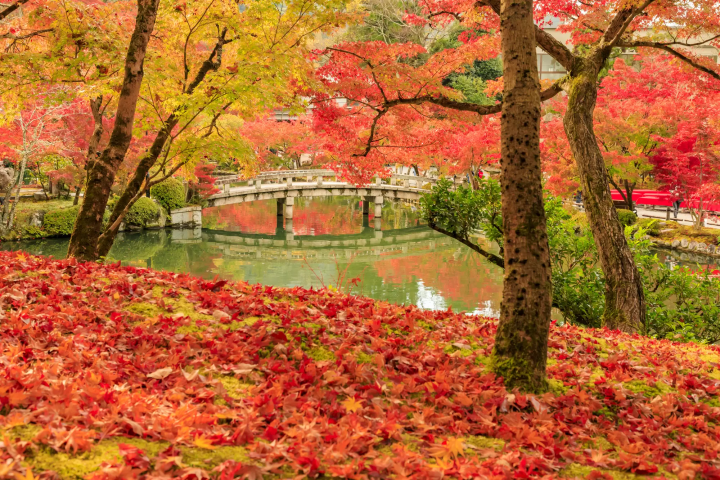
Eikando was founded in 853 by Shinsho, a student of the famed Kukai, and is the head temple for the Seizan branch of the Pure Land sect of Buddhism. Mentioned in the historical poetry anthology the Kokin Wakashu, Eikando is best known for the Mikaeri Amida, a peculiar statue of the Amida Buddha who, rather than looking forward as is standard for all Buddist statues, is glancing over his shoulder back at the viewer instead.
Address: Kyoto, Sakyo, Eikando 48 Website: http://www.eikando.or.jp/English/index_eng.html
8. Kurama Temple: Meet Long-Nosed Goblins at a Mountain Temple

Kurama Temple is a mountain temple in northern Kyoto that is the perfect spot for visitors wanting to enjoy Japanese beauty with a nature hike. In addition to the stunning mountain landscape and views, the temple itself boasts a long history and is full of highlights, such as the long-nosed tengu , Yuki Shrine, famous for its fire festival, and several national treasures.
The temple complexes and structures are connected via a mountain path that runs all the way to the popular Kifune Shrine area, so those wanting to visit Kifune too should be prepared for a moderate trek that will take about one hour. Natural outdoor onsen are near Kurama Temple as well.
Address: Kyoto, Sakyo, Kurama Honmachi 1074

9. Kenninji Temple: Zen Temple with Art Collection

Photo by Pixta
Kenninji Temple is a prominent Zen Buddhist temple located just south of the main Gion neighborhood. It is said to be one of the oldest Zen Buddhist temples in Kyoto, with its history dating back to around 1202.

This serene temple boasts a number of famous artworks such as the famous sliding door painting of the Fujin and Raijin, wind and thunder gods, as well as a magnificent dragon ceiling painting. In addition to the artwork, visitors will enjoy strolling through the complex and seeing the gorgeous gardens.
Address: Kyoto, Higashiyama, Komatsu 584 Website: https://www.kenninji.jp/ (Japanese)
10. Yogenin Temple: Feel Kyoto's History
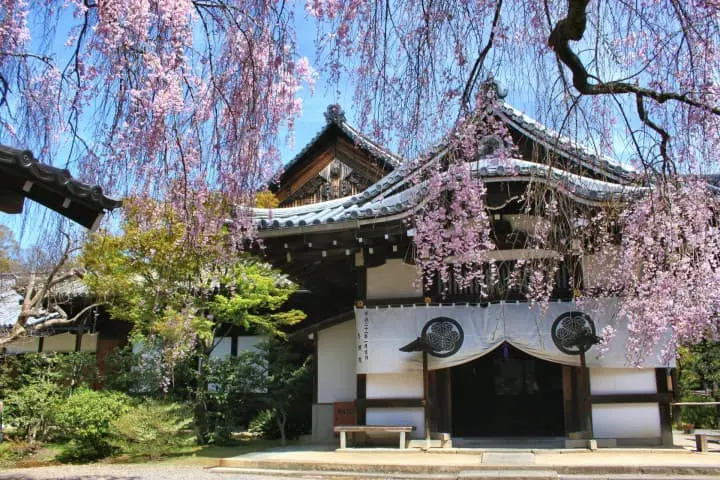
Yogenin is a small Buddhist temple originally built in 1594. It is most known for using wooden planks bloodied from the fall of Fushimi Castle in 1600. Visitors can see this by looking up when they walk down the halls inside the temple.
The bloodied ceilings are known as chitenjo in Japanese. There are four other temples in Kyoto that use these planks, but Yogenin is one of the easiest to get to. Looking up, you will be filled with fascination and perhaps slight apprehension imagining the battles of the past.
Address: Kyoto, Higashiyama, Sanju Sangendo Mawari 656 Website: https://ja.kyoto.travel/tourism/single02.php?category_id=7&tourism_id=477 (Japanese)
11. Kyoto Confectionery Museum: See Incredible Sugar Sculptures!
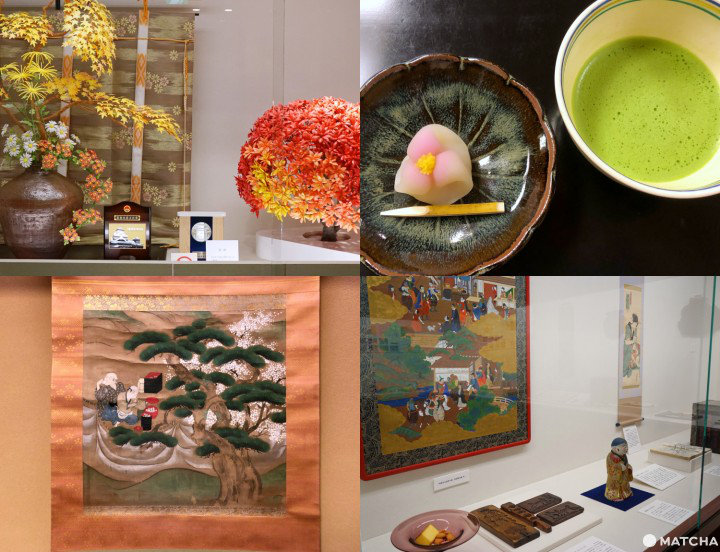
Picture from Kyoto Confectionery Museum - Learn And Taste Japan's Wagashi History A must-visit for those with a sweet tooth is the Kyoto Confectionery Museum , a facility with free entrance, candy art, and matcha set service . Featuring wagashi (Japanese confectionery), this is a great place to learn about Kyoto's rich history with sweets making (imagine mochi, red bean paste, and dorayaki) and green tea.
Before leaving, be sure to drop into the souvenir shop to pick up high-quality Kyoto treats by Tawaraya Yoshitomi, a renowned local confectionery. The unryu , a red bean paste roll shaped to look like a dragon, is a unique and delicious choice.

12. Okochi Sanso Villa: Enjoy Panoramic Views of Kyoto
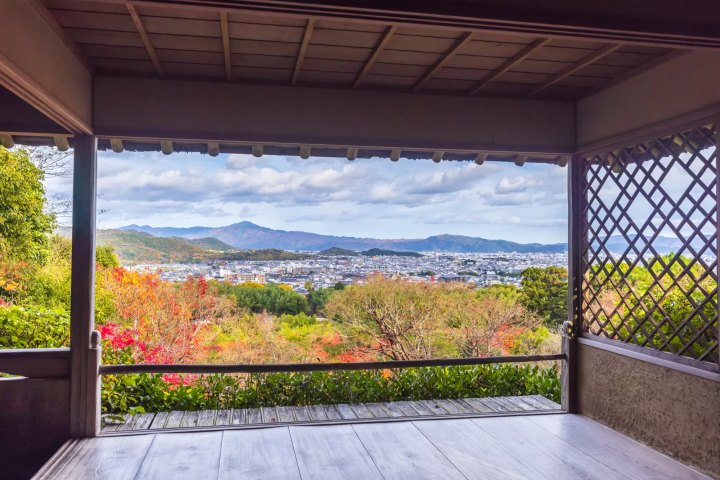
Located in Arashiyama off the main bamboo forest path is Okochi Sanso Villa , a beautiful property where visitors can experience a traditional Japanese garden, teahouse, and views of Kyoto and the surrounding mountains. This villa is one of the former residences of Okochi Denjiro (1898 - 1962), a famous actor who often appeared in Japanese historical drama films in the early 20th century.
Numerous buildings and structures at the villa are nationally registered tangible cultural properties. The garden is gorgeous throughout the year with seasonal beauty so you can visit multiple times to see the change in scenery. At the teahouse, guests can sit down and enjoy a matcha tea with Japanese confectionery while admiring the beautiful landscape.
Address: Kyoto, Ukyo, Saga, Ogurayama, Tabuta 8
13. Kyoto Botanical Gardens: Exhibiting Japan's Rare Flora

Photo by Pixta Kyoto Botanical Gardens is a lesser-known site in Kyoto, but is filled with much that travelers will enjoy. Visitors access to gorgeous flowers and greenery for an affordable price. Different flora blooms throughout the year, making it enjoyable to see at any time of the year. The grounds are especially spectacular in spring when cherry blossoms are in bloom. In the autumn, visitors can appreciate the colorful changing of the leaves.
Native Japanese plants grow here as well, and educational programs and special events are also held.
Address: Kyoto, Sakyo, Shimagamo Hangi Website: http://www.pref.kyoto.jp/en/02-02-10.html
↑ Return to the top of the article.
14. The Lake Biwa Canal: Beautiful Cherry Blossom Spot

The Lake Biwa Canal spans approximately 20 kilometers in total, connecting Kyoto city to the waters of Lake Biwa in the neighboring Shiga prefecture. Construction on the canal's first major section started in 1885 and was completed in 1890. The canal provided Kyoto with the water supply, hydroelectric power, and transport system for supplies it needed to continue flourishing.
Today, the waters are still used for the city, and visitors can take boat tours along the canal to learn about the history and importance of the canal and to enjoy the natural scenery surrounding the canal. There are maintained walking paths that follow the canal as well, ideal for those who want to take in the great outdoors of Kyoto via a nature hike––this area is a gorgeous cherry blossom spot in the springtime.
Website: https://biwakososui.city.kyoto.lg.jp/en/
15. Nishiki Market: Explore Kyoto's Kitchen
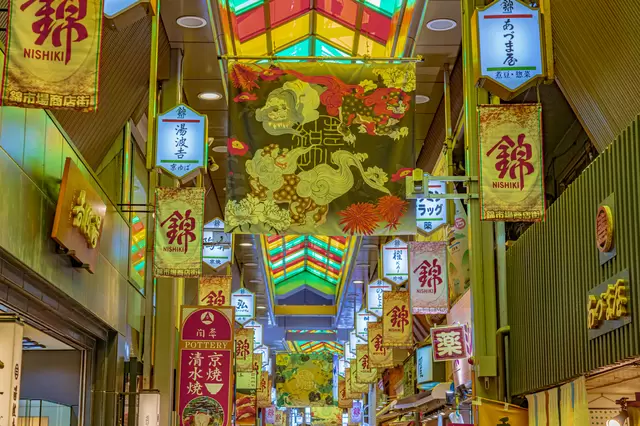
Nishiki Market , or Nishiki Ichiba, is known to many as Kyoto's Kitchen. Many may still think of Kyoto as being a place for temples and shrines, but the Nishiki Market is the place to go to find authentic Kyoto cuisine. The market dates back several hundred years.
This spot has been growing in popularity in recent years but still retains its everyday charm. Shops selling everything from unique matcha sweets to savory snacks, to cooking ingredients, such as Kyoto seasonings, line this five-block-long shopping street. Be sure to stop by the little restaurants and food stands hidden off the main path for unique dishes and treats.
Address: Kyoto, Nakagyo, Nishiki Kouji Dori Website: https://www.kyoto-nishiki.or.jp/en_lp/

16. SOU SOU Kyoto Store: Trendy Japanese Clothing

SOU SOU is a textile company from Kyoto that has gained international recognition for its combination of Japanese traditional clothing designs with modern Western fashions and one-of-a-kind, limited edition fabrics. In Kyoto there are several SOU SOU shops, each specializing in different wares, selling everything from everyday fashions to custom-made kimono, to colorful umbrellas, and fabric.
Address: Kyoto, Nakagyo, Nakano 583-6 (SOU SOU Kimono Shop) Website: https://www.sousou.co.jp/?wovn=en
17. Kaboku Cafe: Taste Excellent Green Tea and Desserts

Picture from Face To Face With Japanese Tea At Kaboku Cafe In Kyoto
The Teramachi Nijodori area is especially known for its cultural history in Kyoto. There are many historical shops and buildings to see here, but the 300-year-old Ippodo Tea Shop and its related cafe and tea room Kaboku are two must-see places.
Address: Kyoto, Nakagyo, Teramachi Nijodori, Agaru Website: https://global.ippodo-tea.co.jp/
18. Kameoka: Splendid Natural Scenery and River Boat Rides
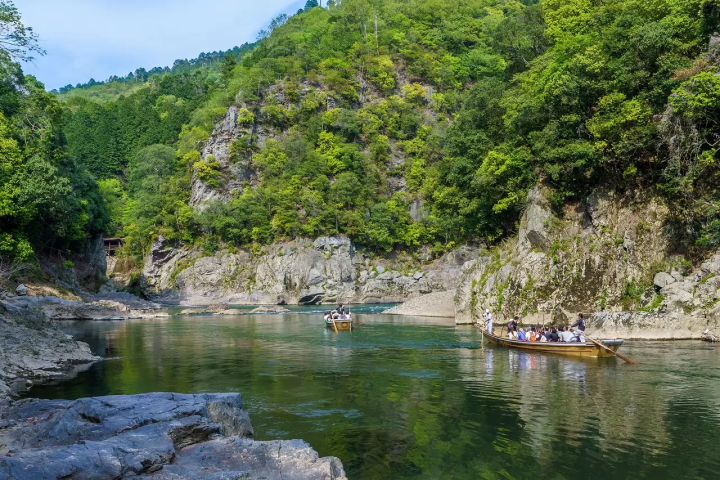
Located just past Arashiyama, Kameoka is a nature-filled destination with fewer visitors than typical Kyoto areas. In addition to the beautiful natural scenery, you can appreciate visiting many small temples and shrines here, like Shomyoji Temple, where you can see performances with taiko drums.
Another must-visit in Kameoka is the Hozu River, which stretches from Arayshiyama to Kameoka. Boat rides on the river offer great views of the surrounding mountains and forests. A number of hot springs, trails, and shopping streets are also in the area, making it a great place for a half-day adventure.

19. Mt. Hiei: Explore the Origins of Japanese Buddhism at Enryakuji Temple

Mt. Hiei is the ideal spot for those looking to get outdoors in Kyoto. Located in northeastern Kyoto, bordering Shiga prefecture, the mountain boasts the beautiful Enryakuji Temple , a designated UNESCO World Heritage Site. Visitors can explore the grounds and hike along the flower-lined trails; wildlife, like tanuki (raccoon dog) and monkeys, can also be encountered.
Cable cars go up the mountain as well, making it easy for all to enjoy the scenery. Hiking takes about two hours; the top rewards visitors with a spectacular view of the valleys below and Lake Biwa.
It takes around 30 to 40 minutes to get to the area from Kyoto Station. Visitors can expect more hikers in the fall months, but it is a relatively uncrowded area.

20. Uji: Famous for Green Tea and the Byodoin Phoenix Hall

Uji is a city located just south of Kyoto and is part of Kyoto prefecture. Famous for the beautiful and historic Byodoin Temple, the majestic Uji River, and tea, Uji is a highly recommended place to spend time on a day trip or longer when in Kyoto, especially for repeat visitors.
In addition to the famous Byodoin Temple, be sure to explore the other side of the Uji River, too, where you will find Uji Shrine and Ujigami Shrine, charming shops and cafes, and The Tale of Genji Museum. There are many vendors and cafes offering matcha and Japanese tea-infused desserts that will delight visitors with a sweet tooth.

Explore Deep Kyoto
While it's plenty of fun seeing all the famous spots in Kyoto, going somewhere that is less well known has its merits too, as you can make your own unique memories of Kyoto.
What is the Hidden Street in Kyoto?
One of the hidden gems in Kyoto is Ninen-zaka Street. Ninen-zaka, also known as Sannen-zaka's quieter counterpart, is a narrow and charming pedestrian lane lined with traditional machiya (wooden townhouses), stone-paved streets, and historic storefronts. This street retains an old-world ambiance and offers a tranquil escape from the bustling crowds, providing visitors with a glimpse of Kyoto's picturesque past. Ninen-zaka is renowned for its well-preserved architecture, subtle beauty, and traditional atmosphere, making it a delightful hidden street to explore in Kyoto.
Where do the locals go in Kyoto?
Kyoto locals gravitate towards cultural hotspots like Nishiki Market for fresh produce, neighborhood cafés for a taste of local cuisine, and serene parks including Maruyama Park and the Philosopher's Path for relaxation. They frequent community temples and shrines for spiritual solace, engage in traditional craft workshops and art studios, and partake in local events and festivals reflecting Kyoto's rich heritage. Seeking out hidden gems and quieter spots allows residents to savor the city's authentic charm beyond its tourist attractions, fostering a deeper connection to Kyoto's cultural tapestry and traditions.
What is the most charming street in Kyoto?
One of the most charming streets in Kyoto is Sannen-zaka, known for its traditional atmosphere and well-preserved historic buildings. Located in the Higashiyama District, Sannen-zaka is a pedestrian walkway lined with traditional machiya (townhouses), shops selling local crafts and souvenirs, tea houses, and charming cafes. The street leads to the iconic Kiyomizu-dera Temple, making it a popular route for both locals and visitors exploring Kyoto's cultural heritage. The preserved architectural style and nostalgic ambiance of Sannen-zaka offer a glimpse into the traditional Kyoto of yesteryears, making it a favorite destination for those seeking a quintessential Japanese experience.
What is the hippest neighborhood in Kyoto?
Kyoto has several vibrant neighborhoods that cater to different tastes and preferences, offering a mix of trendy cafes, boutiques, cultural attractions, and modern amenities. One of the hippest neighborhoods in Kyoto is Gion-Shijo, known for its unique blend of traditional charm and contemporary urban vibes. Here, you can find stylish cafes, chic restaurants, modern galleries, and fashionable boutiques alongside historic tea houses, traditional machiya houses, and iconic Gion district attractions. Gion-Shijo's dynamic atmosphere, fusion of past and present, and trendy establishments make it a popular choice for those seeking a mix of modern culture and traditional Kyoto charm.
How many days do you need in Kyoto?
The ideal number of days to spend in Kyoto can vary based on your interests and the depth of exploration you desire. However, to experience Kyoto's highlights and immerse yourself in its rich culture, history, and beauty, a minimum of three to four days is often recommended.

This is the official account of MATCHA's English editorial team. We are bringing you the latest travel information on Japan.
Our beautiful cover photo features the fall foliage at Lake Kinrin in Yufuin (photo by Pixta). We hope you'll have a wonderful time exploring Japan.
Related topics
Top articles.

How to Travel to Kyoto From Osaka: The Fastest and Cheapest Ways

Shopping in Kyoto: Top 16 Department Stores, Malls, and Shopping Streets

Amanohashidate: Embark on a Day Trip from Kyoto with Beautiful Views

Miyazu / Kyotango
Related Article

Top 45 Cherry Blossom Spots in Japan - 2024 Guide

Tokyo's Ueno Area: 15 Unique Things to Do

Tokyo Travel Guide 2024: Top 35 Things to Do

Kyoto: 15 Must-Visit Temples and Shrines

Kyoto: 50 Things to Do, Places to Visit, Hotels, and Travel Tips

Ginza: 20 Unusual Things to Do in Tokyo's Posh District

Kyoto - 10 Free Things To Do In The Historical City

Kyoto Travel Tips: Transportation and Major Sightseeing Areas

15 Things To Do In Kamakura For A Memorable Trip
Start planning your trip
Special Features

Popular Searches
Latest news.

Showa Kinen Park Flower Festival 2024: Enjoy Nemophila, Tulips, and More!

A Must for Nature Lovers! Win a Free Stay at Unzen Amakusa National Park

A World of Light and Color! Van Gogh Alive in Japan 2024

Cherry Blossom Light-up in Tokyo! Yomiuri Land's Jewellumination

Cherry Blossoms and Sky Lanterns! Aichi Hanami Lights 2024

Japan's Public Holidays and Long Weekends in 2024

Aeon Mall Okinawa Rycom: A Shopping Mall Featuring a Resort Aura

Suica and Pasmo IC Cards: Prepaid Transportation Passes in Japan

Riding Taxis in Japan: The 6 Best Apps to Grab a Cab
New articles.

[babycal] Rent a stroller and go on a trip to Okinawa!

[2024] Travel light and easy around Japan with the stroller rental service "babycal"!

Enjoy the charm of Japan in Kagurazaka! Recommended spots for a walk and gourmet information

Tourist information for Torisoba Zagin Kagurazaka store and the Iidabashi area

[Tokyo, Shibuya] SHIBUYA, a trendy place where people and cultures mingle
- International edition
- Australia edition
- Europe edition
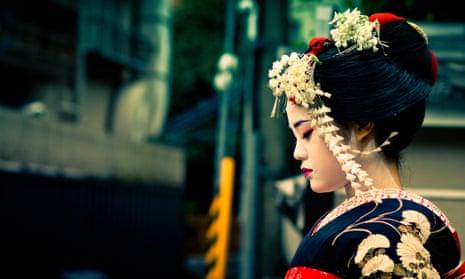
Kyoto bans tourists from parts of geisha district amid reports of bad behaviour
Gion residents asked city council to crack down after rise in tourist numbers leads to increased harassment of traditional entertainers
Visitors to the geisha district of Gion – one of Kyoto’s most popular sightseeing spots – will be banned from entering its picturesque alleyways as authorities in Japan attempt to tackle a dramatic rise in tourism .
Residents of Japan’ s ancient capital have struggled to reconcile the financial boost from a return to pre-pandemic visitor numbers with overcrowding and incidents of bad behaviour among tourists.
Gion, where geiko and maiko traditional entertainers can be spotted on their way to evening teahouse appointments, is regularly targeted by smartphone-wielding visitors , some of whom ignore signs requesting that they keep their distance and refrain from touching the women’s expensive kimonos. There have also been complaints about people trespassing on private property.
In December, a council of Gion residents urged the city’s government to take action against unruly tourists , complaining that their neighbourhood was “not a theme park”.
Kyoto officials said the ban on entering Gion’s narrow private streets would go into force next month, although it is unclear how the restriction will be enforced.
“We don’t want to do this, but we’re desperate,” said council member Isokazu Ota, adding that signs would be put up reminding visitors of the new measures.
The area’s main thoroughfare, Hanamikoji street, will remain open to tourists.
Ota complained that some visitors behave like amateur paparazzi when they spot a geisha walking along narrow streets, some of which are just two metres wide.
Previous attempts to encourage tourists not to approach women, including signs and fines of up to ¥10,000 for non-consensual photography, have failed to deter visitors determined to take snaps of the women – highly skilled entertainers and conversationalists who are sometimes wrongly portrayed as sex workers.
Kyoto, Japan’s capital for more than 1,000 years until 1868, is not the only Japanese destination struggling with overtourism since Covid-19 restrictions were lifted last April.
This week authorities in Yamanashi prefecture said they would start charging ¥2,000 (£10.50) to climb Mount Fuji , where hikers have been blamed for littering and risking their health and safety by attempting “ bullet ascents ” of the 3,776-metre mountain. Daily visitor numbers will also be capped when the climbing season begins in July.
The number of foreign visitors to Japan soared 79.5% in January from a year earlier to about 2.69 million, reaching levels seen in the same month in 2019, before the pandemic forced Japan’s government to impose travel restrictions.
The largest number of travellers came from South Korea, followed by those from Taiwan and China, the Kyodo news agency said.
- Asia Pacific
Most viewed
Kyoto tourist traps, Ponto-cho
Many people, even some experienced travelers, are considering that a tourist trap is a place that should be avoided, a loss of time and money - but that’s not true, in many cases, even if the place is unanimously defined as a “tourist trap", there are unique experiences to be had and enjoyed…
In my view, an attraction should be called a “tourist trap” when people are limiting their travel experiences to just these places, because of travel guides or media hype… You should not limit yourself to what these places are offering - you will lose the chance to live other great experiences.
Japan is one of the few countries in the world were you can eat anywhere, from festival stalls to the fanciest restaurants, and you don’t have to worry about the food. You may need to worry about the price, though… (^_^)
From my experience, one of the over-hyped tourist traps in Kyoto is Ponto-chō: it is a truly remarkable spot to sample the feeling of the traditional Japanese streets… especially in the evening. But if you want to sample the Japanese cuisine… go a few streets away: the food will be cheaper and tastier, the atmosphere will be better and the staff friendlier…
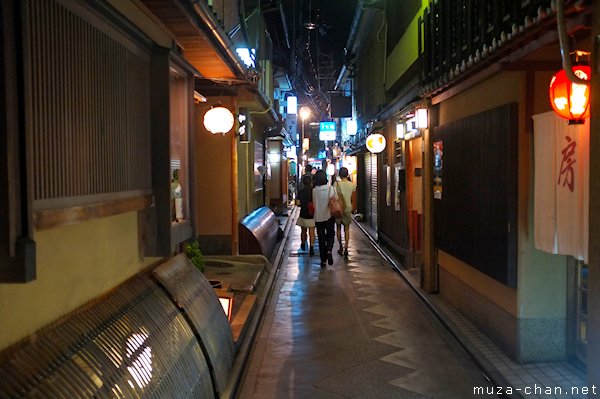
# Kyoto travel
# travel tips for visiting japan, # zen gardens, # tokyo travel, # modern japanese architecture, # japanese gardens, # japanese manhole covers, # castles in japan, # traditional japanese house, # trains in japan, # night time photos from japan, # sakura, cherry blossoms, # traditional japanese architecture.

- For Media & Travel Trade

- About Kyoto
Arts & Crafts
- Town & Architecture
Temples & Shrines
Eat & Drink
Festivals & events.
Accommodations
- Activities & Experiences
Sustainable Activities
Morning & nightlife, itineraries.
- Families with kids
Travel Tips
Destination index.

By using this site, you agree to the use of cookies. See our privacy policy for more information. This site uses machine translation, so content is not always accurate. Please note that translated content may differ from the original English page.
Think Local
Aoi Matsuri Festival
Kyoto Travel Comfort Map & Real-time Webcast
Experiences
Three new articles on comfortable access to Kyoto's famous sightseeing spots!
About golden week and shinkansen, we added the new “events in kyoto” brochure (apr 29 - may 12), two new articles on the umekoji area, we will be joining the japan addict 2024 convention, dig into kyoto.
What’s New in Kyoto
Go to Your Destination Smoothly from Kyoto Station! 6 Tips to Keep From Getting Lost Inside Kyo ...
Getting from kyoto station to kinkaku-ji temple: take it easy and visit a shrine for good luck, getting from kyoto station to arashiyama & sagano: take a fun detour via the subway and ran ..., things to do in the umekoji area, kyoto railway museum: a must-visit for families with kids.
Enjoy & Support Traditional Arts at the Kyoto Museum of Crafts and Design [PR]
The Aoi Matsuri festival procession Sales information: Parade Viewing Seats
Kyoto Restaurant Winter Special 2024
Getting from Kyoto Station to Kiyomizu Temple: A Relaxing Route to the Temple that Avoids Heavy ...
Experience Traditional Culture at Kyoto Gyoen National Garden
Transportation

Getting to Kyoto

Getting around Kyoto
Kyoto Winter Special Openings 2024
Aki no Odori in 2023: Autumn Dance performances hosted by the historic maiko and geiko district ...
Night sightseeing in Kyoto: Enjoy the splendid views and special events
Moon Viewing Events "Kangetsu Kai" in 2023
NAKED Summer Evening Cool World Heritage Site Kamigamo Jinja Shrine
The Kyoto Sightseeing Bus will run a special route for Kyoto Winter Special Openings
The ❛new normal❜ for tourism in Kyoto
A Muslim Kyoto Resident Shares Her “Favorite Kyoto”
Recommended model itinerariesThe shape of travel “Exploring the aesthetics of ancient people”
Hakusasonso Hashimoto Kansetsu Garden & Museum, Kyoto
Ultimate Indulgence Expeditions (Part 3: Sample Itinerary)
Ultimate Indulgence Expeditions (Part 2: Gastronomy)
What's so Great About Kyoto Anyway? We Asked a Touring Brit What He Loves About the Area
New tours departing from Kyoto Station accompanied by The Kyoto City Visitor Host
The future of Kyoto tourism discussed with international Kyoto residents– Part 2
The future of Kyoto tourism discussed with international Kyoto residents– Part 1
What is most important in making the maintenance and utilization of a cultural property compati ...
Sustainable Beauty from Kyoto – A Dialogue between NEMOHAMO and SARASA YOSHIOKA
Future on the Table: Zero-Food-Waste Kyoto Cuisine
The Little Story of Chopsticks: The Kakehashi Project
Natural Dye from Kyoto – Bringing a 1500-year-old ethical dyeing method to the modern age, Kyot ...
Kyoto Restaurant Winter Special 2023
Following my mother’s wisdom: Learning How to Get Along with My Body – Yakuzen Cuisine
NISHIJIN BEER – Kyoto Beer that Creates Opportunities for People with Disabilities
Moving to Kyoto for the second time: A Café Manager’s Perspective on the Potentials and Values ...
Manji Café :GION COOKIES, MANJI SELECTION, a cookie tin full of “Kyoto” brought to perfection
Drink in The Kyoto Night Sake (s)hopping
How to enjoy Kyoto during off-peak hours: before breakfast, after dinner, and more
Kyoto shrines and temples open to morning prayers and visits
On The Run Through The Kyoto Night Running, Bathing, Drinking
A Colorful and Cultural Night Out at The Theater That's Entertainment Kyoto-style
[Kyoto Beer Lab] Home Brewed Kyoto Craft Beer on The Bank of The Takasegawa River
A city with traditional crafts and innovative art
Monthly and seasonal markets in autumn 2023
Spring Dance performances by the maiko and geiko "Haru no Odori " in 2023
Ecrin, a Button Shop that Has Supported Kyoto’s Dressmaking for Seventy Years
Enjoy “Metal Fittings” in Kyoto! Tips I learned from Artisans
Enjoy “Wood Grains” in Kyoto! Tips I learned from Artisans
Street Guide
Hyakumanben, daiei-dori street, creative people in kyoto.
Enrich your experience by learning about those who are carrying on tradition and developing a new culture.
What is most important in making the maintenance and utilization of a cultural property compatible with each other?
Kyo-wagasa umbrellas: their beauty is the result of over a thousand years of innovations, a tasteful meditation: reconnect with your senses at a zen temple, kiyomizu-dera temple in the new era: bringing culture and sincerity together for an era of peace, beyond “delicious”, moving to kyoto for the second time: a café manager’s perspective on the potentials and values of a place, our partners.

Maps & Tools

Hands Free Travel

Kyoto Travel Congestion Forecast

Money Exchange/ Tax Regulations

Safety Information

For Families with Kids

Universal Sightseeing

Support for Muslims

Food Diversity

Other Information

Museums & Galleries
Historic Sites

Other Attractions

Season & Festivals

Onsen&Sento

Restaurants

Kyoto Cherry Blossom Calendar 2024

Kyoto Autumn Leaves Calendar 2023
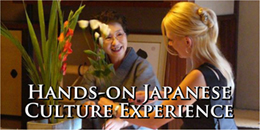

8 Tokyo Tourist Traps to Avoid (And Where to Go Instead)
If you plan to visit Japan, Tokyo is most likely at the top of your list for many reasons. Being the capital city of Japan, the center of business and one of the most important and iconic cities in the world, Tokyo is the ultimate urban destination. As the world’s most populated city, Tokyo brings in millions of tourists every year and the trend is increasing. According to surveys by the Tokyo Metropolitan Government, in 2018 there were about 14 million foreign visitors to Tokyo. And almost 6 trillion yen was spent by these visitors while in Tokyo. That is a lot of tourist money, meaning hotels , restaurants, shops and tourist attractions are competing for tourist attention and dollars. And although anywhere in Tokyo is filled with amazing things to do and see, some places are a little over-crowded and have a distinct "touristy" vibe. Here is a list of nine places that might be considered tourist traps and some alternatives if you want to skip the long lines and discover someplace new.
1. Akihabara
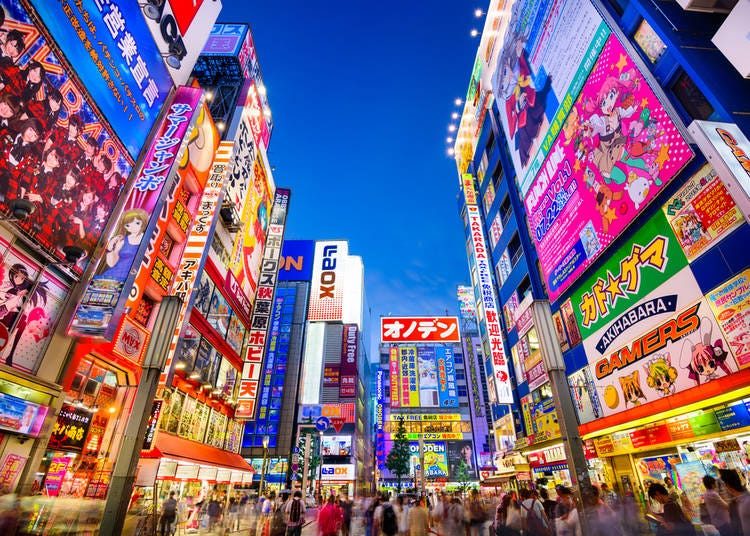
I am sure many otaku will be shocked that Akihabara , the otaku capital of the world is on this list but there is good reason. If you are just looking to gawk and awe at the giant anime posters and billboards of idols, maids, characters and video games then Akihabara is the place for you. Walking the main street you will find girls in cosplay handing out flyers enticing you to enter their restaurant or cafe . There will be loud anime music coming from the shops selling figures, manga and Japanese subculture goods. However, if you are looking for a place that houses much more specific manga , anime , figures, cosplay and other Akihabara type otaku goods then other places in Tokyo might be better. Akihabara is the main pull for tourists who are huge fans of Japanese comics and animation so the shops will tend to sell goods that are more expensive and mainstream. You might not be able to find obscure anime or manga or goods relating to less popularly known characters. You will also find that line ups for stores, cafes , new products and events will be longer as well.
Instead go to Nakano Broadway
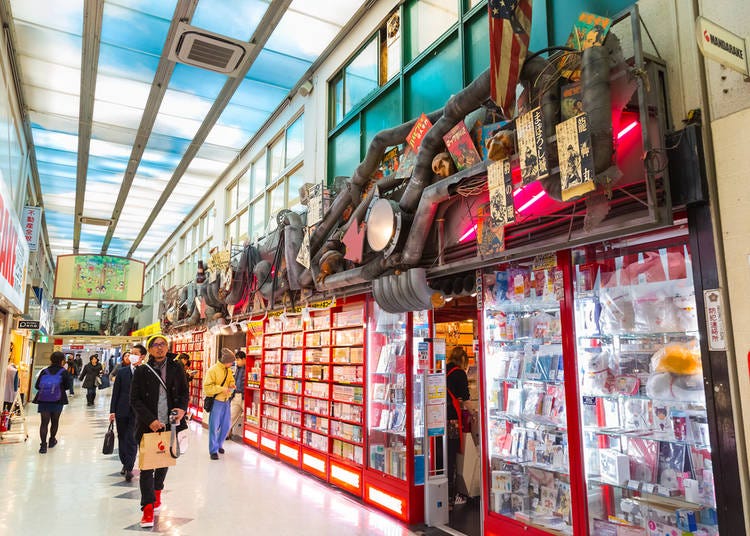
Nakano Broadway is Akihabara version 2.0, located in Nakano Tokyo and clustered together in a covered arcade . Since a lot of the shops are all located together and are protected from the cold and the rain, going from shop to shop or waiting in line to enter will be a lot easier. You will also find that there are many more shops and different items available here because of the jumbled flea-market style design of the area. Shops range from enormous anime themed department stores like Mandarake to small, local custom shops selling unique collectors items. Here you will find manga , anime , idol fan goods, figurines, rare collector items, fashion, music, video games , cosplay and game centers.
- Akihabara Anime Guided Walking Tour
- Tokyo's Unique & Unusual Tour with a Local: 100% Personalized & Private
- Tokyo Otaku Tour with a Local: 100% Personalized & Private
- Tokyo West-Side Cycling & Food Tour
- Hands-on Henna Body Art Experience in Buddhist Monk Bar in Tokyo
- Crazy about Anime! Private Full Day Tokyo Manga Anime Tour by Chartered Vehicle
2. Tokyo Skytree®
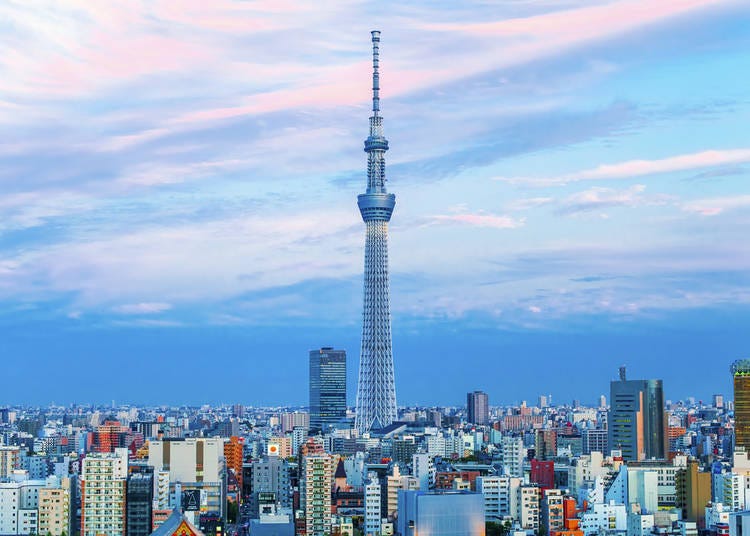
Going up the Tokyo Skytree® is a tad expensive, usually crowded and the observation area is often blocked by groups of tourists making it hard to get a good view or take a nice picture especially at peak hours. There are two different observation decks, the first being 350 meters and the higher one being 450 meters. To get the best view at the highest deck (which admittedly is a very impressive one - especially around sunset) you will spend more than 3000 yen for a combo ticket and have to wait in two different lines. All that being said, I must admit, the Tokyo Skytree® base area as well as shopping area is definitely worth a visit. The bottom of Skytree ® has a really nice shopping area called Solamachi® and even a reasonably priced and elegant looking aquarium . The shops sell a variety of budget friendly as well as charming souvenirs for friends, family or yourself. The restaurants are also not too expensive and serve delicious food.
Instead go to Tokyo Metropolitan Government Building
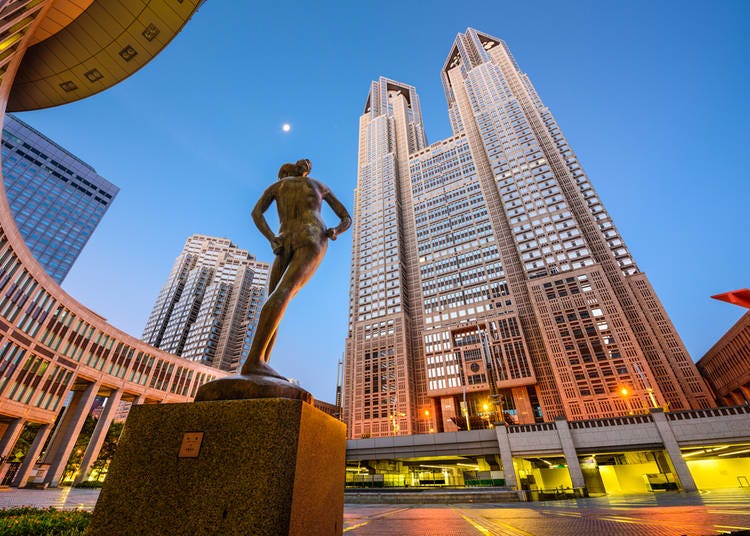
At one point this place was quite quiet and off the beaten path, however due to word of mouth the Tokyo Metropolitan Government Building has also started becoming crowded and lines form at peak times to go up the elevator to the observation deck standing at 202 meters. The line moves relatively fast. And the best part is the entrance is free of charge. The actual observation deck is much more spacious allowing more window room, walking space and the center has a nice cafe as well as souvenir stands selling interesting and amusing goods. The observation deck is open from 9:30 am to 10:00 pm so going early or later in the night are good options if you want to avoid peak times.
3. Shinjuku Golden Gai
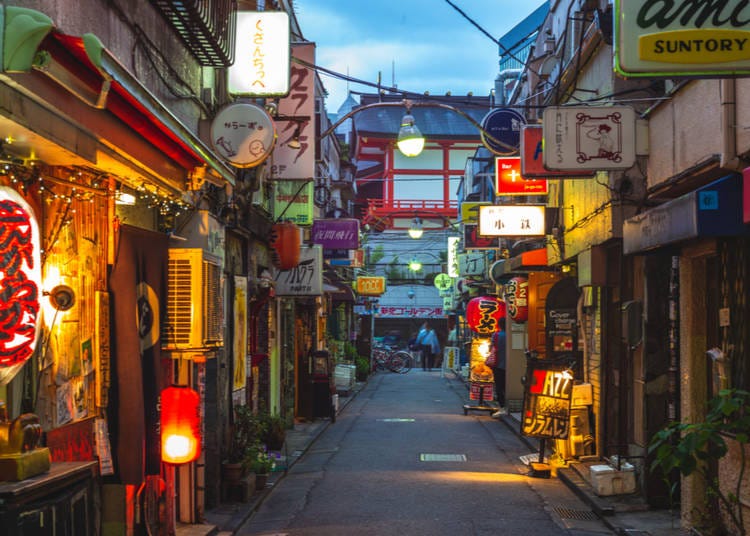
Golden Gai is a small network of alleys filled with drinking establishments serving a variety of Japanese alcohol and traditional Japanese bar food. The narrow alleyways are filled with around 200 bars and eateries each with a unique and charming design. Walking through the streets is definitely a fun and interesting experience and a good chance to get a glimpse of Tokyo of the past but because of the onslaught of people passing through or trying to find space at an open bar , it can get quite frustrating navigating through the small spaces.
Instead go to Shimokitazawa
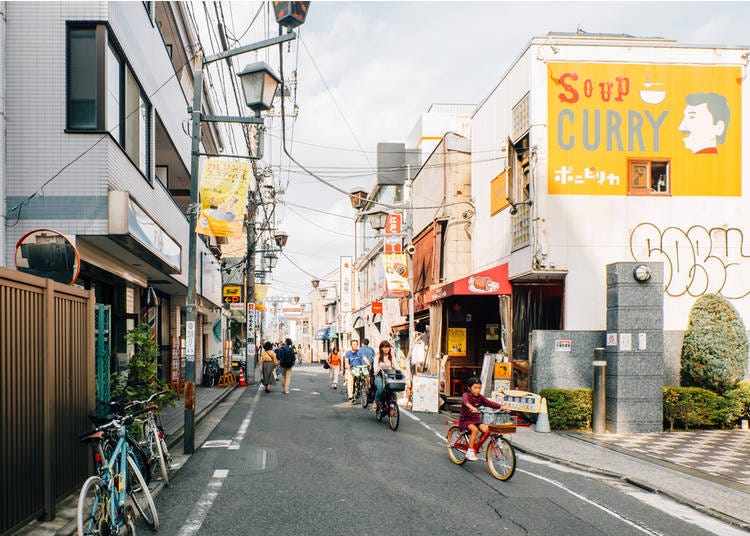
Shimokitazawa is a very trendy but hip old-school Tokyo neighborhood that has a variety of vintage clothing shops, jazz and coffee bars , bohemian restaurants and beatnik art galleries, museums and livehouses. A lot more spread out and easy to navigate, you will see young Japanese people at local bakeries or sipping craft beer and enjoying Japanese music at the small but stylish live houses. There are a wide variety of restaurants and bistros serving Japanese, western, vegetarian and unique food. I recommend the soup curry shops that are quite popular and delicious.
- Tokyo Bar Hopping Night Tour in Shinjuku
- Tokyo Night Foodie Tour in Shinjuku
- Shinjuku Nightlife Walking Tour & Golden-Gai Bar Crawl
- Tokyo Tour Off-the-Beaten-Path, Shimokitazawa with a Local, Private Custom
- SHIMOKITAZAWA Local Walking Tour
4. Asakusa Nakamise
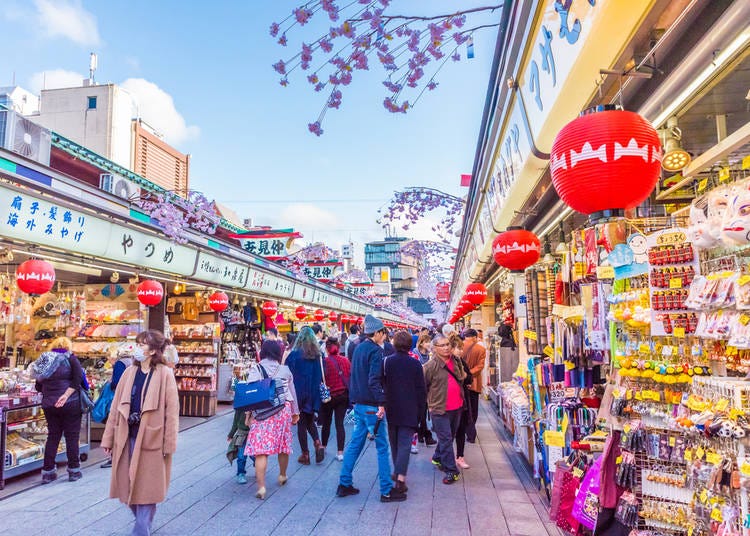
Another popular destination you are most likely to visit in Tokyo is the Sensoji Temple in Asakusa . Along the route to the temple you will stroll through the Nakamise or inner-street shops that line the walkway to the temple . The shops include food stands that sell a variety of sweet and savoury snacks, souvenir boxes of cookies, cakes , matcha flavored goods and a popular Nakamise snack called Ningyo-yaki which are little sponge cakes filled with red bean paste. The shops and stands have been operated for generations and sell a variety of traditional and Japanese style goods from kimonos, charms, origami, fans, decorations and souvenir t-shirts. And although walking through this street is quite a treat as many people who rent kimonos are walking along and add to the feel of old Japan, you'll definitely find yourself squeezed in by all the tourists - it's not for the claustrophobic.
Instead go to Ameyoko
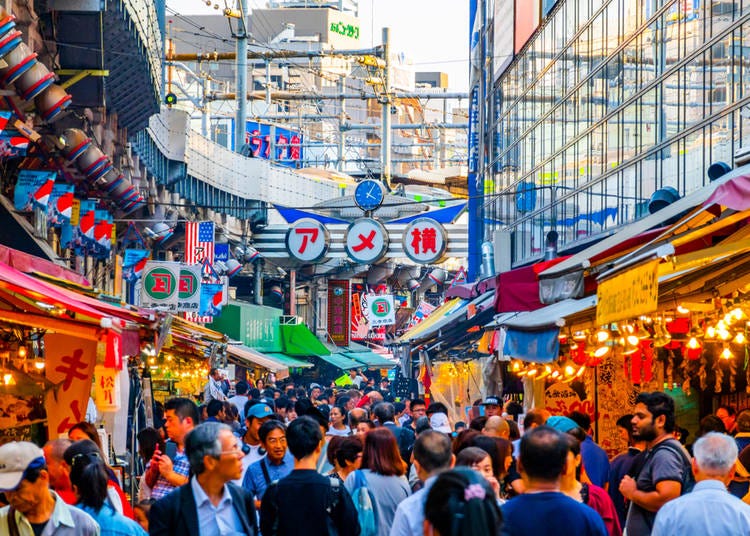
Ameyoko is a shopping street located across the street from Ueno Station and at times it can be just as crowded as Nakamise but offers more variety at a lower price. An open air market that resembles a bazaar, you will find vendors yelling out sales and specials. The shops sell fresh seafood , dried goods, jewelry, clothes, shoes, candy, sports goods, souvenirs and electronics. The food stands are also a great option for grabbing a snack while you shop. The best part of Ameyoko is the amazingly cheap prices for goods and the option of bargaining at shops which is rare in Japan. You will find many discounted goods and interesting products not found in other parts of Japan.
- Asakusa: 1400-year history exploration
- Tsukiji and Asakusa Food and Drink Cultural Walking Tour (Half day)
- Asakusa Cultural & Street-Food Walking Tour
- Asakusa & Ueno (Ameyoko)Tour
- Private Tour - First time Ueno? Here is a tour includes all the must-sees!
5. Roppongi Nightlife
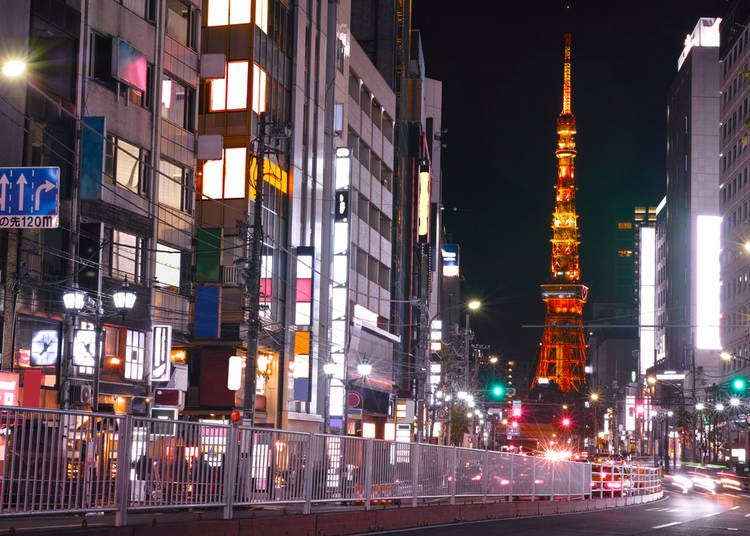
A popular drink and nightlife area in Tokyo, Roppongi has a variety of bars , lounges, restaurants and drinking establishments for the numerous numbers of foreigners roaming the streets looking to enjoy the night. But with the increased amount of foreigners flocking to this area, fewer Japanese people choose Roppongi for drinking and a small number of the many establishments have become known to be quite seedy. The crowds are a bit rowdy and police roam the streets patrolling the bar vendors who stand outside trying to lure people into their bars . While Roppongi also has a large number of quality restaurants and bars , if you follow the barkers outside, most likely you will overpay for your drinks or receive substandard service. Definitely one of the places where, at night, it's good to keep your street sense up.
Instead go to Shibuya
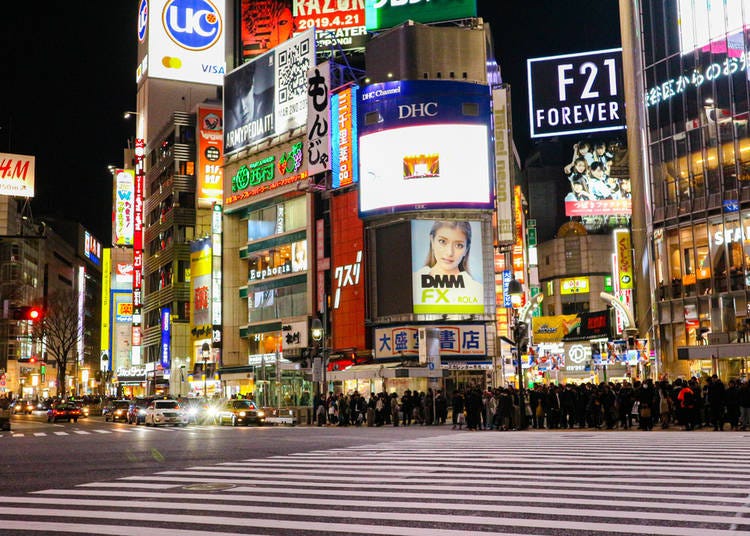
Although Shibuya is a busy hub that has the famous intersection, the club and bar district are still safe and reasonably priced. There are also a variety of types of establishments depending on your age and tastes. Shibuya has mega- clubs for those who are into the dance scene. There are also many big and small live houses to catch a world famous or locally sourced band or musician. And those looking for bars , Shibuya has a variety of pubs , izakayas, sports bars , small wine bars and sake stands.
6. Host/Hostess Clubs

For those who don’t know what a host or hostess club is, a simple explanation is a bar where you pay a man or woman to sit and drink with you. It's pretty much as innocent and simple as that. Both host and hostess bars are quite popular among Japanese business men and women who shell out a lot of money to have a conversation or flirt with a beautiful man or woman. As they are popularized in movies, manga and anime , many foreigners want to experience what it is like to drink and chat with a well dressed and fancy Japanese person. But the experience costs a lot more than you might set out for. There is an entrance fee that includes a time limit and drinks. Extending the time costs money and usually you have to buy drinks for the host or hostess sitting with you. Plus there can be other charges like giving them a special tip or paying them if they sing karaoke for you. The night can add up quite quickly if you are not sure of the rules and system. (Before venturing into one of these spots, be sure to have the rules explained to you, and set a budget up front!)
Instead go to International Parties

Since Tokyo is so big and cosmopolitan, many foreigners and Japanese are looking to meet and talk with new people. Whether for work or travel, many foreigners and Japanese are only in town for a while and don’t have a group of friends to spend their free time. For this reason, Tokyo has many meet-ups and international parties where for a small fee you can be part of a group of people to drink, eat and get to know each other. Because these are often scheduled events, it is much easier to strike up a conversation with a stranger and make new friends. Many Japanese people who are interested in foreign languages and cultures also attend because it is a good chance they might not have in their regular lives. Many international parties are free for foreigners and some include free drinks and snacks. Definitely a cheaper way to meet Japanese people than a host or hostess club .
- Tokyo Pub Crawl
- Smappa!Group and Licensed Guide Kabukicho Shinjuku Nite Experience Tour
- Eat and Drink Like a LOCAL : Restaurant, Tavern & Ramen Tour
7. Maid Cafes
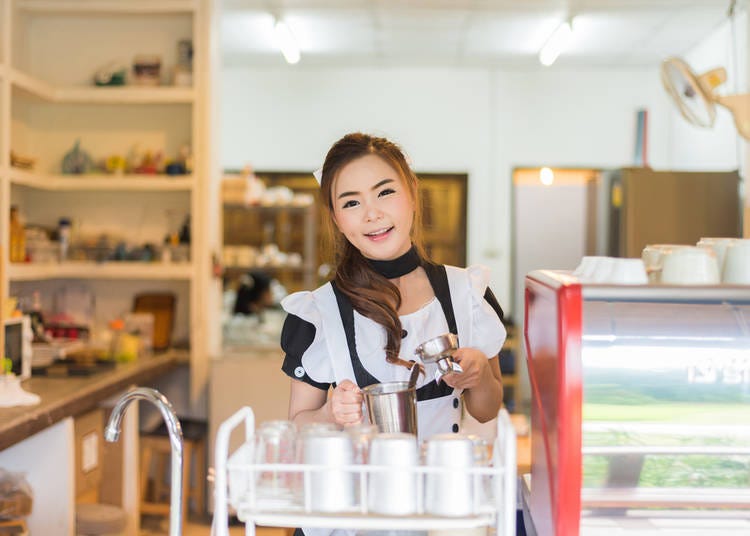
A popular item on the list of visitors to Japan is an authentic maid cafe in Akihabara . Since the first maid cafe opened in Japan in 2001, hundreds have popped up all across Japan and even in countries around the world. Maid cafes feature young women dressed in maid outfits who welcome customers as if they are their masters returning home. They provide cute designed foods and drink and sing little chants and charms to provide a kawaii atmosphere similar to something you would find in a Japanese anime or manga . The maids chat with customers, play games , sing songs on request and take Polaroid photos as souvenirs. Although maid cafes are interesting and unique, they do cost a bit of money. There is usually an entrance charge and time limit. Foods and desserts are a bit expensive and you must pay for each service individually. Expect to spend about 2000 yen or $20 for 30 minutes at one of these cafes . Also, for those who don’t speak Japanese you might find most of the maids don’t speak English so will most likely not stop and chat with you much because of the language barrier.
Instead go to a themed restaurant
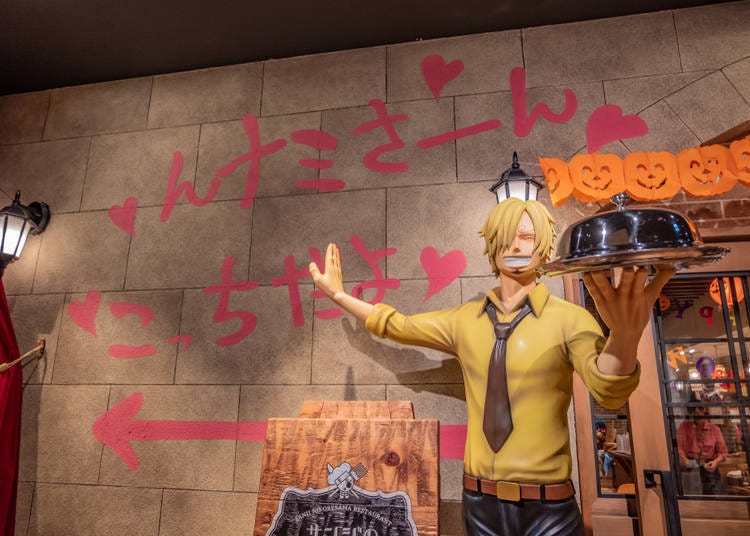
To enjoy a better atmosphere and better food, going to a themed restaurant will probably be more enjoyable. There are a variety of themed restaurants based on your tastes. There are spots like the One Piece themed-restaurant, Baratie, and cafes based on famous characters like Moomin, Pokémon, and more. If you are looking for more of a Japanese themed place, you can check out some of the Ninja-themed restaurants as well as a fishing restaurant called Zauo which allows you to fish for your own food before it is cooked and served to you.
8. Tokyo Disneyland/DisneySea

Tokyo Disneyland is a popular destination for people all around the world as more than 30 million people visit the Tokyo Disneyland and DisneySea parks each year. Open all year round and always having special events and parades, the park tends to be packed and has relatively long wait times for attractions. The price for an adult one day passport is around 7500 yen and is quite steep if you are visiting with your family. If you are a Disney fan then you might nevertheless want to keep Tokyo Disney Resort on your bucket list, but if you are looking to have a family style outing in Japan that is kid friendly and features fun attractions then there are other options.
Instead go to Odaiba
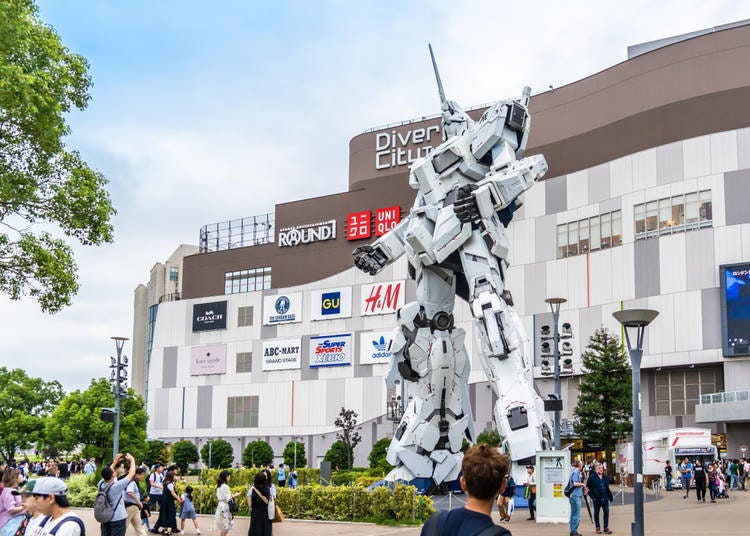
Odaiba is not a theme park like Disneyland but is an amazing place that has a variety of different attractions and things to do that can be fun for the whole family at a fraction of the cost. Here there is a replica Statue of Liberty Statue and Gundam Statue - in addition to other incredible sights. Some of the most popular things to see or do in Odaiba include Joypolis, an indoor amusement park , Legoland, Madame Tussaud’s Wax Museum , a trick art museum , kids play area, science museum , maritime museum , a variety of shopping complexes, restaurants, game center and more. The Odaiba area is easily reachable by the Yurikamome elevated train which is recommended as you can see a great view of all the surrounding area of Odaiba and Rainbow bridge.
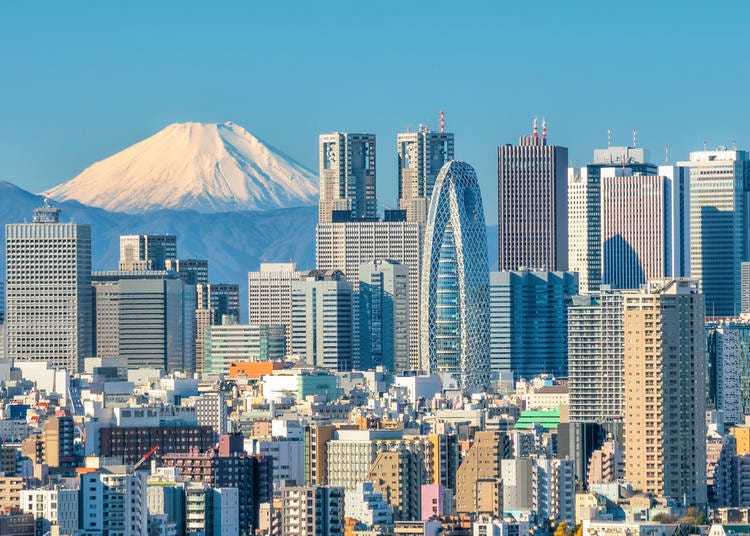
Tokyo is a big and elaborate city with many things to experience so there will always be something to do while here. Depending on your schedule, your tastes and tolerance for crowds and congestion you may want to adjust your itinerary accordingly. If you are looking to stay away from the pricier and mainstream tourist destinations and check out more of the places off the beaten path than this list should give you an idea of some of the alternatives that are available. Regardless of whether you stick to the main tourist attractions or explore more local spots, Tokyo is definitely a safe, fun and massive city you will never forget. Happy adventures! *The above article is based on information from January 2020
Written by:

Sohail Oz Ali
Sohail Oz Ali is a Canadian Youtuber, author and blogger who has lived in Hokkaido, Nagoya and now resides in Chiba. Between visits to Karaoke and revolving sushi restaurants, he enjoys walking his dog, watching Japanese love dramas and teaching English. You can also find him roaming the streets of Japan looking for the next big YouTube video trends.
- Category Other Sightseeing
- How To: Sightseeing
Share this article.
Limited time offer: 10% discount coupons available now!
Recommended places for you.

Jukuseiniku-to Namamottsuarera Nikubaru Italian Nikutaria Sannomiya
Kobe, Sannomiya, Kitano
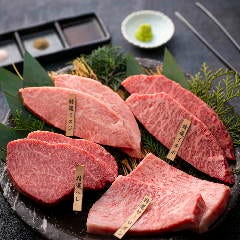
ISHIDAYA Hanare

Yoshida Gennojo-Roho Kyoto Buddhist Altars
Nijo Castle, Kyoto Imperial Palace
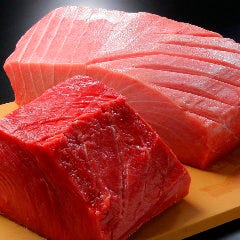
Kamesushi Sohonten
Umeda, Osaka Station, Kitashinchi

Osaka Aquarium KAIYUKAN
Zoos, Aquariums & Botanical Gardens
USJ, Nanko Port
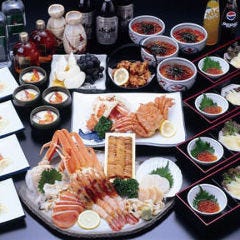
Rukku and Uohei
Sapporo / Chitose

A Complete Guide to the JR West Kansai Area Pass

The Complete Guide to the Kintetsu Rail Pass

15 Must-Try Restaurants in Ikebukuro: From Aged Yakiniku to All-You-Can-Eat Sushi, Plus Adorable Animal Cafés

Opened in Spring 2024! What to do at Tokyu Plaza Harajuku Harakado

The CASIO S100: How CASIO's Masterpiece Calculator Redefines Business Elegance With Japan-Made Reliability

Everything You Need To Know About the Kyoto-Osaka Sightseeing Pass
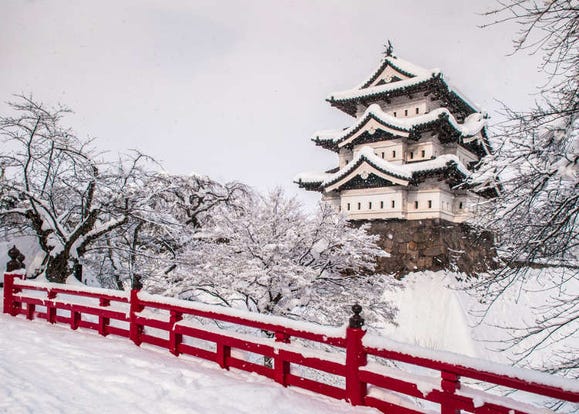
Aomori Bucket List: Top 10 Things to Do in Aomori, Japan's Northern Nature Paradise!
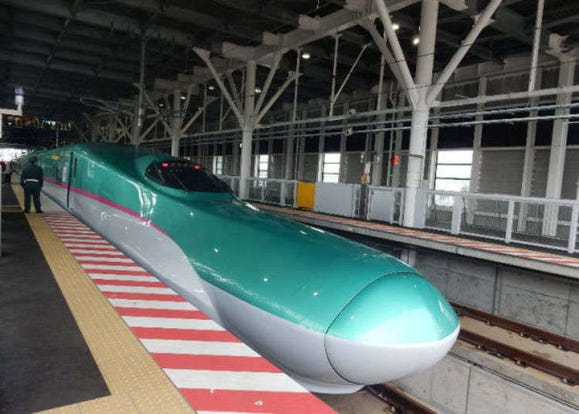
How to Travel From Tokyo to Hokkaido: Best, Easiest, Cheapest Ways to Get to Sapporo Compared

Kamaishi Japan: Kamaishi Unosumai Recovery Stadium and Sightseeing Spots in Japan’s Rugby Town
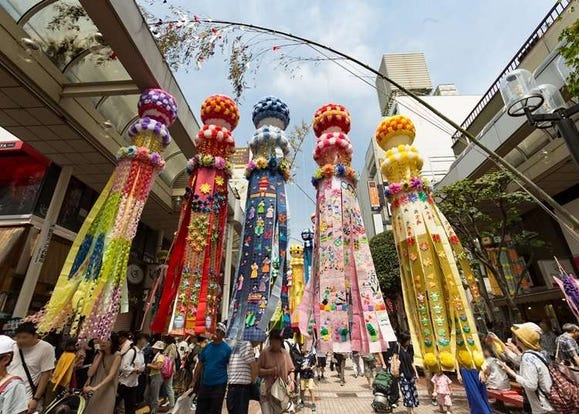
Summer In Sendai: All You Need To Know When Traveling To Sendai Between June And August!
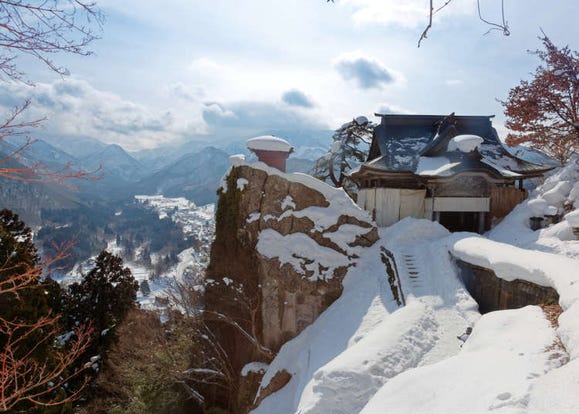
Travel Guide to Yamagata Prefecture: Popular Destinations, Fun Activities, Hotels & More
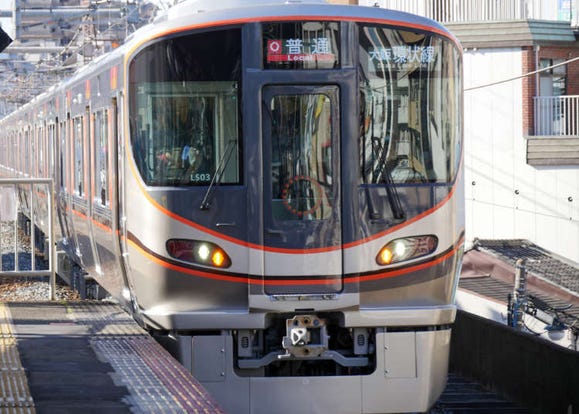
Discovering Osaka's Loop Line: 6 Spectacular Sightseeing Spots for Tourists
- #best sushi japan
- #what to do in odaiba
- #what to bring to japan
- #new years in tokyo
- #best ramen japan
- #what to buy in ameyoko
- #japanese nail trends
- #things to do japan
- #onsen tattoo friendly tokyo
- #best coffee japan
- #best japanese soft drinks
- #best yakiniku japan
- #japanese fashion culture
- #japanese convenience store snacks
Flash report of reservation status →

- Kyoto Tourism
- Kyoto Hotels
- Kyoto Bed and Breakfast
- Kyoto Vacation Rentals
- Flights to Kyoto
- Fire Ramen Kyoto - Menbaka
- Things to Do in Kyoto
- Kyoto Travel Forum
- Kyoto Photos
- All Kyoto Hotels
- Kyoto Hotel Deals
- Last Minute Hotels in Kyoto
- Things to Do
- Restaurants
- Vacation Rentals
- Travel Stories
- Rental Cars
- Add a Place
- Travel Forum
- Travelers' Choice
- Help Center
BAD FOOD - tourist trap! - Fire Ramen Kyoto - Menbaka
- Asia
- Japan
- Kinki
- Kyoto Prefecture
- Kyoto
- Kyoto Restaurants
“BAD FOOD - tourist trap!” Review of Fire Ramen Kyoto - Menbaka

HORRIBLE FOOD. This review is purely based on the food- we had friendly staff/knew it would be a tourist trap. Just thought food must be good for the good reviews. Terrible ramen. Truly do not waste your time.
- Excellent 769
- Very good 183
- Terrible 27
- All languages
- English (752)
- Chinese (Sim.) (134)
- Chinese (Trad.) (117)
- More languages
- English (752)
- Chinese (Sim.) (134)
- Chinese (Trad.) (117)
- Italian (74)
- Spanish (65)
- Japanese (49)
- French (48)
- Portuguese (12)
- Russian (6)
- Indonesian (2)
- Norwegian (2)
4 - 8 of 1,075 reviews
We were looking for some authentic Japanese ramen in Kyoto, and this is definitely THE spot to go. The food is delicious and the staff are so friendly, the owner asked us where we were staying and gave us directions back as well as a brochure of places to sight see at. Just an incredible experience and cheap for the amount of food you get

Totally recommended if you are in Kyoto! I went for the special set, though you can just get the normal one and still enjoy the essence of their services. They were all warm. The services were magnificent! You may want to expect that the ramen is a bit pricey (not that much!), but you have already come all the way to Japan anyway, so why not spending a bit more for a remarkable experience :)

I feel conflicted about leaving a less than positive because the owner was so gracious and inviting and the experience is super unique. But my honest assessment is that the ramen is very subpar (I’d give it 2 out of 5) and the price is very high considering subpar ramen. You’re basically paying for a video of ramen lighting on fire and a unique experience.
Nearly 2 hour wait to get in on a cold and drizzly night… would have left after an hour but debated whether we’d committed enough time to waiting to leave or stick it out. Stuck it out but then worried about what actually caused the fire and was it safe to consume??? Googled and could t really find any answers. It was fun but over priced, taste was ok but wait was ridiculous so given these few factors wouldn’t go again even though we kind of enjoyed it.
Travelers who viewed Fire Ramen Kyoto - Menbaka also viewed
Been to fire ramen kyoto - menbaka share your experiences, owners: what's your side of the story.
Own or manage this property? Claim your listing for free to respond to reviews, update your profile and much more.
Browse nearby
Differentville
Why Have the Same Holiday as Everyone Else?
19 Unusual, Non-Touristy Things to do in Kyoto
Sharing is caring!
Kyoto, the city of over 1600 temples, including the beautiful gold-leaf clad Kinkakuji and the giant zen garden that is Ryoan-ji. Wander its tranquil streets soaking in years of …..snore….sorry dropped off for a bit there.
Yes, embarrassed as I am to say it, Kyoto may be a fantastic historical city containing some of Japan’s most incredible sights, but most of the things you’re ‘supposed’ to see in Kyoto, simply don’t float my boat.
As such, when we decided to add Kyoto to the itinerary for our last trip, I decided to dig about a bit and find some more unusual or non-touristy things to do in Kyoto.

I wanted to find fun things to do in Kyoto that didn’t involve temples – and when I did go to a shrine or temple, I wanted there to be something a bit intriguing about it.
That was actually pretty easy – there are a LOT of unusual temples in Kyoto.
In fact, with a bit of delving, I found absolutely heaps of unusual things to do in Kyoto. So many in fact, I didn’t get around to all of them in the time I had.
So, if you’re like me and the normal list of things to do in Kyoto doesn’t get you excited about visiting this beautiful city, here’s my guide to 18 other more unusual things to eat, see or do in Kyoto – it could change your view of the city and its temples forever.
- Fun and & Unusual Things to Do in Kyoto
1. Find Your Favourite Stone Person at Otagi Nenbutsu-Ji
2. be wowed by the tiny cocoon people, 3. eat fire ramen, 4. go hunt monsters, 5. have a cloud coffee, 6. bless your relationship in the magic stone, 7. go drink with a monk, 8. make a deer bow, 9. soak in the railway onsen, 10. check out the kimono forest, 11. pray for good hair, 12. eat an octopus with an egg in its head, 13. find the pom pom temple, 14. go to the doll restaurant, 15. admire some moss, renting your own kimono, 17. eat food that looks like gemstones, 18. ride the zen garden train, 19. visit the miffy bakery, sharing is caring.
Okay, so, you might be disappointed that with all that preamble above the first thing I’m telling you to visit is a shrine, but honestly, this place is fabulous.
Tucked away in the hills above Arashiyama it’s inhabited by 1200 small weather-worn stone people – known as rakan – every one of which is totally different.
I wasn’t expecting the amount of fun someone has had carving these.
When you see them from a distance you think they all look the same, but close up, not only do you realise they have different faces and shapes conveying their personalities – some of them even have props.
There is one carrying a tiny cat/bear thing, two friends are drinking sake – there’s even one with a tennis racket!

It turned out to be the highlight of our day and my favourite of all the Kyoto shrines and temples I checked out,
Don’t miss it.
The address of Otagi Nenbutsu-ji is Fukatani-Cho, Saga Toriimoto, Ukyi-ku, Kyoto.
It costs 300 yen to get in and is open from 8am to 5pm
We walked there which takes you through a really quaint residential area full of traditional old houses and beautiful gardens.
If you don’t want to walk, you can also get the 62,72,92 and 94 buses – it is quite a way up the hill so that might be a good idea if you’re already worn out.
Mind you, if we hadn’t walked, I wouldn’t have found the next thing on my list of unusual things to do in Kyoto, and that would have been a real shame.
So, there we were wandering up the hill to Otagi Nenbutsu-ji when we went past the most amazing sight.
Attached to a wall by a small shop was an entire Japanese street scene laid out in a glass case with the people parts played by tiny white weeble-like creatures.
It took me a minute before I realised they were made from silk cocoons.

The level of detail on this is amazing.
Not surprisingly, it was created by the owner of Mayumura, a shop that specializes in selling little cocoon creatures.
I don’t normally buy souvenirs but I really wanted one of these – and each tiny figure only costs 200 yen making them a veritable bargain.
Interestingly, when the family that owns the shop first told friends they were going to open in this area, known as Saga Arashiyama, they were told it could never be a success as the area was full of ghosts and no one would ever brave the place to visit them.
Thankfully, now enough people wander past for it to be a success – and the only spooky thing we saw when we were up there was a guy walking his dog in these shoes! How on earth does he balance?

This is the shop you’re looking for – it is marked on google maps.

If you’re not going to Otagi Nenbutsu-ji, there’s also a second shop selling the tiny cocoon creatures on the main street in Arashiyama.
This is owned by the younger brother of the first store – and it’s also known as Mayumura.
To find out more about both shops and the family that own them check out this interview with them .
I spend months researching the trips I’m going to write about on this blog, months, so, when, about three days after I got home from my 2018 I found out about something seriously cool that I missed out on, the sulk is massive.
This is what happened with Fire Ramen!
After all, If you want a moment that sums up Weird Kyoto perfectly, what better than having your dinner set alight!!!
Obviously, you know what stopped me from getting there for a bit, but finally, on my 2023 trip I managed to get there – and it was everything I hoped!
Yes, I know it’s a fuzzy photo, but, it’s from a video!

Fire ramen is the specialty of a restaurant called Menbaka Fire Ramen, located slightly north of Kyoto Castle.
The idea is simple – you’re served a bowl of light chicken, pork, and soy broth full of green onions, slices of pork, and noodles – and a layer of oil on top.
The chef then sets light to the oil.
This cooks the onions and pork giving everything a seriously smokey taste.
It costs 1350 a bowl and other sets are available – including one for 2260 yen which includes, as the restaurant puts it ‘a cool badge’.
If you do want to go you’ll find it at Menbakaichidai. 757-2, Minamiiseyacho, Kamigyo-ku, Kyoto-Shi, Kyoto.
It’s open from 11am-3pm and 5-9pm, closed on Tuesdays and they don’t take reservations. It’s also a super small restaurant so you won’t be allowed to linger. They allow 30 minutes per guest for the fire ‘show’ and the eating!!
Check out our longer post on it here.
Yokai Street is part of Ichijo-Dori, a traditional old shopping street directly west of Kyoto’s Imperial Palace – but what makes it special is the monster statues dotted along it.
The legend of Yokai Street is that many years ago a load of household goods that had been thrown away turned into spirits and rampaged down Ichijo-Dori until they got calmed down by a local priest – now each of the shops has its own little protector in their honour.

I loved Yokai Street – from the little monsters to the quaint traditional shops it was probably the favourite thing I did in Kyoto.
If you want to see more pictures and learn about the monster-themed foods you can buy on the road, have a look at our full post on Yokai Street here.
Yokai Street is about a 20-minute walk from Fire Ramen so it’s easy to combine the two.
Oh if ever there was a drink made for Instagram this is it.
There’s a cloud of candy floss suspended as if by magic over your hot drink of choice – as the steam hits the floss, the sugar melts into the drink as if it’s raining.

Yes, it’s as fabulous as it looks!
Find it at Alpha Food and Drink, 327 Nishidaikokucho, Nakagyo Ward, Kyoto, Kyoto Prefecture 604-0063, This is fairly near Kyoto Castle.
2023 Update: Unfortunately, it looks like Alpha Food and Drink has closed down. I’m keeping it on here though in the hope that they’ll remerge once tourism in Japan picks up again.
The job of the paper-clad enkiri or enmusubi stone at Kyoto’s Yasui Kompira Gu temple in Gion is to bind or break relationships – enkiri means to cut while the word enmusubi covers all kinds of connections, ties and relationships – be that with other people or with things or habits.
You buy a piece of paper from the stall by the shrine and write your name on it. Then clutching your bit of paper you climb through the hole in the shrine – just make sure you go the right way round.
If you want to cement a good relationship you need to go through the hole back to front. If you want to break off a bad one, then go the other way.
Thankfully we read this before I sent my friend Kendall the wrong way through the hole and doomed her and her boyfriend!
Personally, I was more worried that my curvier than the average Japanese butt might get stuck in the stone than about my love life so The Boyfriend and I will just have to take our chances!

You’ll find the stone at the Yasui Konpari-Gu Shrine in Gion – it’s open 24 hours but go early evening and you have the place virtually to yourself – this is generally the case if you want to make any popular attraction in Kyoto less touristy.
We met someone else there who had already visited twice during the day but gave up climbing through because there were too many people.
She was very pleased to just find only us there in the early evening.
The salon & bar SAMGHA is run by Takahide Haneda, who also happens to be the head priest at the nearby Kounji Temple.
Not surprisingly, considering the owner’s day job, this place is seriously calming.
It’s dimly lit, you summon Haneda san by ringing a little bell on the table (usually used to summon monks to prayer) and conversation is more, quiet chatting than raucous drinking games.
The bar serves mostly Japanese wines, whiskeys, and beers.

Monastic he may be, but he’s definitely not a charity – this was the most expensive night out I had in my whole trip to Japan – costing about £40 for one glass of wine and some nibbles!
But, hey I got to drink Japanese wine, I ate cheese made from grapes and I went home with a monk’s business card so all was right with the world.
You’ll find salon & Bar SAMGHA at 526 Yamada cho, Kamigyo-ku, Kyoto City, Kyoto City.
Normal opening hours are from 6pm to midnight
It’s closed on Sunday and on the odd special day.
Find their opening hours on their website. It’s only in Japanese so you’ll need to use google translate.
About a 70-minute easy train ride south from Kyoto is the city of Nara – and, in the park at Nara are rather a lot of deer just wandering about.
To say they are used to people is an understatement. They’ll happily wander up to you looking for a treat of the deer cookies they sell in the park – and, if you bow at them, they bow back.
Cue hours of fun.

It was absolutely hosing it down the day we went to Nara but the bowing deer made the drenching worthwhile!
Watch out though, while they are fairly calm most of the time, they can get a bit aggressive when you are carrying deer cookies, and they do nip.
Things you normally find at railway stations – trains, bookshops, coffee places.
Things you don’t normally find at railways stations – little pools of warm water in which you can soak your feet, yet, tucked away at the end of the platform at Arashiyama station, is exactly that.

Simply go to the ticket office and pay your 200 yen fee to use the spa.
You’ll be given a little bag with a free towel and a ticket that shows you’ve paid.
Then, head down the platform, take off your shoes (giving your feet a little wash before you put them in the spa itself), and relax while you watch the cutesy trains of the Keifuku Electric Railroad go back and forth around you.
It’s completely random, absolutely bonkers and I totally loved it – as did my feet which by this point hated me as I had literally walked 200km in the last 10 days.
Once you’ve finished soaking, pop your shoes back on and you’re handily right by the train that takes you to the famous zen garden temple at Ryoanji, or Kitano Hakubaicho, the nearest station to explore Yokai Street.
There’s also another footbath by the Togetsu-kyo Bridge.
While you sit and soak your feet at Arashiyama station, you’ll notice the outside of the station is surrounded by plastic tubes about 6ft high filled with coloured fabric.
This is the Kimono Forest an art installation by artist Yasumichi Morita.
There are over 600 pillars in all and 32 different fabrics on display, and if you’re in Arashiyama at night, the tubes light up

I actually preferred the Kimono Forest to the real Arashiyama Bamboo Forest and which, in my opinion, does not live up to the Instagram hype around it!
Yes, it’s beautiful, but it’s very small and I felt a bit let down when I actually got there.
I did at least manage to see it ‘deserted’ – we got there at about 8am and there were only about 10 other people there – when we came past again at 11 am it was absolutely heaving.
Again, I go back to my number one Kyoto rule – go early!
I did, however, get a chance to play with the watercolor setting on my phone (see first pic above). Fun things to do in Kyoto number 19 – fiddle about with your camera!
At the end of the Arashiyama Bamboo Forest, you’ll find a small shrine called Makami Jinja.
It doesn’t look much, but if need any help in the hair department this is the prayer place for you.
Whether you’re starting a hairdressing business, need some guidance on a do, or trying to stop the hands of time and prevent balding the gods here will listen.

You can either write your wishes on an ema – one of the small wooden plaques you find at any shrine or temple – or, if the priest is around, they will actually trim off a piece of your hair as an offering to the gods – and in return, the deities will help you out with your every follicular wish.
I loved all the offbeat Kyoto shrines I found, there really is a place to pray for everything.

Okay, so so visiting Nishiki Market is a touristy thing to do in Kyoto, but that’s why this post is called Unusual and Non-Touristy Things to do in Kyoto. I like to keep my options open – and this one is definitely an unusual, offbeat Kyoto thing to do.
You’ll find these in the super busy – but absolutely enthralling – Nishiki Market.
I love markets so, Nishiki was my personal Kyoto must-see and it also turned out to be the perfect thing to do on a rainy day in Kyoto as it’s under cover.
The little octopi are served on sticks – and if eating an entire tiny octopus wasn’t odd enough, they come with a tiny quail egg stuffed into their head.
That was the worst bit for me as I intensely dislike boiled eggs!
The octopus itself isn’t actually that bad. It’s got a similar texture to squid and they are coated with some kind of sticky sweet glaze which gives the flavour a lift.
There are heaps of places in Nishiki that serve the little critters – and some of them will give you a sticker if you manage to eat one!

Probably the busiest and most touristy parts of Kyoto are the winding streets around the Higashiyama district.
You definitely won’t be alone up here – every road is thronged by people shopping, wandering about in kimono, temple hopping, and eating some of the super cute foods (like gold leaf ice cream) you can find nearby.
I wasn’t expecting to be surprised by much up here – but then we wandered into Yasaka Koshindo – and found an entire temple decorated with coloured balls!
Mind blown.

Apparently, if you write your wishes on one of the coloured balls and then hang them up – one of the three monkeys that guard the temple will grant your wish.
It’s a stunning place to see, but as with all Kyoto temples, if you want to get the place to yourself go as early in the day as you possibly can – it opens at 9am.
So you’ve always wanted to eat an omelette while being stared at by large plastic dolls – my friend, I have just made your day as I know exactly where you need to go!
Issen Yoshoku is a restaurant that serves only one dish. A kind of omelette/pancakey thing made from eggs, spring onions, dried shrimp, beef, and a few other bits and bobs (there’s a sign in the restaurant explaining all the details.
But if its singular menu wasn’t enough to set it apart from everywhere else, some of the tables inside the restaurant come with their own life-size kimono-clad dolls to keep you company.

It’s weird Kyoto at its best, a completely mad place – but actually, a welcome relief to see as it’s tucked between the super pricey and a bit intimidating Gion district and the cheap, but a bit sleazy area on the other.
I admit, when I read about this place I thought it was going to be on the sleazy side – I was expecting a place full of sad lonely old men that would go silent as we entered, so I was a bit surprised to find it wide open, brightly lit and right on the main street.
Check it out if you need a fairly cheap protein fix – and a heap of intriguing photographs.
You’ll find it at 238 Giommachi Kitagawa, Higashiyama-ku, Kyoto, Kyoto Prefecture 605-0073, Japan.
Officially the opening hours are supposed to be 11-3.00 weekdays and only open at night at weekends, but we went past on a weekday evening and it was open, so maybe check locally if you want to go in the evening.
Just when you thought I’d finished with the temples, there’s another one on my list – Giou ji, the moss temple
Yes, as if there weren’t already a lot of things in Kyoto temples covered in moss – this one is actually dedicated to the green fluffy stuff.
In fact, there’s a whole lawn full of it – not to mention the fact that it’s springing up on stones, roofs and pretty much anywhere else it can grab a hold with its little frilly feet.

Okay, if you’re not into moss, you might want to skip this one, but I quite like it!
However, if you’re REALLY into moss – there are actually about six more moss temples in Kyoto including one called Saihoji which is a Unesco-protected site and requires a reservation to visit.
Famous as the setting of a renowned Japanese novel, the booking system was brought in as too many people were trying to visit and the moss was getting damaged.
Ideally, book at least two months in advance of your trip and prepare to be a bit flexible as they only have set sessions each day.
It explains how you can book here – not, it’s not done online, you have to actually write to them.
I t costs 3000 yen to visit.
16. Head to Maiko Antiques
Located opposite what’s known as the boar temple (one of a couple of temples in Kyoto dedicated to helping people with sore legs!), this second-hand shop is worth a quick wander.
It’s full of quirky finds – and they have a collection of secondhand kimono and yukata for sale outside.
The official address is 157 Komatsucho, Higashiyama Ward, Kyoto, 605-0811, Japan

If you’d prefer just to rent a kimono for the day, that’s doable as well – as you can see by the heaps of pics of people wearing them, it’s super common in Kyoto (okay, so I know that kind of goes against non-touristy things to do, but, it’s pretty!).
There are lots of kimono shops you can hire from, but, we suggest you pick one close to the Hagashiyama or Gion districts as you’ll find some pretty backgrounds for pictures here.
This one fits the bill and offers all-day rental for a very reasonable price.
If you don’t trust your photography skills to capture the moment properly, there are also a number of kimono rentals that will add a professional photo shoot to the proceedings.
Take a look at one option for this , which offers shoots in the famous bamboo forest or around the Hagashiyama district here – and with packages for up to seven people you could make a family shoot of it. The price doesn’t include kimono rental so make sure you book that first to get your dates sorted.
If you want to know more about what to expect on your day out, then this guide to renting kimono in Kyoto gives you more advice.
Science nerds, heads up.
Every dish on the offbeat Kyoto cafe Usaginonedoko’s menu is designed to look like a crystal or other piece of rock.

Their most famous dish is their black Meteorite Curry – the prettiest is possible the Amythest Pannacotta (only available as part of a meal set)
it’s called Usaginonedoko and the official address is ウサギノネドコ Kyoto-fu, Kyoto-shi, Nakagyo-ku, Nishinokyo Minami Haramachi 37.
It’s closed on a Thursday (guess which was the day I was actually nearby) – ah, well at least its something else to add to my next visit to Kyoto!
Known as Kyo Train Garakua, this train that runs between Kyoto and Osaka at weekends is designed for you to experience the best Kyoto has to offer – while on the move!
It has carriages themed with cherry blossoms and maple leaves and, two of the carriages even contain zen gardens.

The train starts at Kyoto’s Karawamachi Station and takes 47 minutes to travel to Osaka – but, if you don’t want to go that far, you can use it to connect to the train to Arashiyama.
However, if you do this it doesn’t give you that long to explore the train while it’s moving, so, make sure you get to the platform 20 minutes before the departure time. You’ll then be able to wander up and down the train before it leaves.
We’ve written a more detailed post on using the Kyo Train Garaku on our Japan blog Japlanease. If you want more details, then, click the link above to head over there to check things out.
If you’re a fan of all things Miffy, you’re definitely going to want to stop off at the Arashiyama Miffy Sakura Kitchen on the main street in Arashiyama.
The shop next door sells all sorts of Miffy Merchandise – and you can fuel up for your spending spree with a Miffy bun!

Look how cute it is. The bakery does get quite long queues so get there early.
It’s also close to the Instagram famous cloud cake and coffee shop. I wish I had pictures for this but they REALLY sell out early!
A Few Extra Things to See
There were a few other unusual things to do in Kyoto that we didn’t manage to check out.
Kiyomizudera has a pitch-black room that aims to take you back to the womb, and another has a ceiling covered in bloody footprints, but with the time we had (and blisters literally on every toe by this point) we couldn’t quite do everything.
Hopefully, even without these though, I’ve given you enough ideas to change your image of Kyoto as a city full of wall-to-wall serious temples.
It really is a gorgeous place – with a totally different feel from Tokyo.
Talking of which, if you liked this post – and are also going to Tokyo, we have one on there to – here’s where to find a (long) list of weird, cute or unique things to do in Tokyo.
Oh – and we also now have a separate site just for Japan travel.
It’s called Japlanease and it’s aimed at making traveling to Japan a little bit easier so you’ll find heaps of great advice on traveling to Japan. Here’s where to find it.

Who Writes Differentville?
My name is Helen Foster and I’m a journalist and author living in Sydney.
My travel articles have been published in titles including The Australian, Body & Soul at the Sunday Telegraph, RAC Horizons, Jetstar magazine and more.
I like the weird, the wonderful and anything that makes me jump and down with glee like I’m about three. That’s what you’ll find here.
If you liked this post, why not share it on Pinterest so other people can find a heap of non-touristy things to do in Kyoto too.

12 thoughts on “19 Unusual, Non-Touristy Things to do in Kyoto”
What an awesome post….truly! So useful for my upcoming trip. I’ll try to get to fire ramen and I’ll send you a pic…. LOL
Thanks so much for the post! There were some really interesting things here. 🙂
Thanks. Was fun finding them all. Need to go back and do more. There’s a few things that aren’t in there yet.
This is SUCH an amazing post!!!! Thank you thank you thank you!
Glad you liked it and thanks so much for commenting.
Great post. Thanks so much.
Helen, Thank you so much for this post. I am right now in Kyoto and was just wanting to read something that would make me dump my bed and start exploring. And here I am running to explore the different side of Tokyo. Thanks a ton!
Hahaha. That makes my day. Sorry about the lack of rest. What did you visit?
Thank you for the awesome post! We are already adding everything you’ve mentioned to our “to do list”.
Loved this post!!
FYI, The Ukiyoe shop closed at the start of the pandemic.
Thank you for letting me know that. I’ve been checking things regularly but that is not on the map so I haven’t been able to see it. I’ve just booked my next trip so I can do a proper update ASAP.
Leave a Comment Cancel reply

IMAGES
VIDEO
COMMENTS
It gives four lessons a month for beginners but it's no tourist trap. It's all in Japanese and you're advised to get a translator if you want to know what the hell you're chanting about. ... Kyoto ...
The Truth About Kyoto as a Tourist Trap When I was in Kyoto just last week, I made a point of re-visiting almost all my favorite typical attractions. I watches sunset behind Gion's Yasaka Pagoda; I walked under the orange gates of Fushimi Inari Shrine ; I explored Arashiyama's Sagano Bamboo Forest (albeit at the crack of dawn and as the ...
Here is a list of the most crowded places in Kyoto, in order of most crowded first. Kiyomizu-dera Temple. Streets leading to Kiyomizu-dera Temple (especially Matsubara-dori) Fushimi-Inari-Taisha Shrine. Nishiki Market. Ginkaku-ji Temple. Kinkaku-ji Temple.
Kyoto to restrict tourists from entering areas of the Gion district. The restrictions to Kyoto's Gion neighborhood, where traditional geisha entertainers and their maiko (teenage apprentices) work, will roll out first, sometime in April. The area has long been a magnet for tourists hoping to catch a glimpse and take a photo of the performers ...
Trade Kyoto for Kanazawa. The pristine Higashi Chaya district of Kanazawa. Kyoto is undeniably one of Japan's top tourist magnets. However, the reality of its overcrowded streets can shatter the dreams of visitors hoping for a tranquil cultural experience. Moreover, the traditional charm of Kyoto is predominantly confined to the streets of Gion.
Nijo Castle. Robert Schrader. Like Kyoto Imperial Palace, Nijo Castle is the most unsung of Kyoto's top ten attractions, since it's not as selfie-worthy as Fushimi Inari Shrine or Arashiyma, nor as scenic as the Philosopher's Walk or Kiyomizu-dera. Yet Nijo Castle is as picturesque as it is historically important—it was built in the early ...
Hot take: Nishiki Market in Kyoto is a tourist trap with below average food. I have been there twice back in 2017 and 2018. I was there a week ago. I got there just after 10am so thankfully it was not too packed with people. I went to the stall where a lady was grilling eel.
The Kinkakuji we see today is a reproduction. Surviving the destruction of the Onin War (1467-1477), the original Kinkakuji burned down in 1950 by a young monk. As a result, the pavilion, although undeniably beautiful especially on a sunny day, feels a little lacking of the atmosphere that other Kyoto sights have.
Being the ancient capital of Japan, Kyoto is quite the tourist mecca.Having said that, Japan's idea of a tourist trap is very different from the European one. The tourists tend to be domestic rather than foreign and, such is the depth of tradition in Kyoto, tourists are generally respectful and reverent, rather than pushy.
Kyoto is full of many hidden and lesser-known places, including Tenryuji Temple, Kyoto Botanical Gardens, and Kameoka. Learn 20 lesser-known places boasting history, nature, and traditional charm, ideal for second-time travelers or those looking for unique places without crowds. Latest update : 2024.04.05. MATCHA_En.
a. p. s. There are certain shops and businesses around Kyoto that are clearly focused on tourists, and they often charge high prices or sell low quality goods, or both. To identify and avoid these places, you can search for the term Bottakurii which is the Japanese term for tourist trap. Also see Dos and Donts.
In Kyoto, my favourite 'non-tourist trap' is Kurama-dera and Kurama Onsen. a 45 minute local train ride will get you to the beautiful mountains. The temples perched atop are unlike what you'll have seen in Kyoto (since the hike is easy and outdoor, it is refreshing even if you are templed-out). On the way down, make your way to Kurama Onsen and ...
Kyoto, Japan's capital for more than 1,000 years until 1868, is not the only Japanese destination struggling with overtourism since Covid-19 restrictions were lifted last April.
Japan's worst tourist traps and where to go instead. The best destinations in Japan include serene traditional streets and ancient temples in places like Kyoto. In Tokyo, iconic "must-see" attractions such as the Tokyo Tower or the "exhilarating" experience of cruising in go-karts are hard to miss. However, while these activities ...
You may need to worry about the price, though… (^_^) From my experience, one of the over-hyped tourist traps in Kyoto is Ponto-chō: it is a truly remarkable spot to sample the feeling of the traditional Japanese streets… especially in the evening. But if you want to sample the Japanese cuisine… go a few streets away: the food will be ...
We made it to Kyoto, Japan and we're visiting the famous Arashiyama Bamboo Forest. It is so famous that it became a lot busier than we expected and we had to...
Three new articles on comfortable access to Kyoto's famous sightseeing spots! 24.04.2024. About Golden Week and Shinkansen. 23.04.2024. We added the new "Events in Kyoto" brochure (Apr 29 - May 12) 22.04.2024. Two new articles on the Umekoji Area! 19.04.2024. We will be joining the Japan Addict 2024 convention!
dokool. •. I think the idea of "tourist trap" comes from Americans going to the Caribbean and only spending time in resorts etc. The original tourist traps were roadside attractions (think 'Biggest Ball of Twine in Minnesota'), that were intended to get drivers off the highway and part them from their money.
If you plan to visit Japan, Tokyo is most likely at the top of your list for many reasons. Being the capital city of Japan, the center of business and one of the most important and iconic cities in the world, Tokyo is the ultimate urban destination. As the world's most populated city, Tokyo brings in millions of tourists every year and the trend is increasing. According to surveys by the ...
tenamonya popular teppanyaki restaurant in kyoto. entered the top 3 in japan for 3 consecutive years as best everyday meal. top of page. japanese. tourist trap? english. 予約・reserve. gf/ celiac. the reason/ about us. menu. directions.
Let me be clear: we are American tourists on our first trip to Japan - we are going to wind up at a lot of tourist spots. My goal is to avoid places that are both 1) crowded with tourists, and 2) bad or really inauthentic. This was spurned by some comments I saw on Nishiki market in Kyoto being crowded and having really bad food.
Fire Ramen Kyoto - Menbaka: BAD FOOD - tourist trap! - See 1,074 traveler reviews, 599 candid photos, and great deals for Kyoto, Japan, at Tripadvisor. ... This review is purely based on the food- we had friendly staff/knew it would be a tourist trap. Just thought food must be good for the good reviews. Terrible ramen. Truly do not waste your ...
18. Ride The Zen Garden Train. Known as Kyo Train Garakua, this train that runs between Kyoto and Osaka at weekends is designed for you to experience the best Kyoto has to offer - while on the move! It has carriages themed with cherry blossoms and maple leaves and, two of the carriages even contain zen gardens.